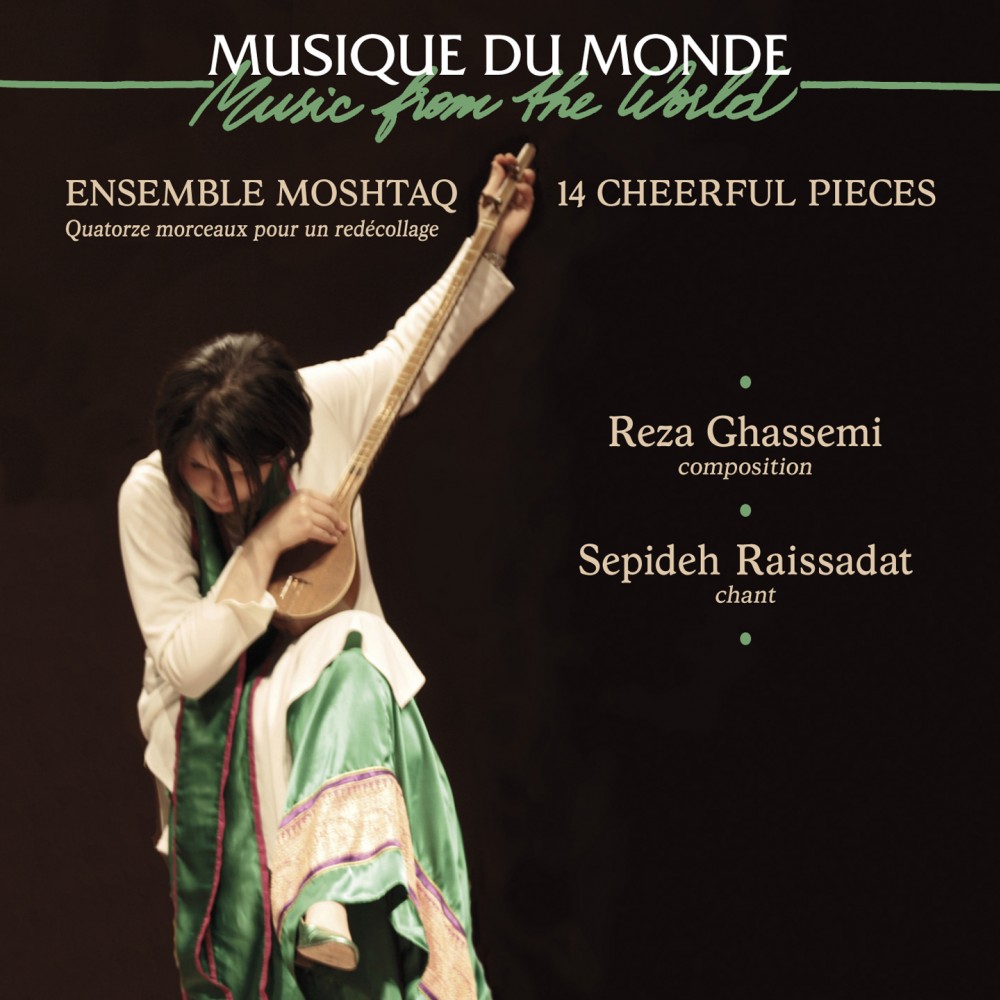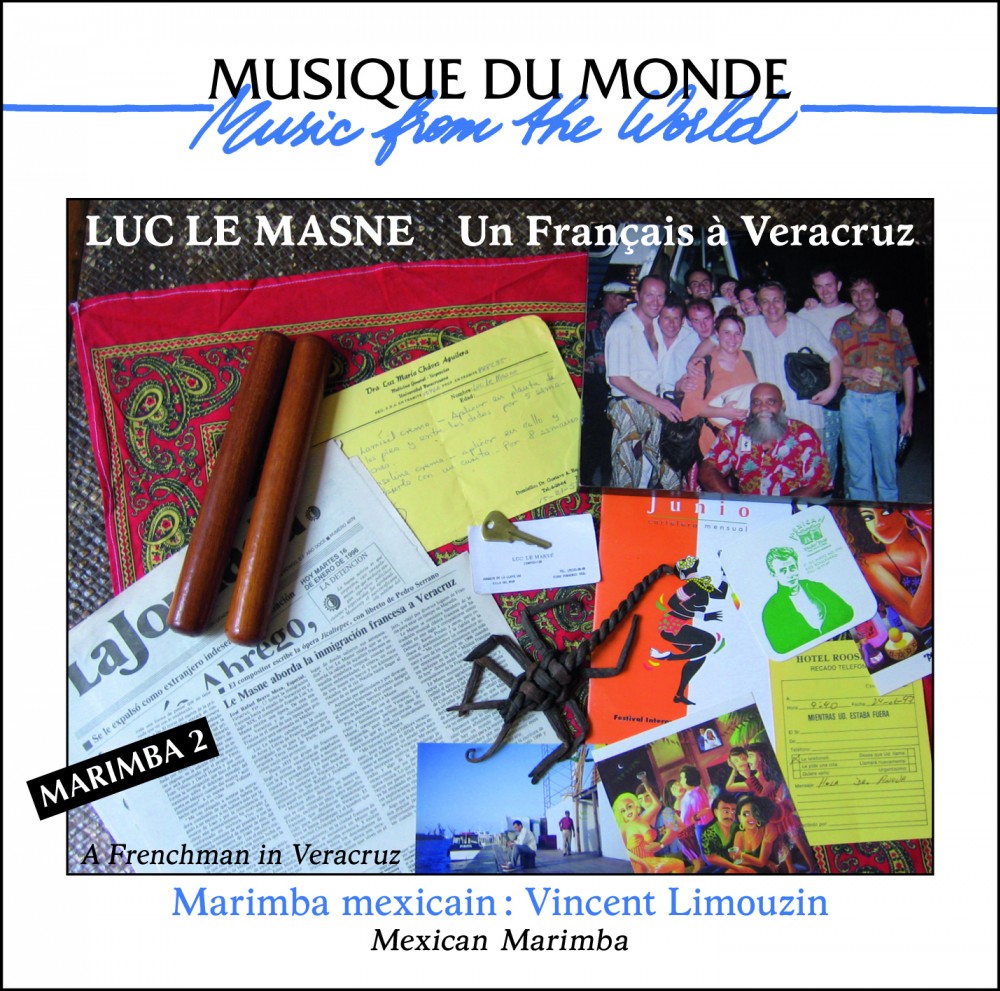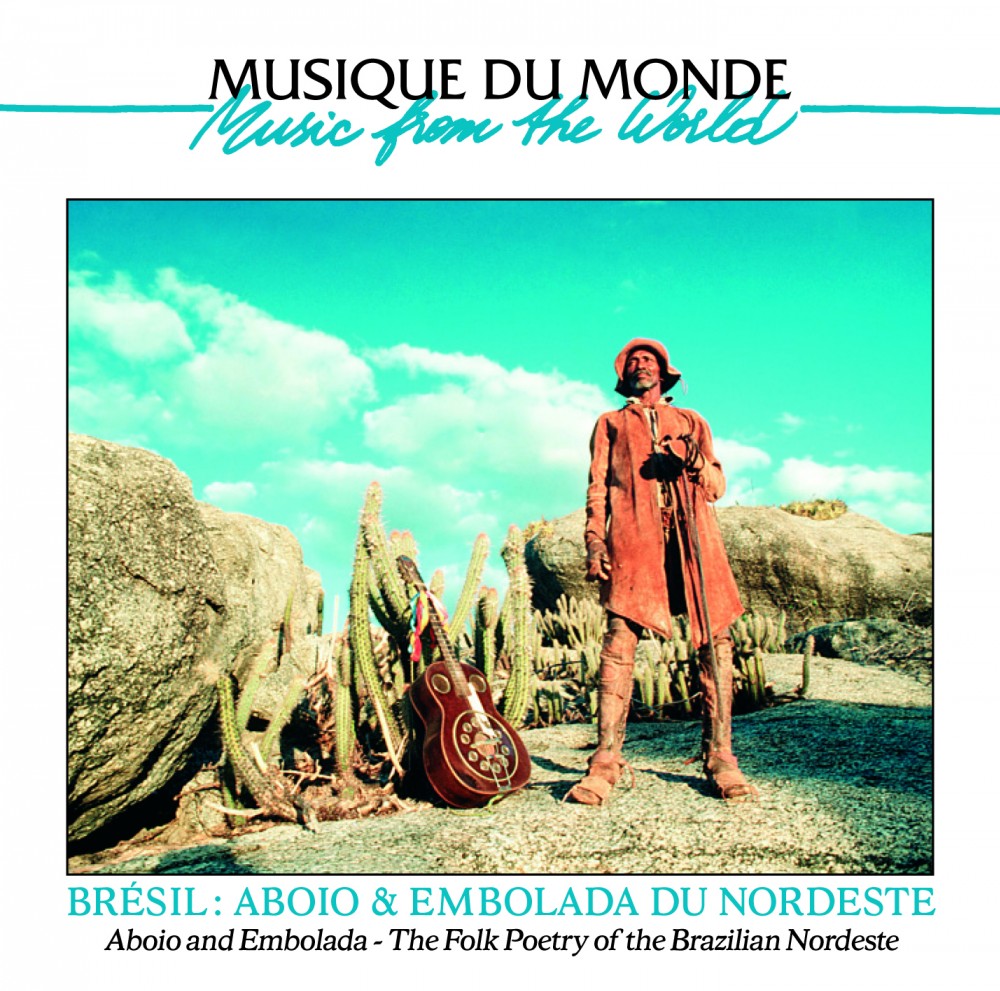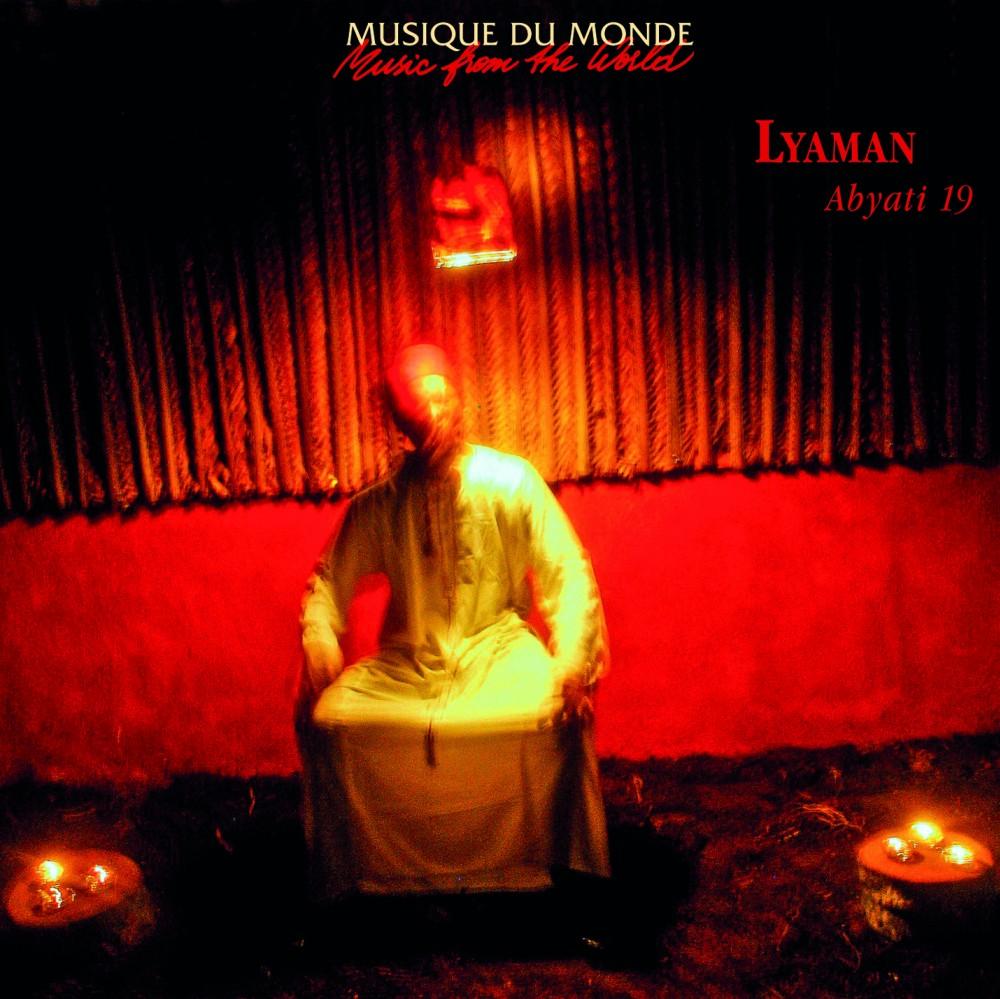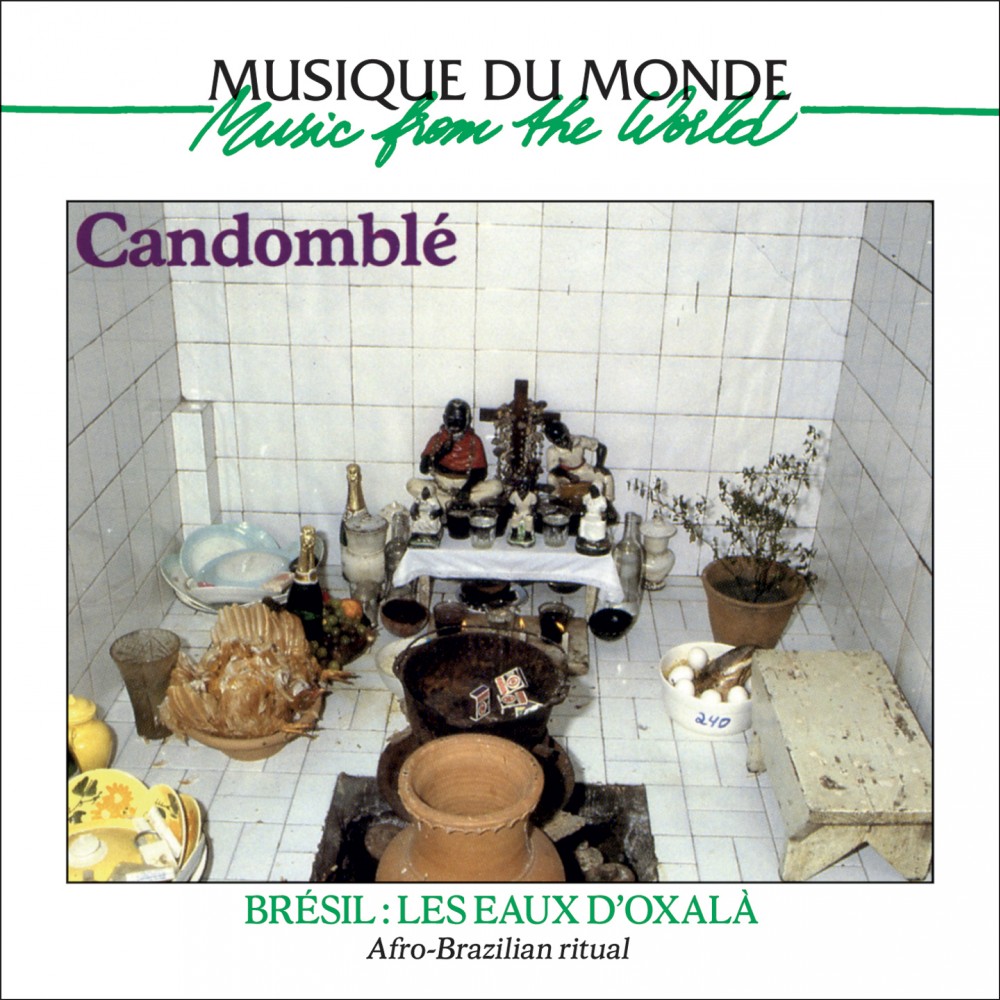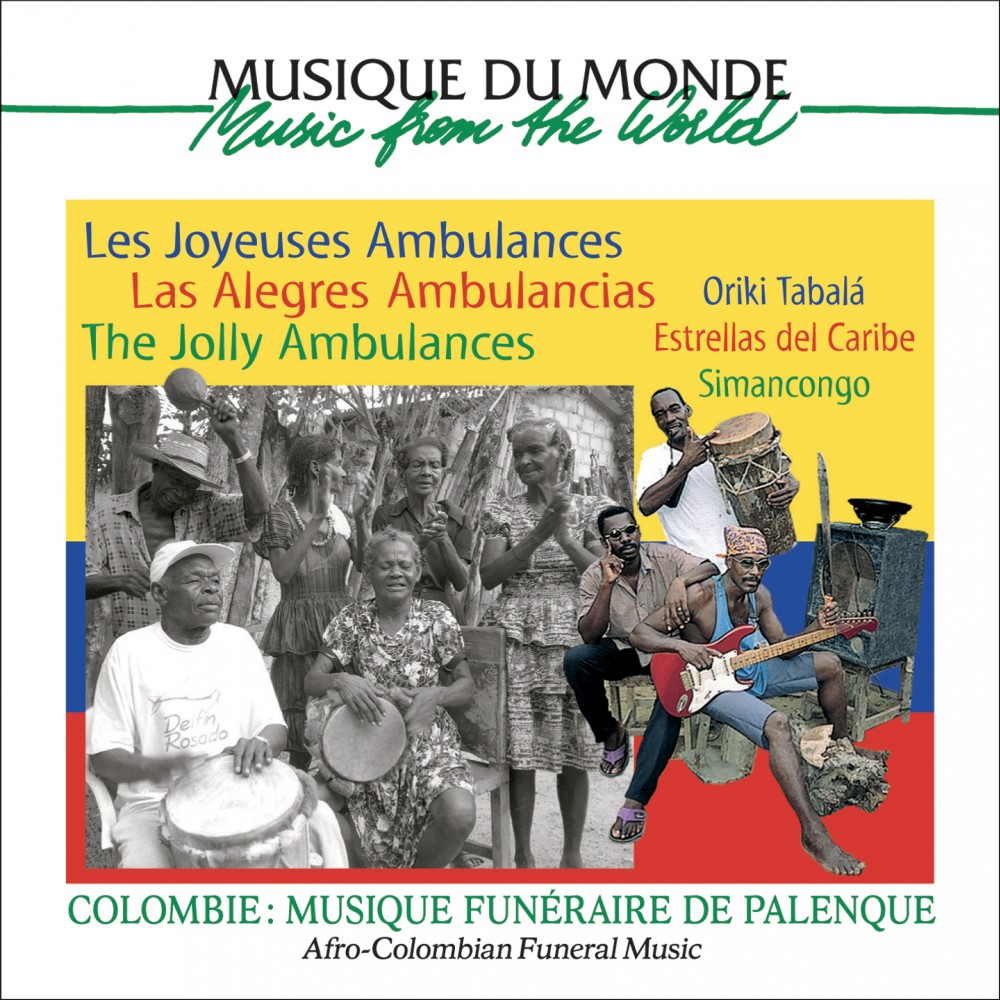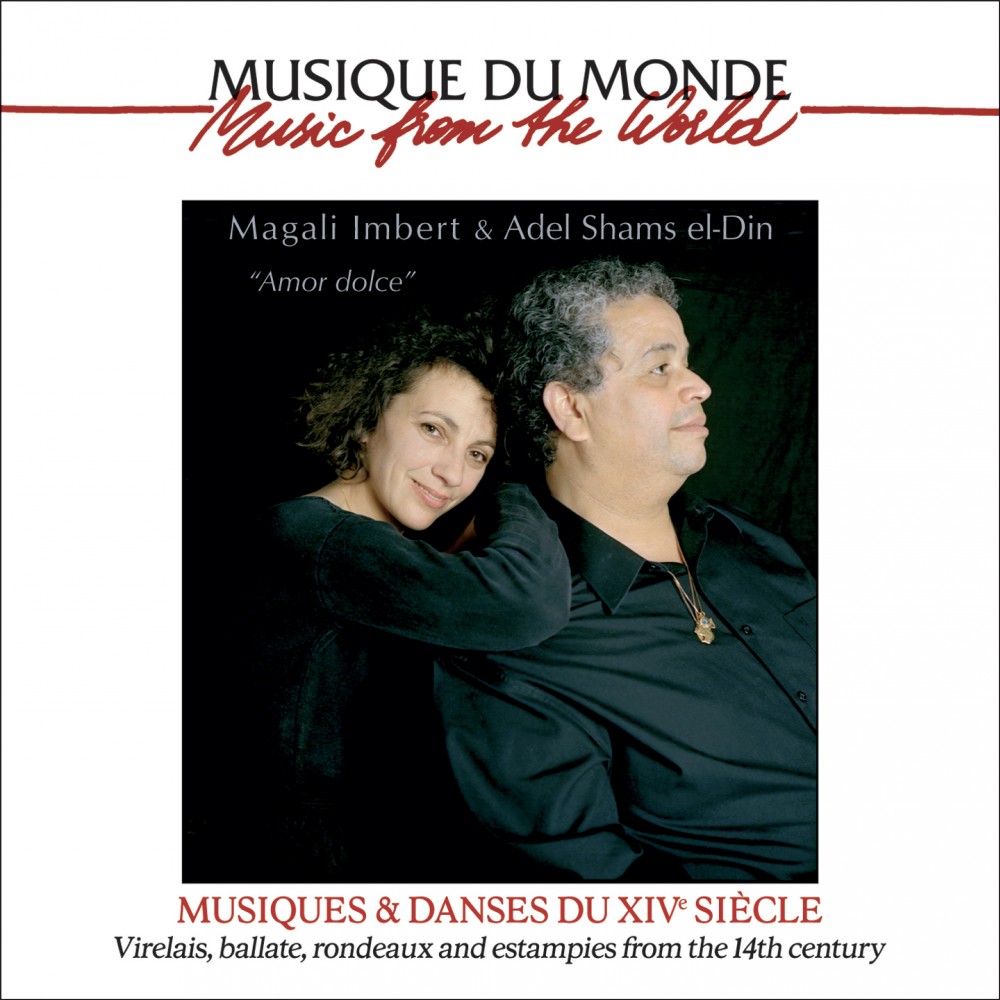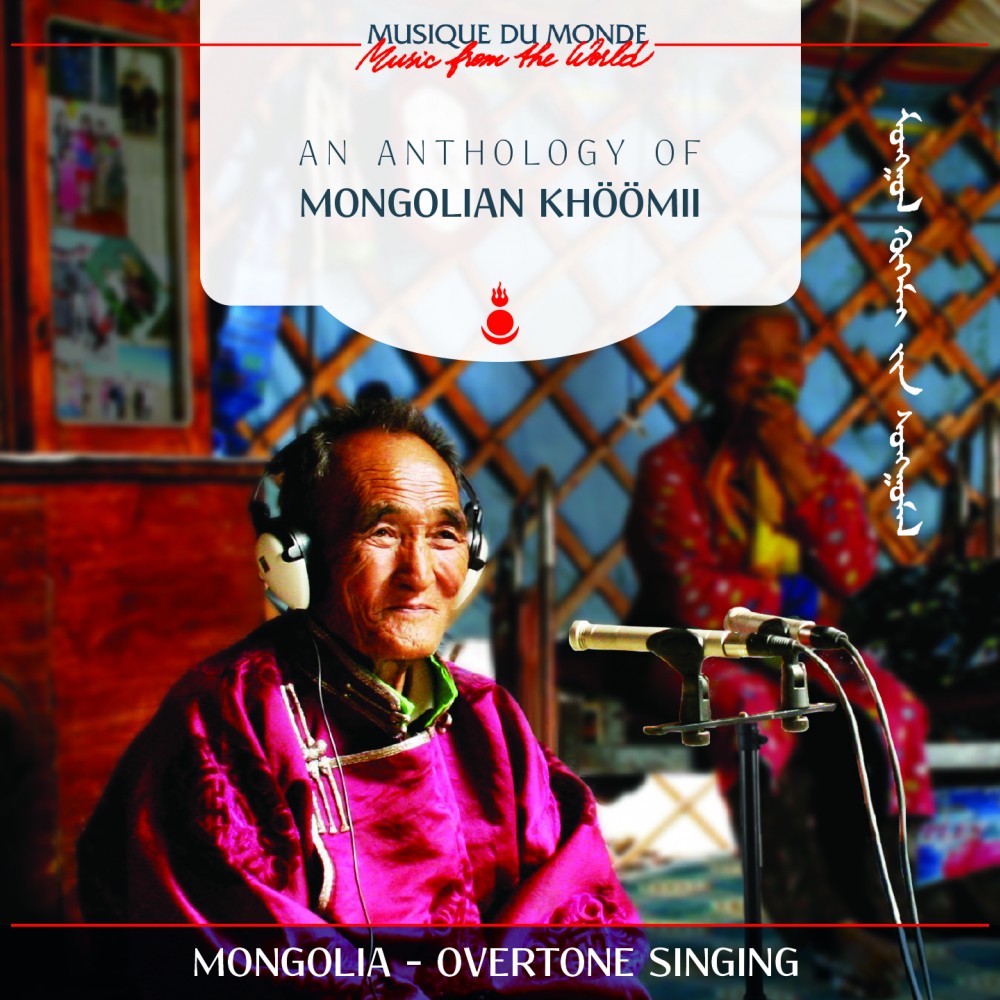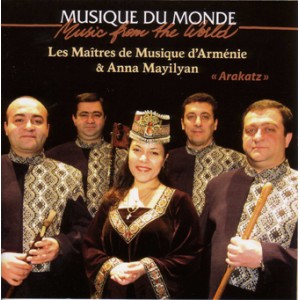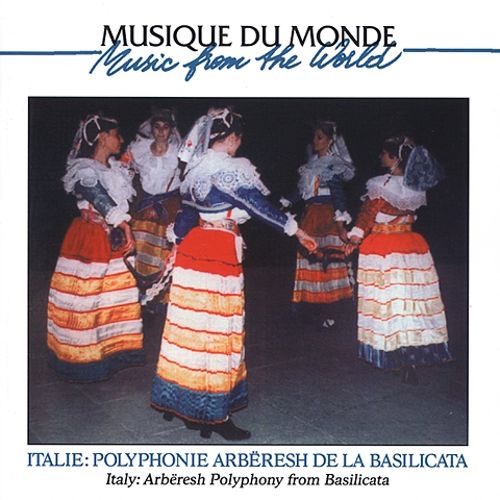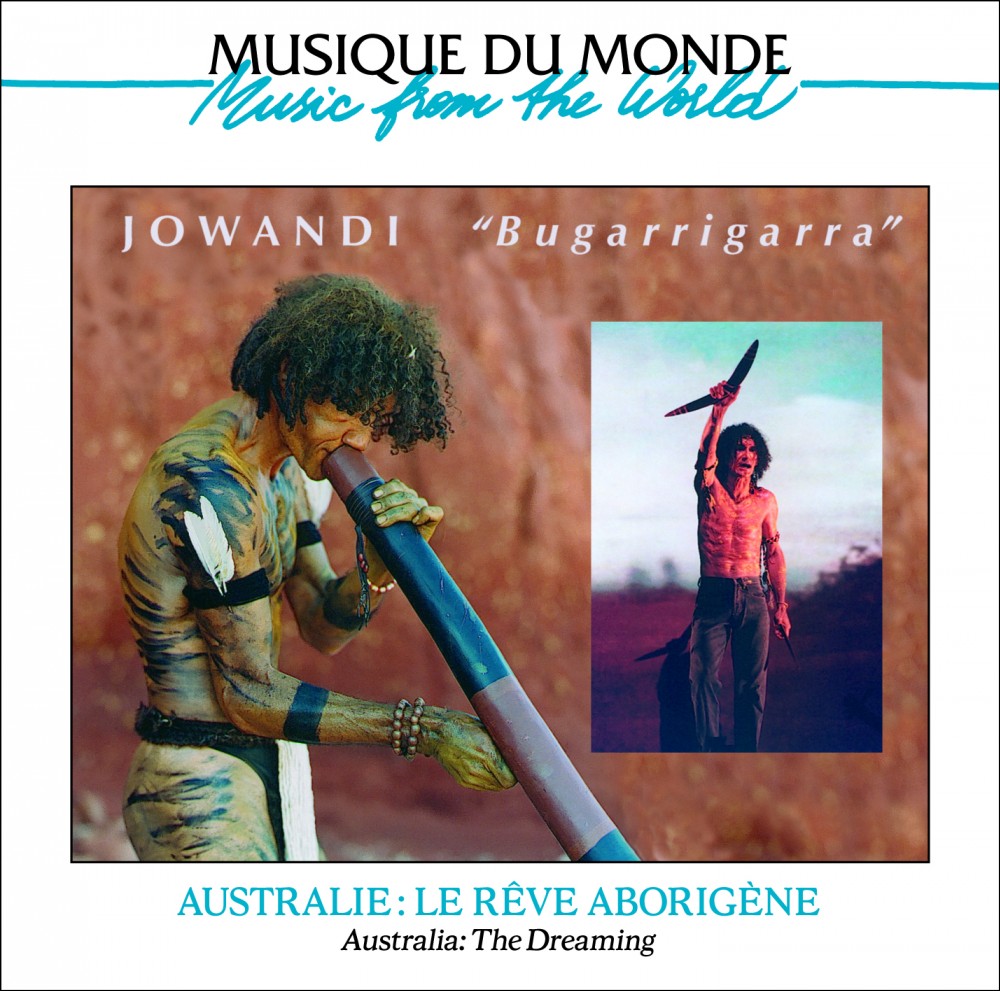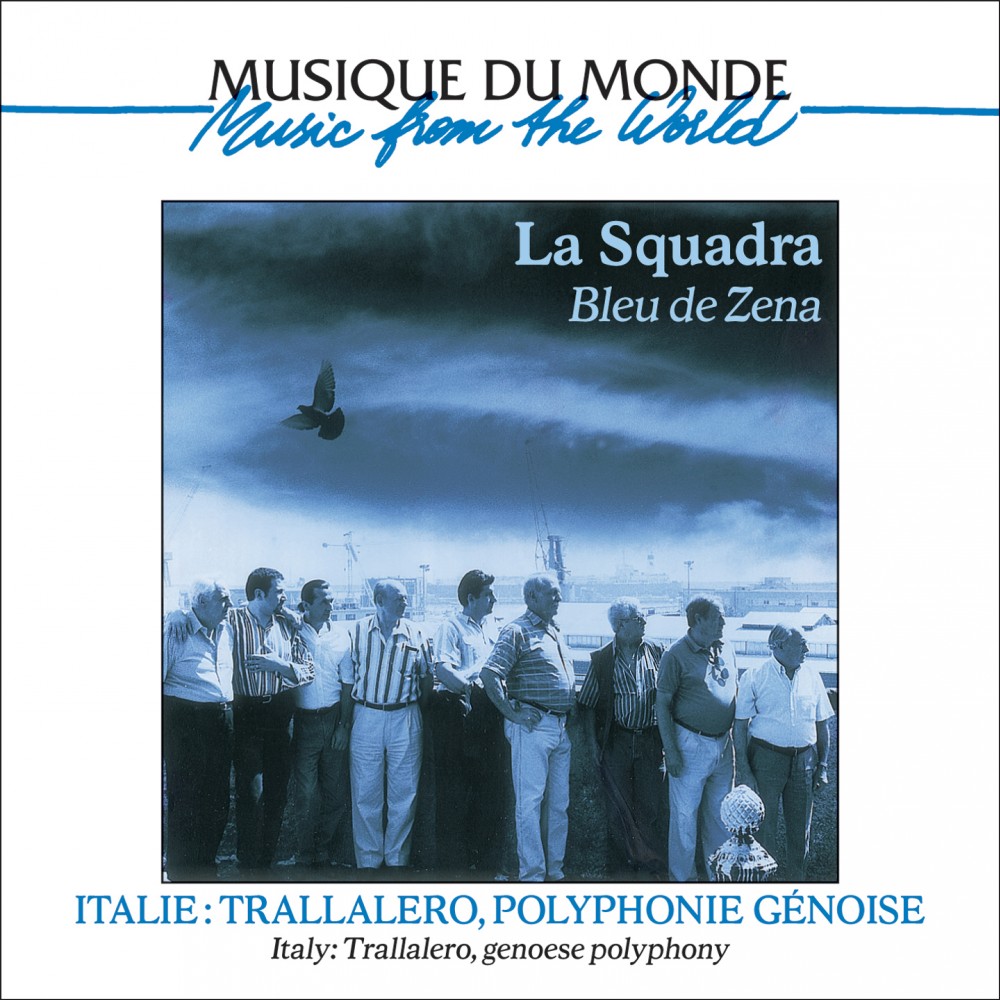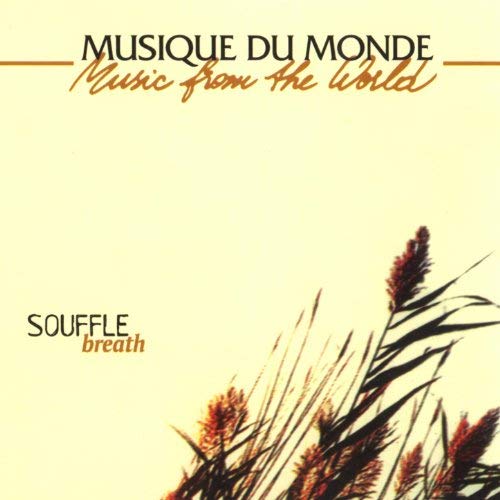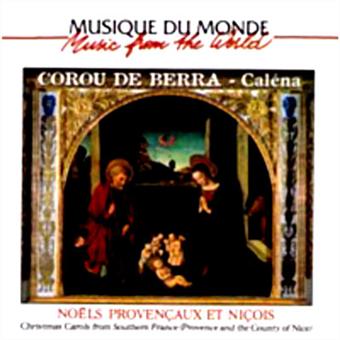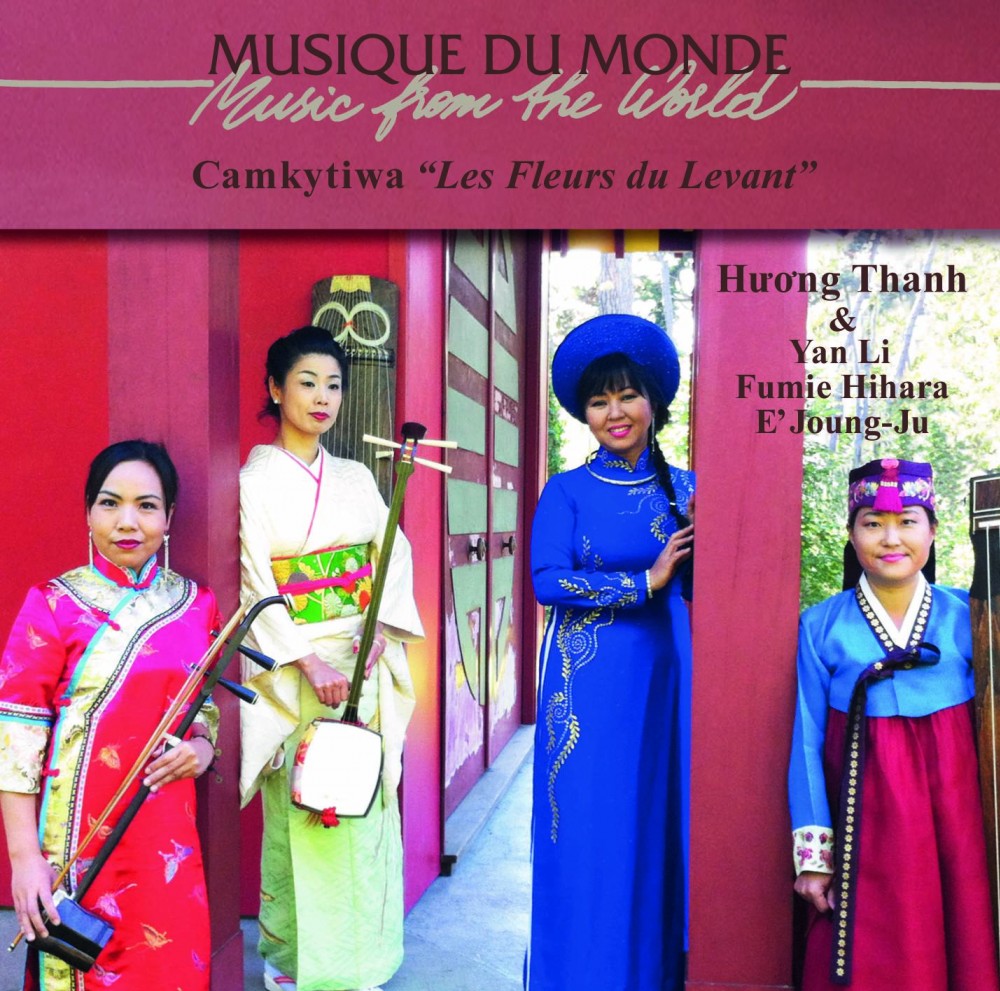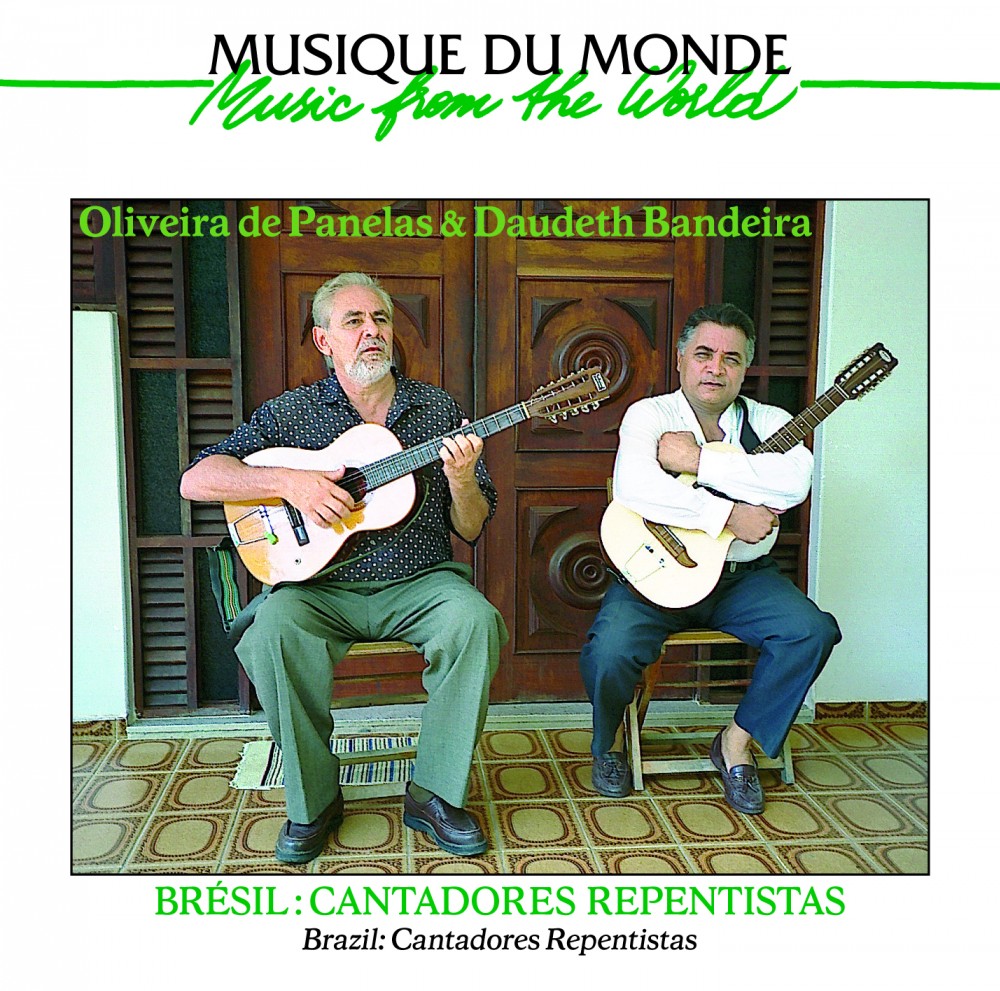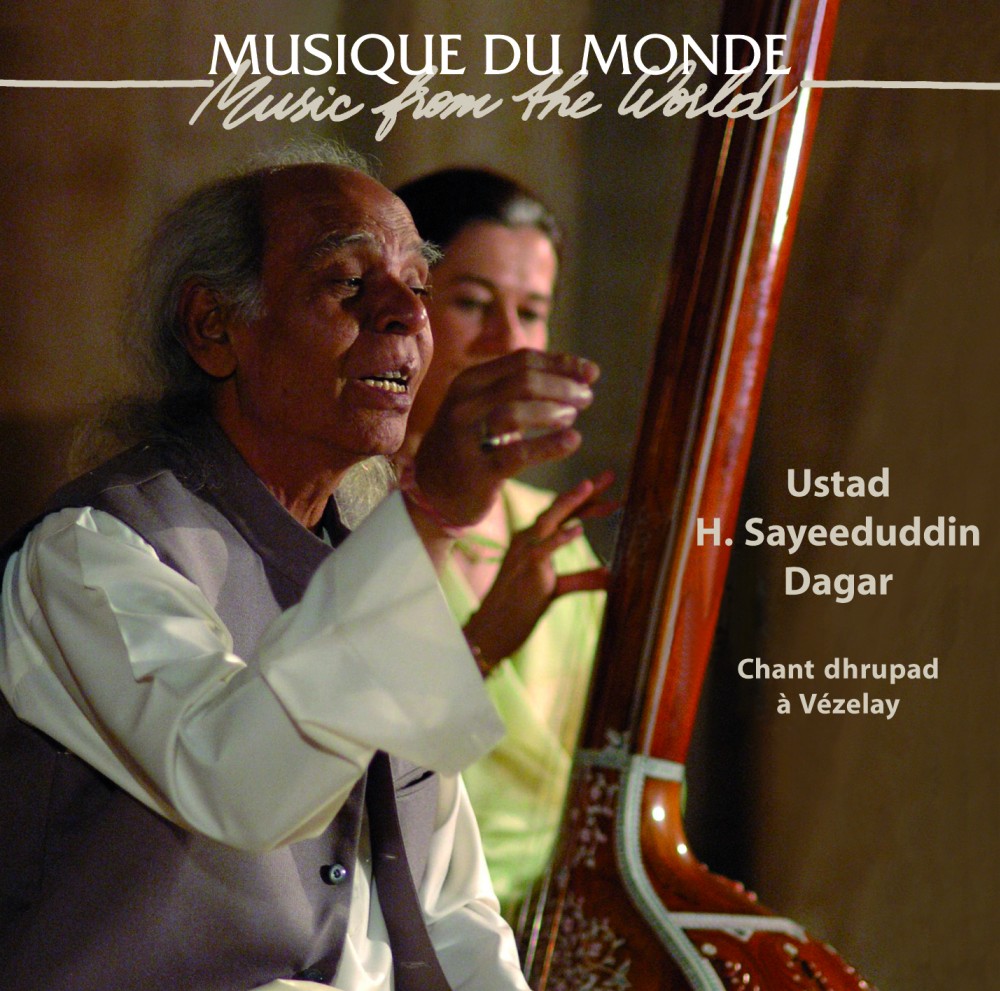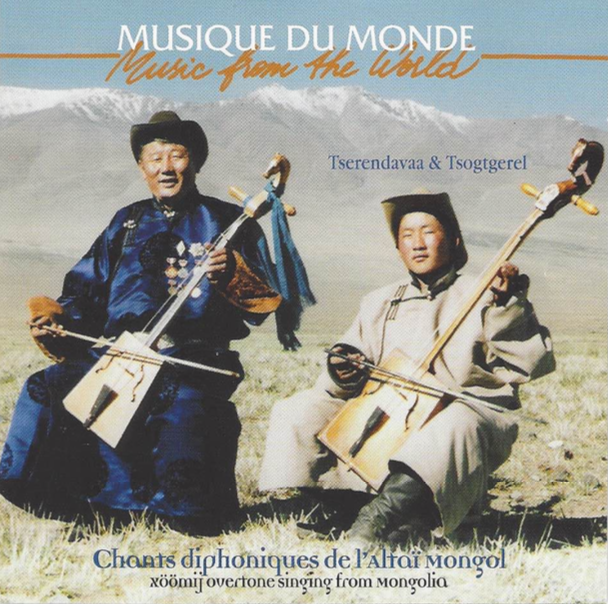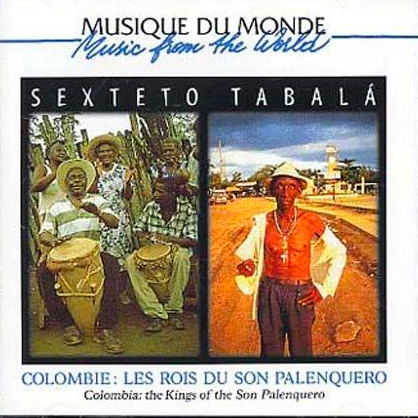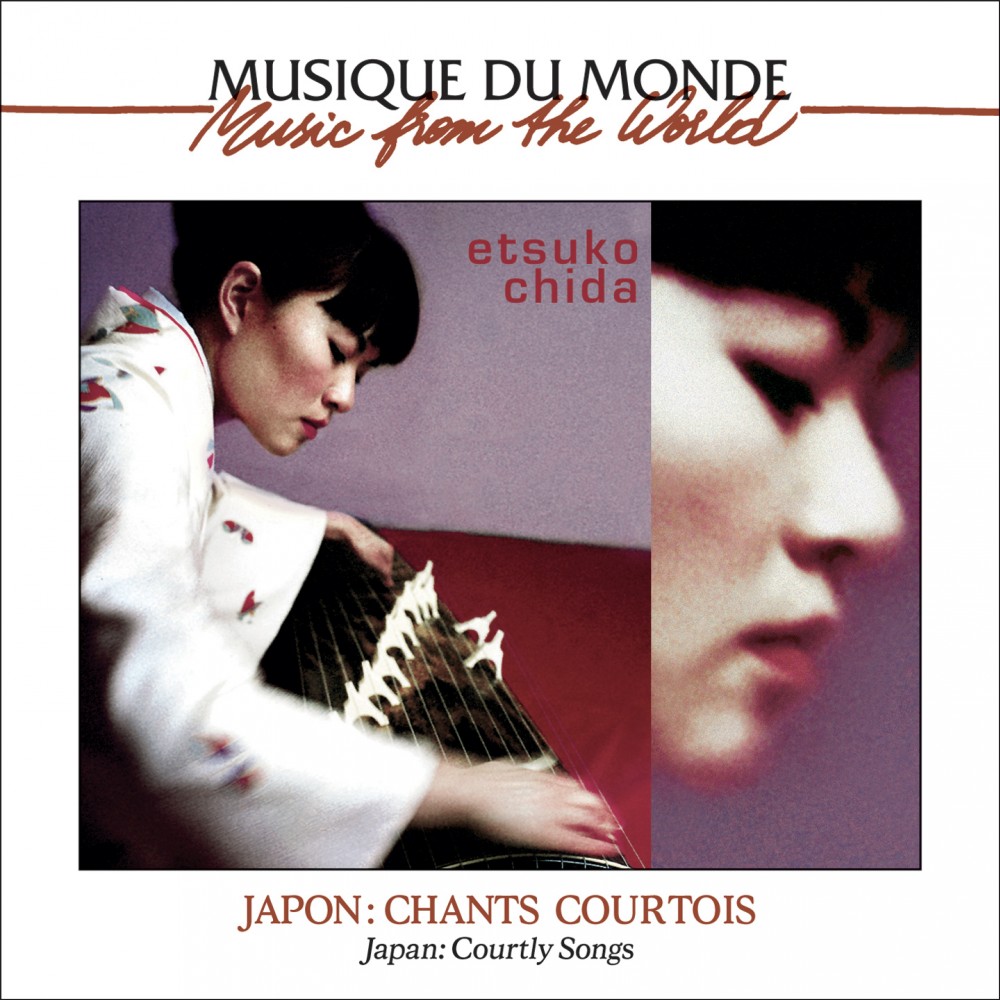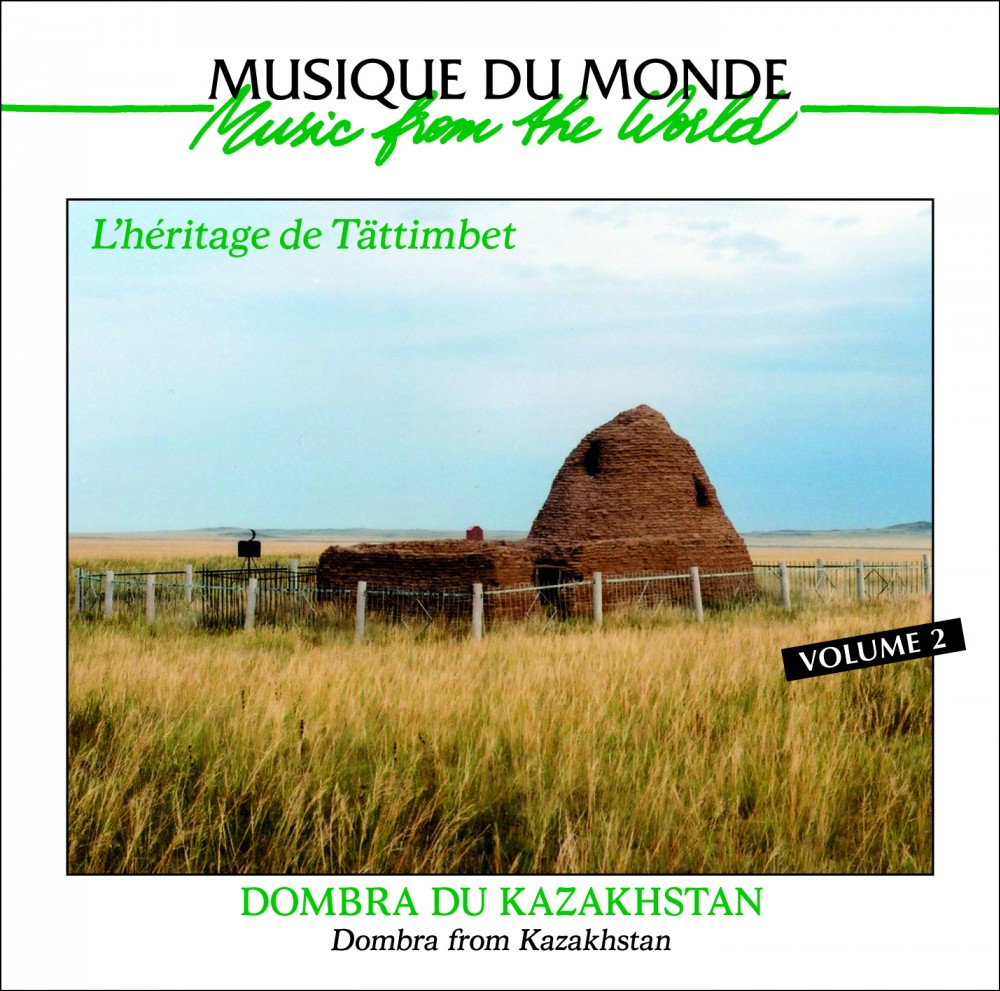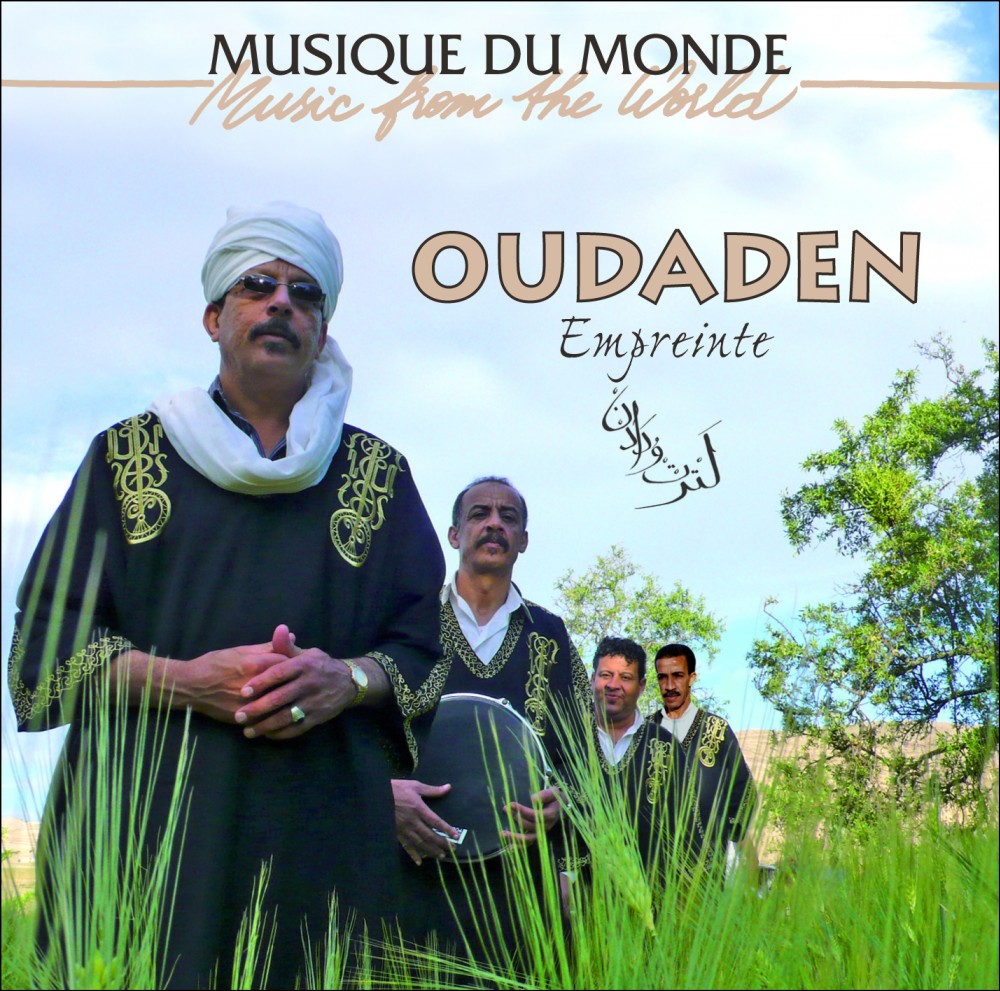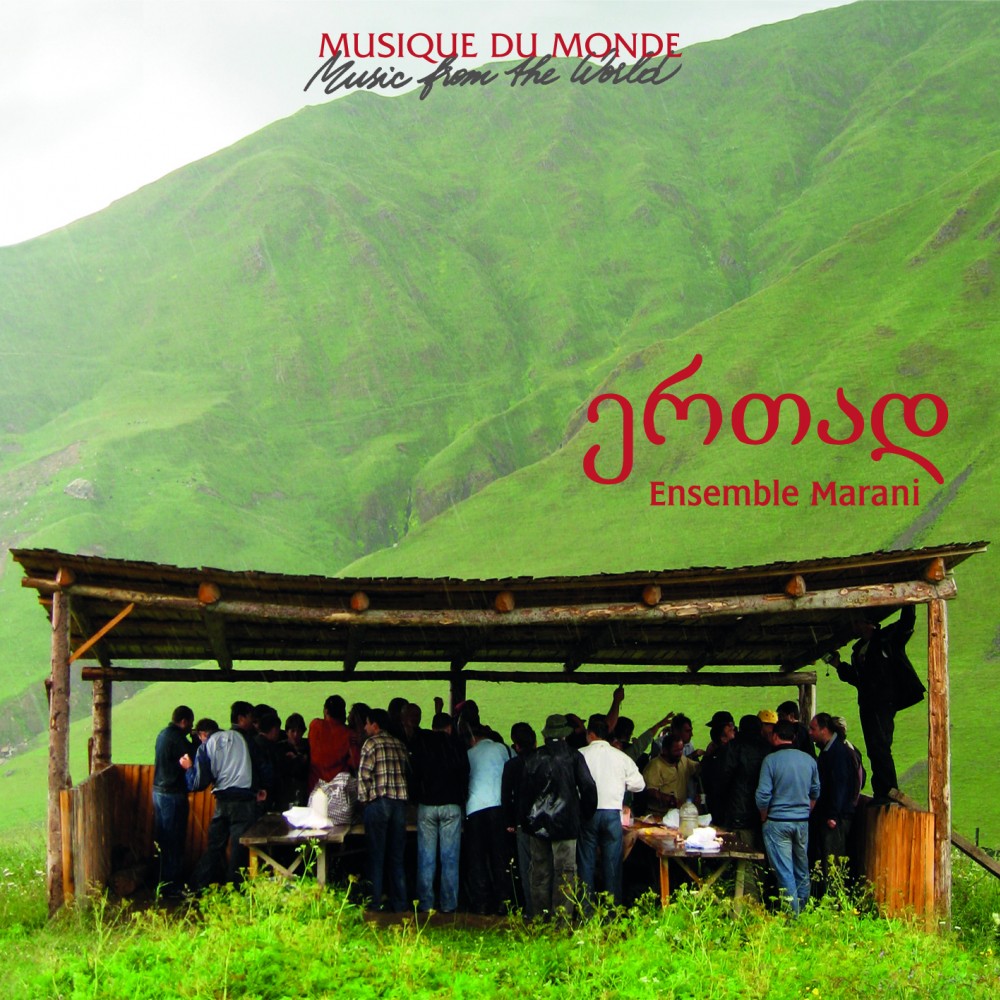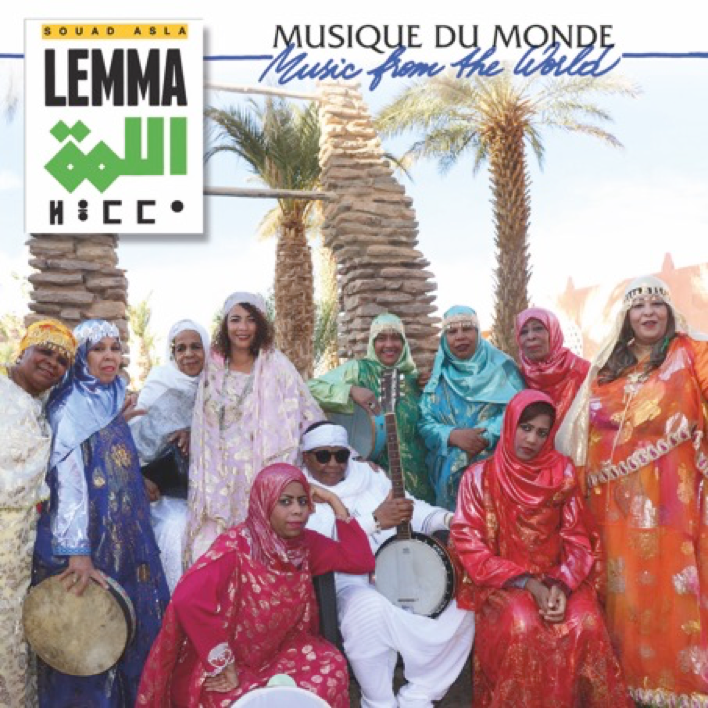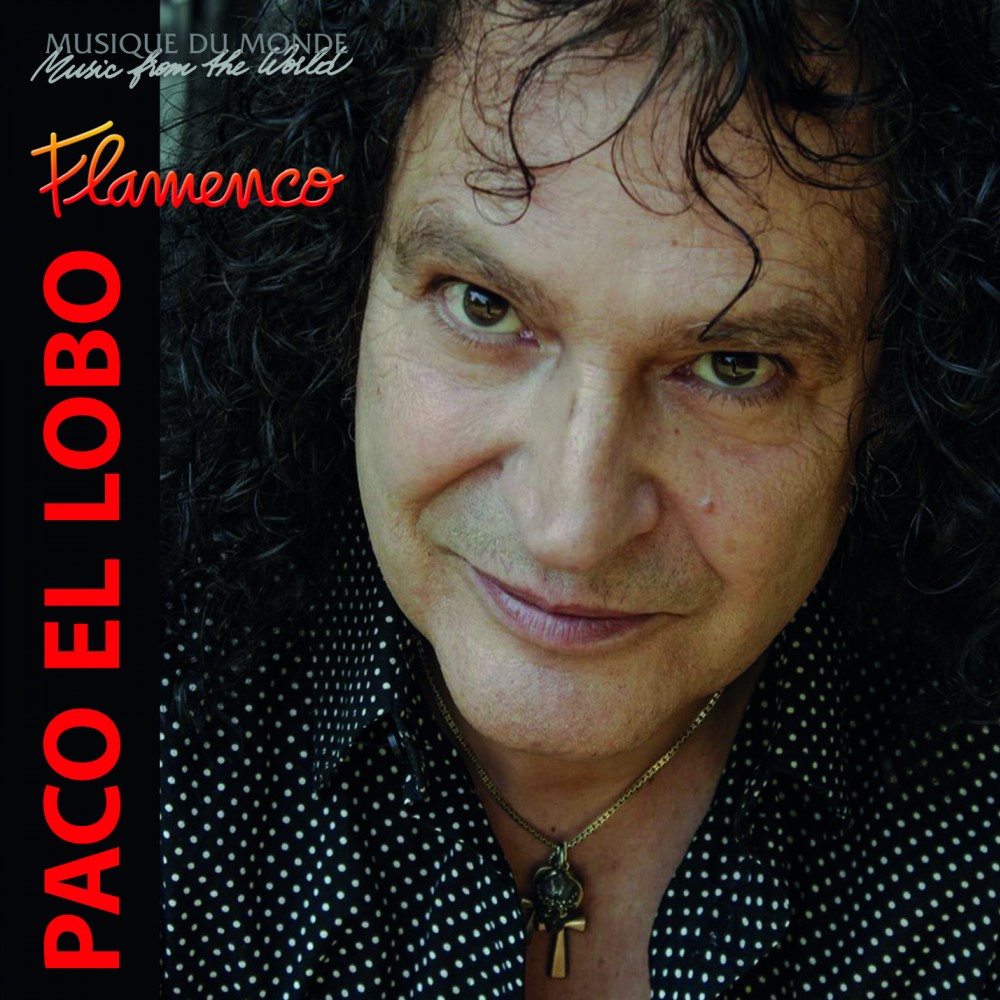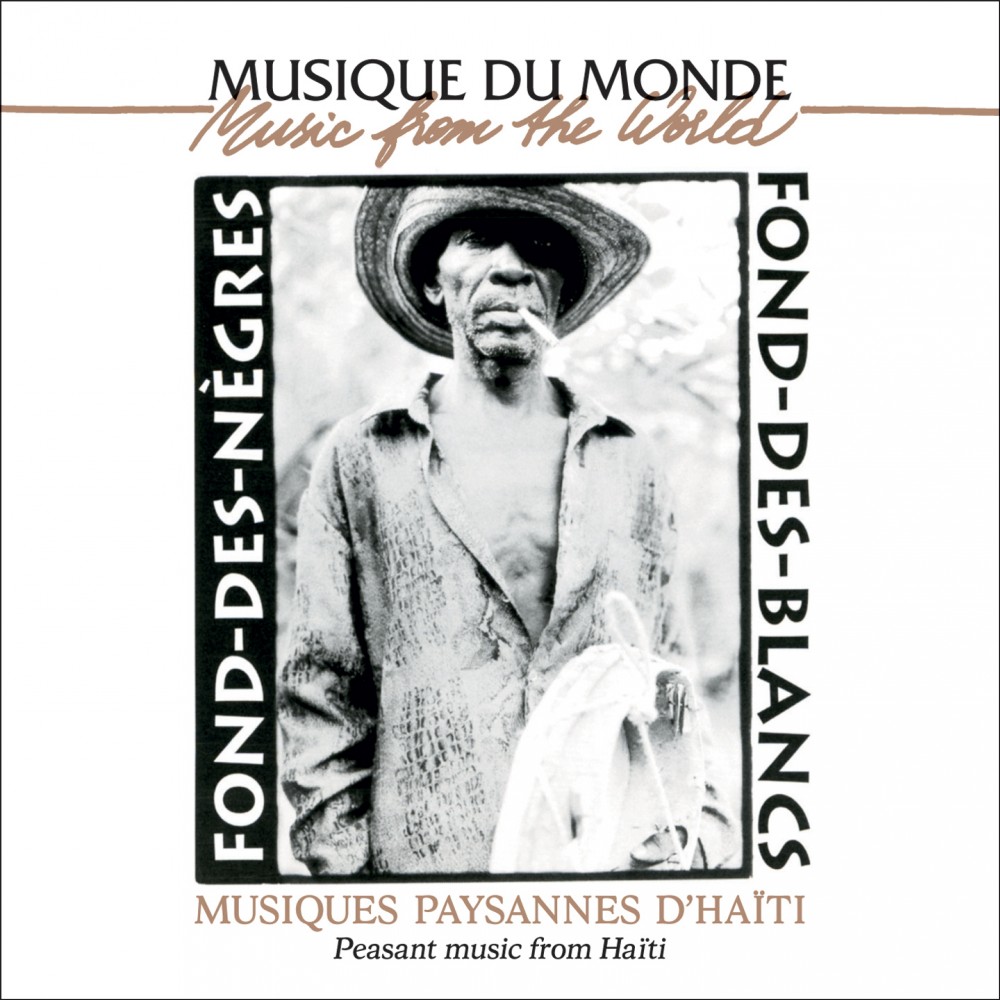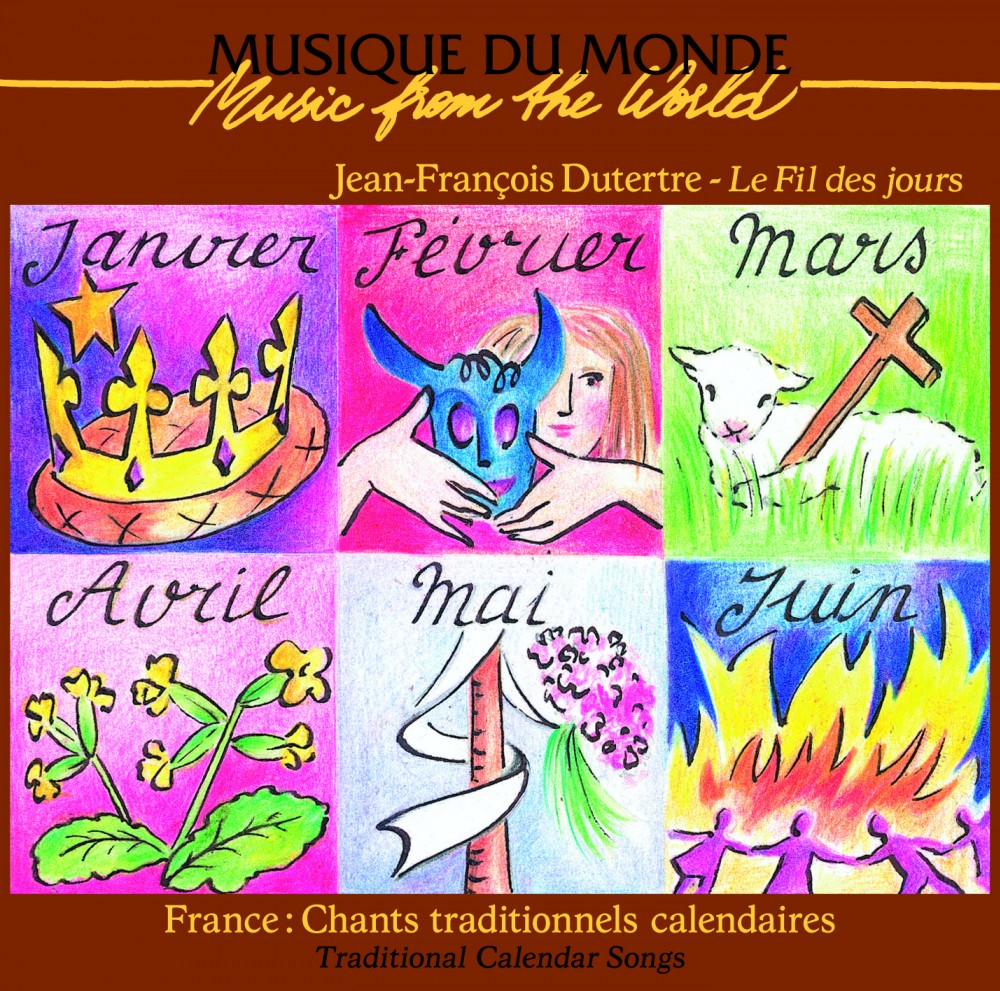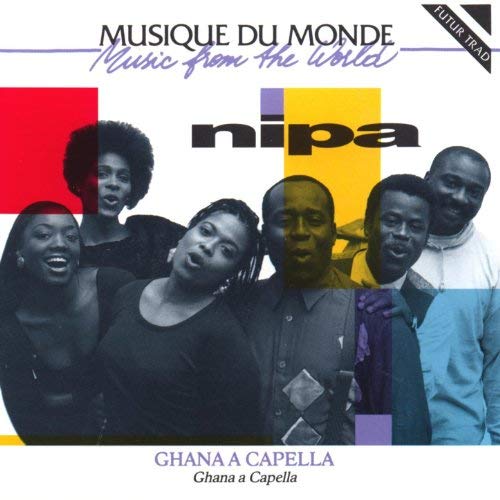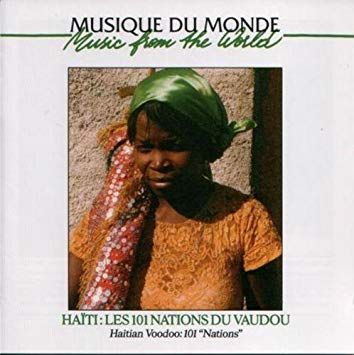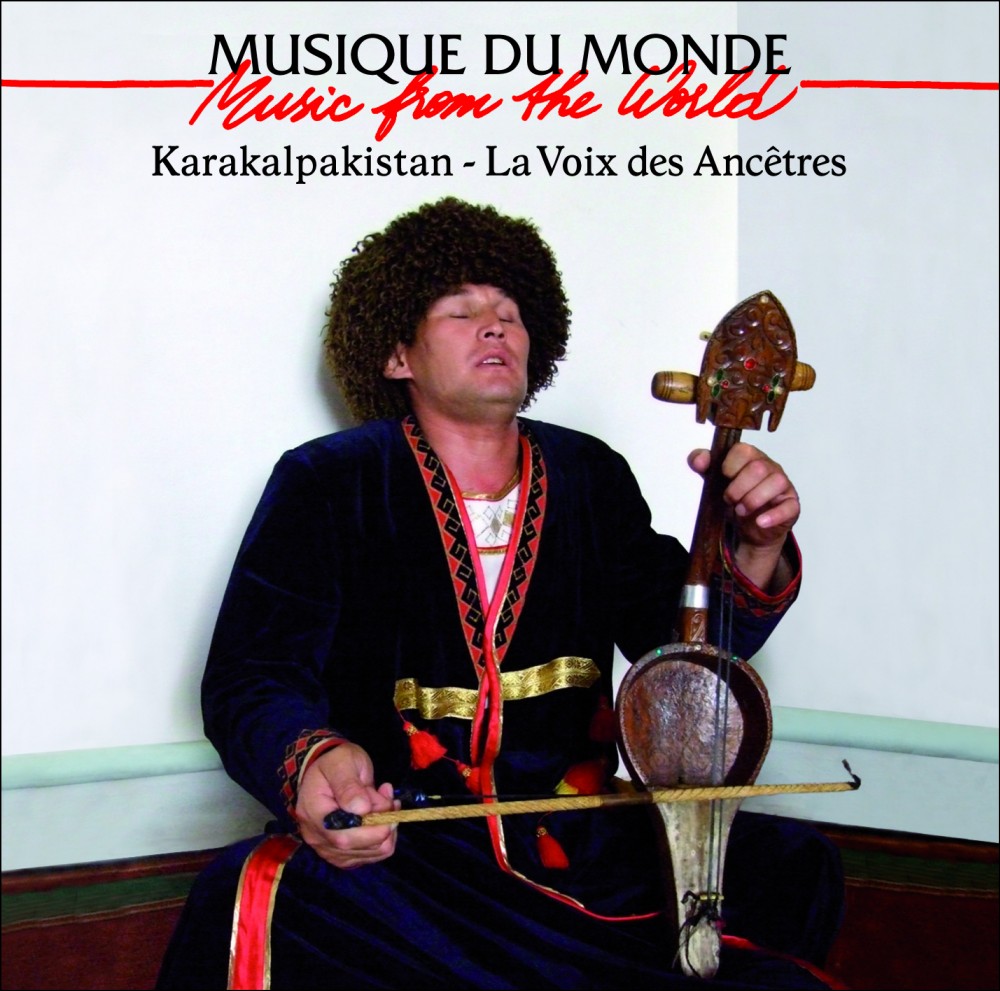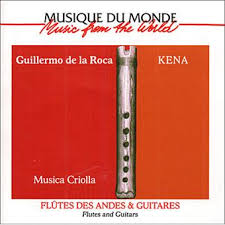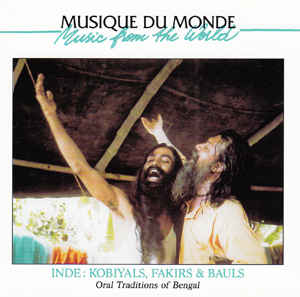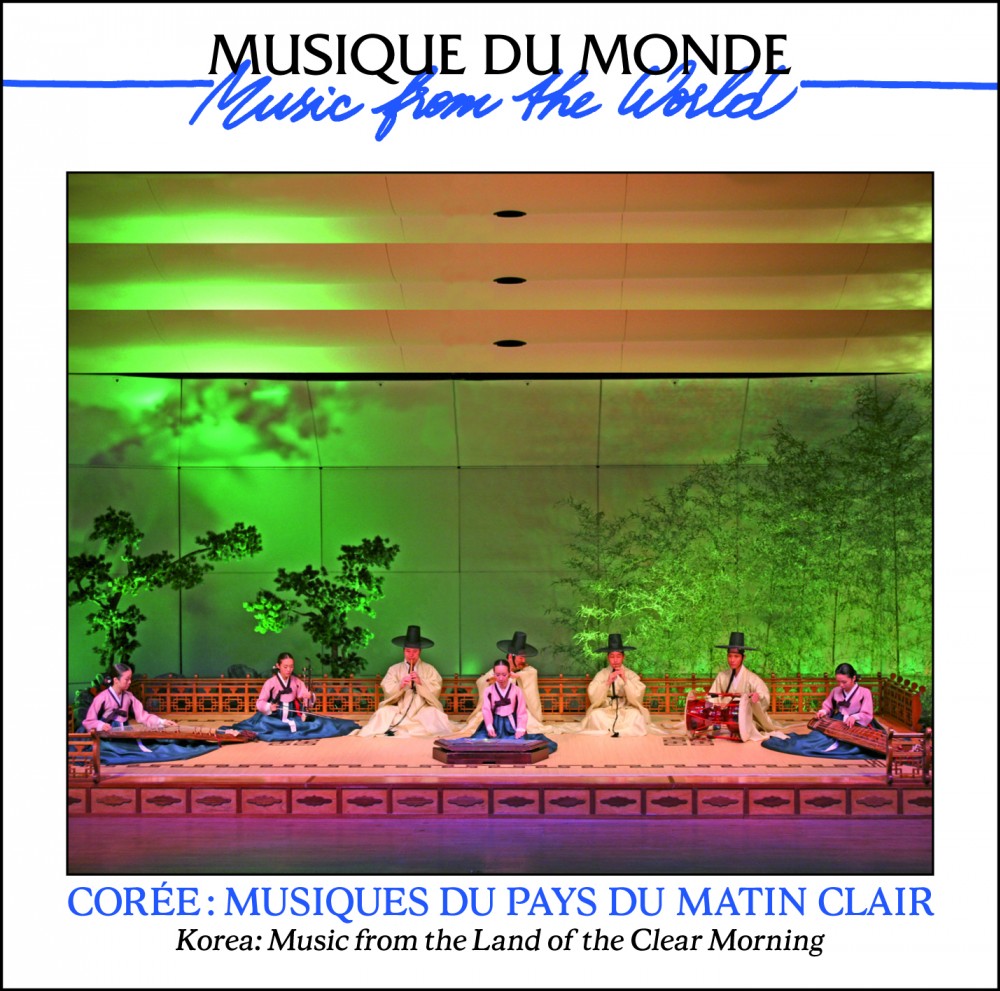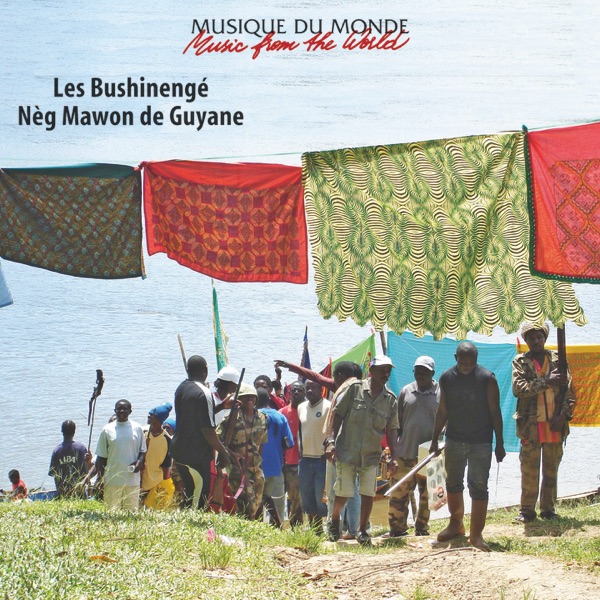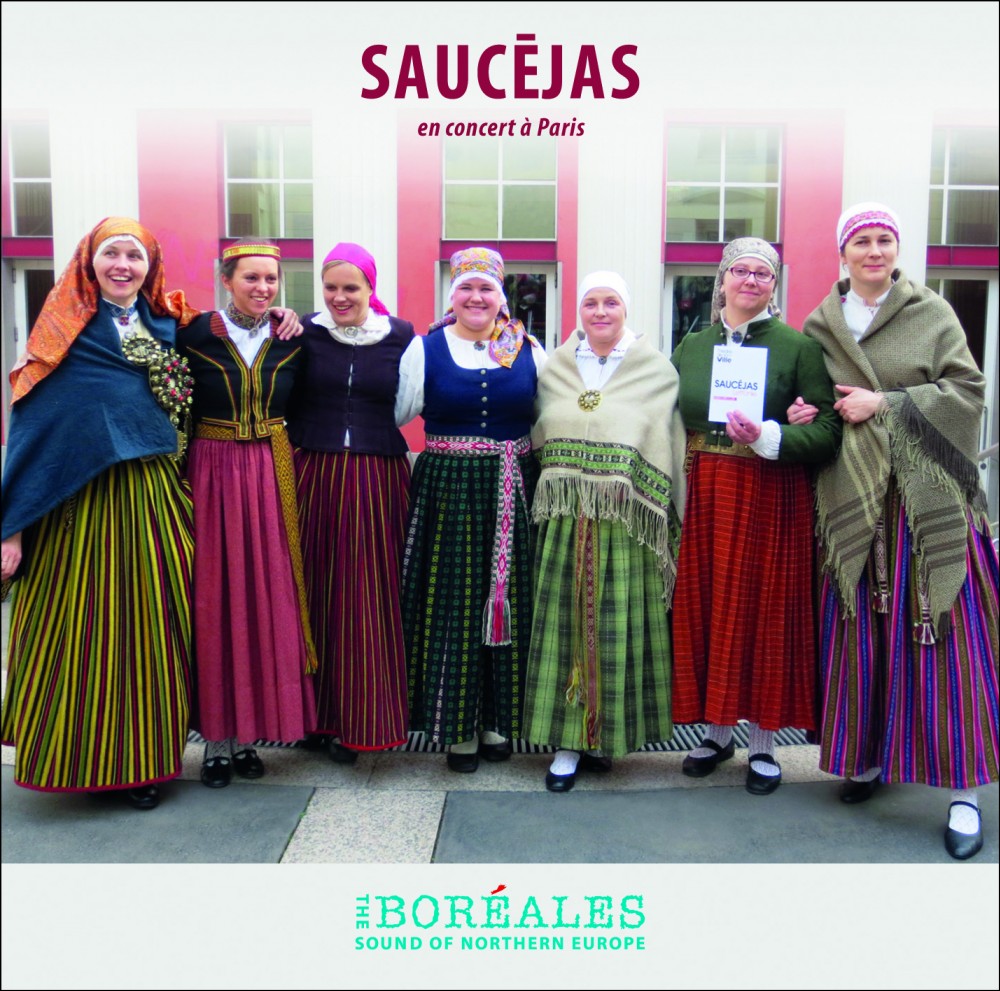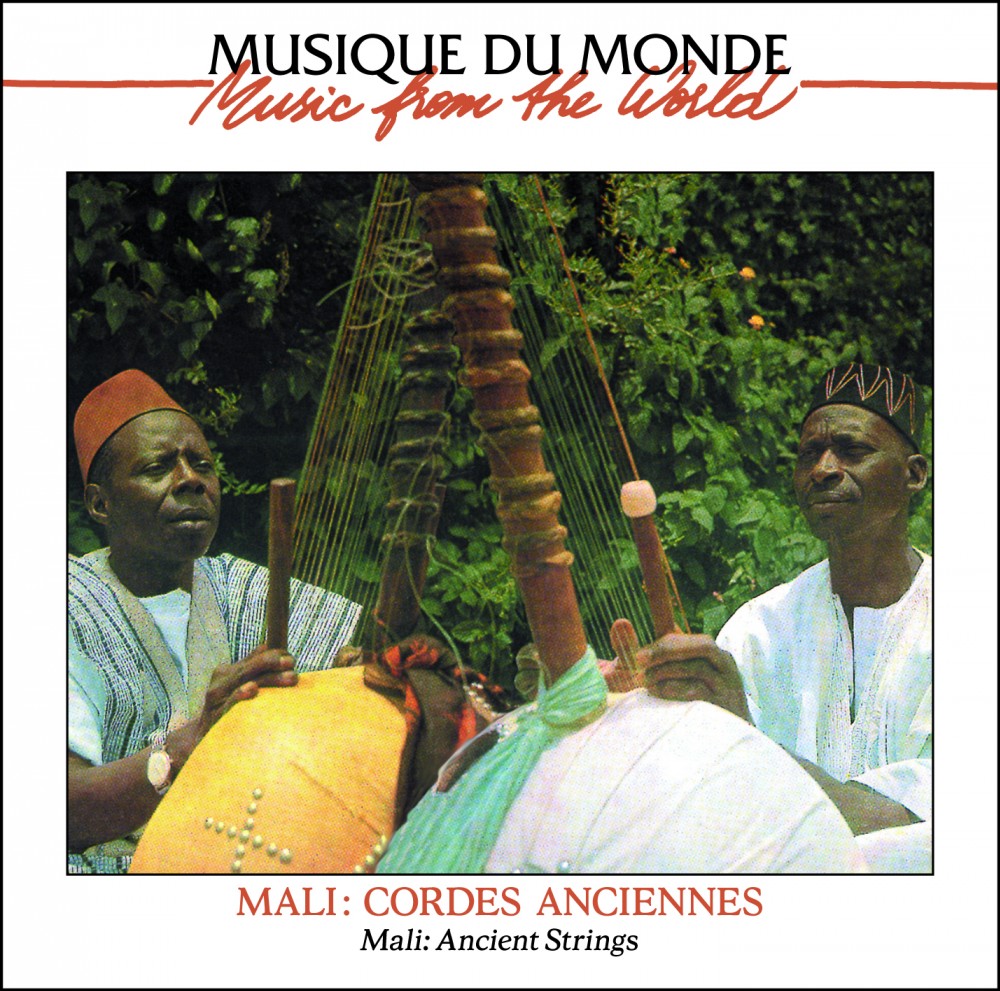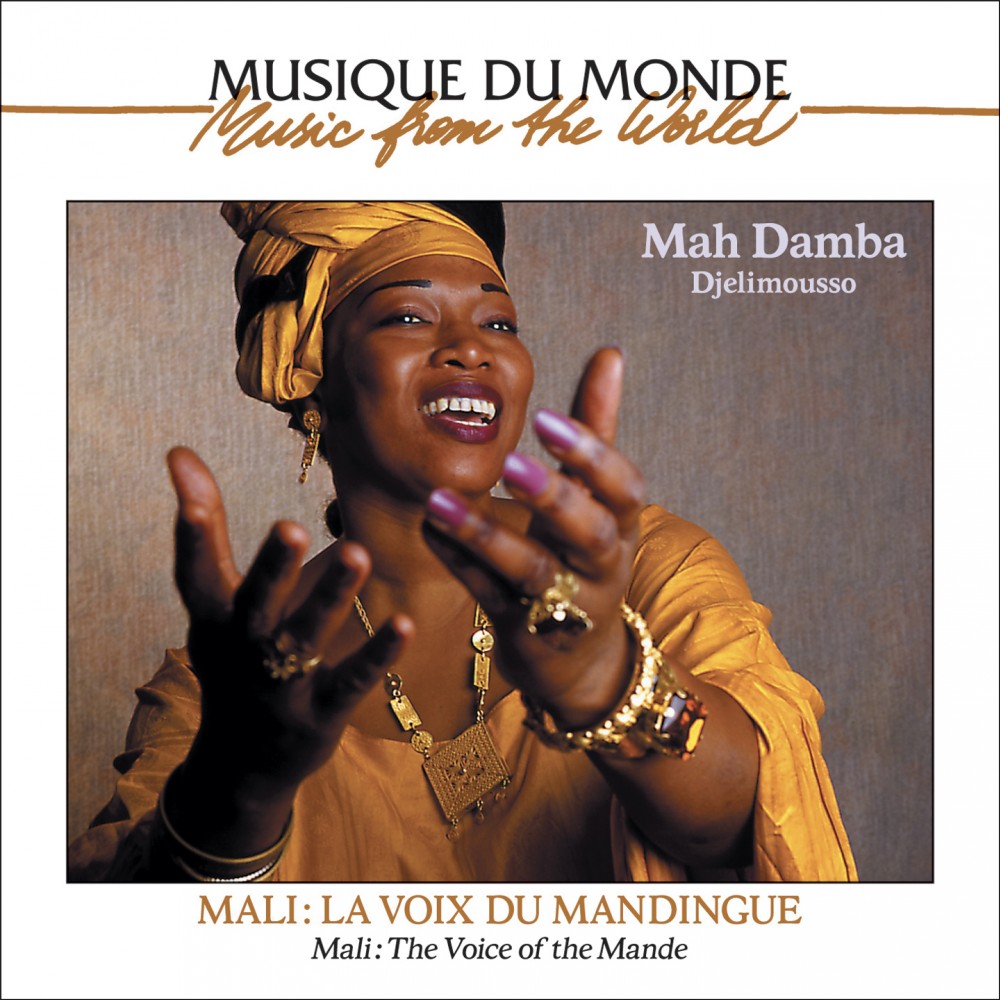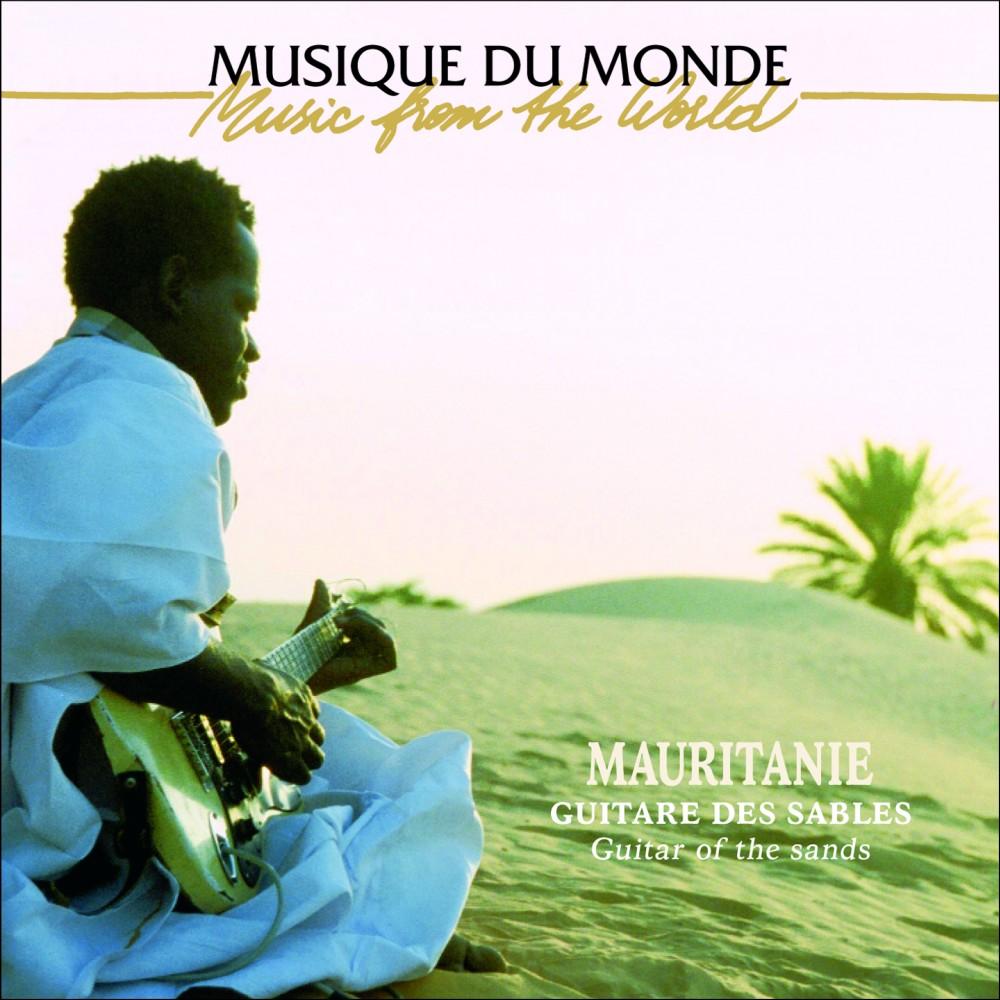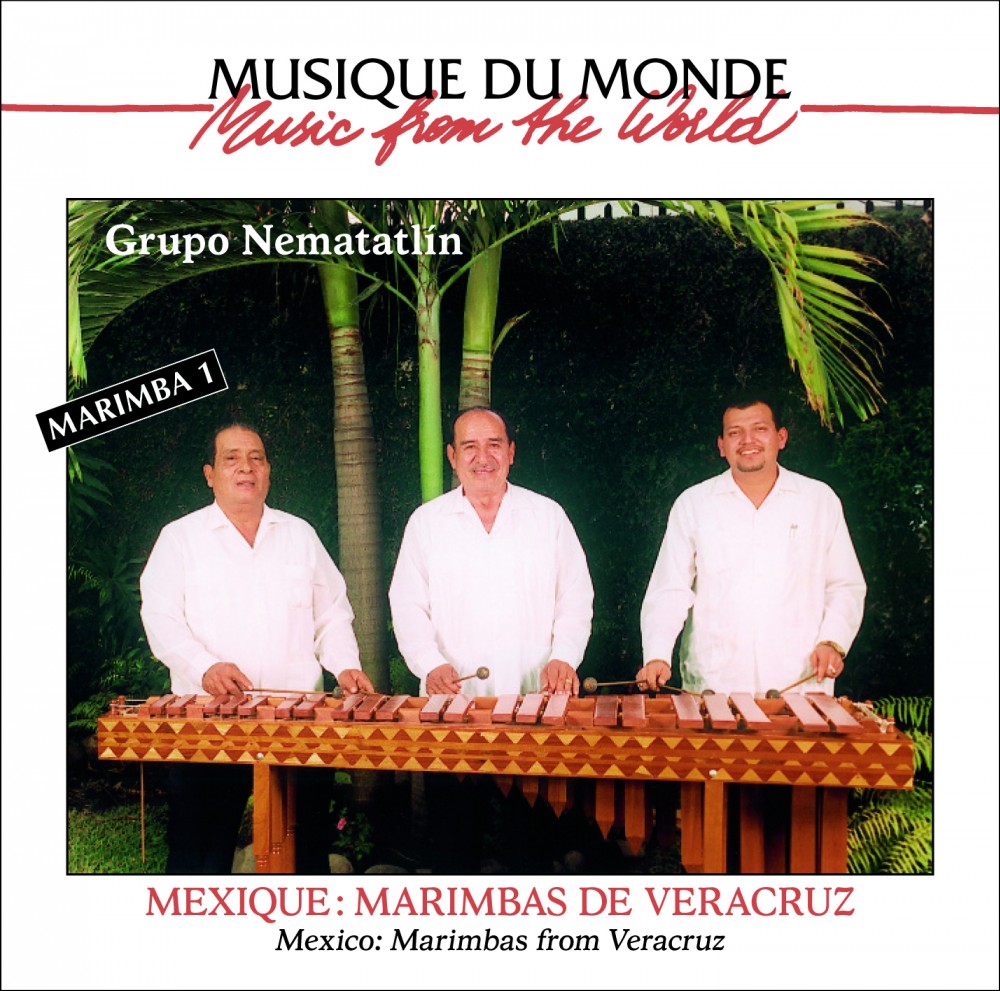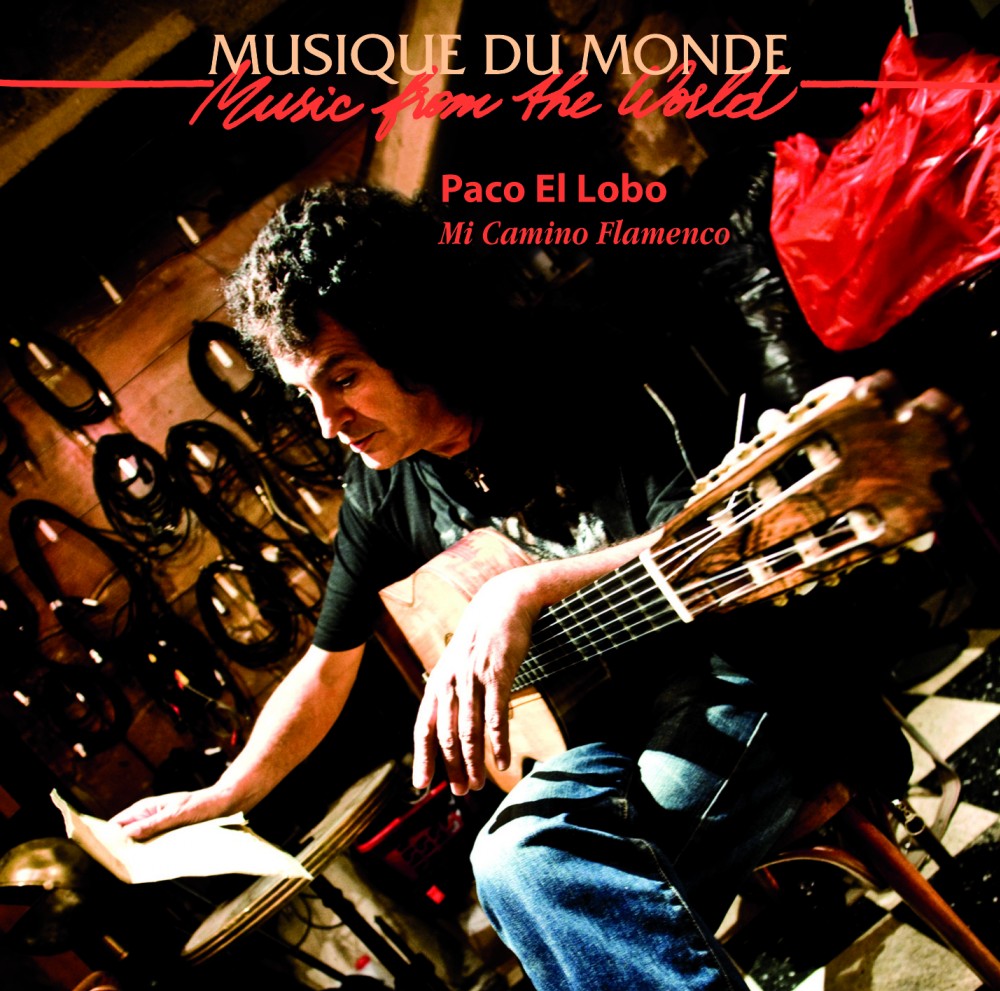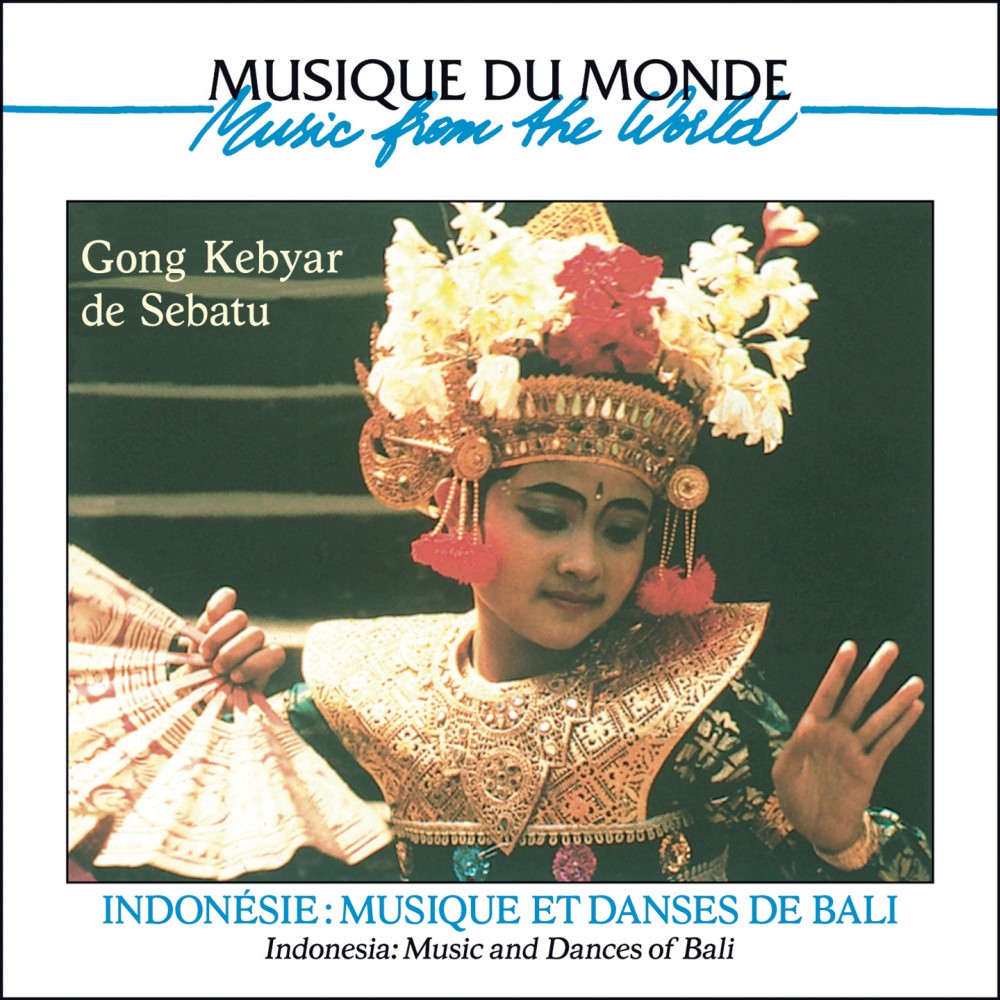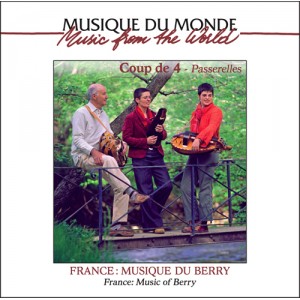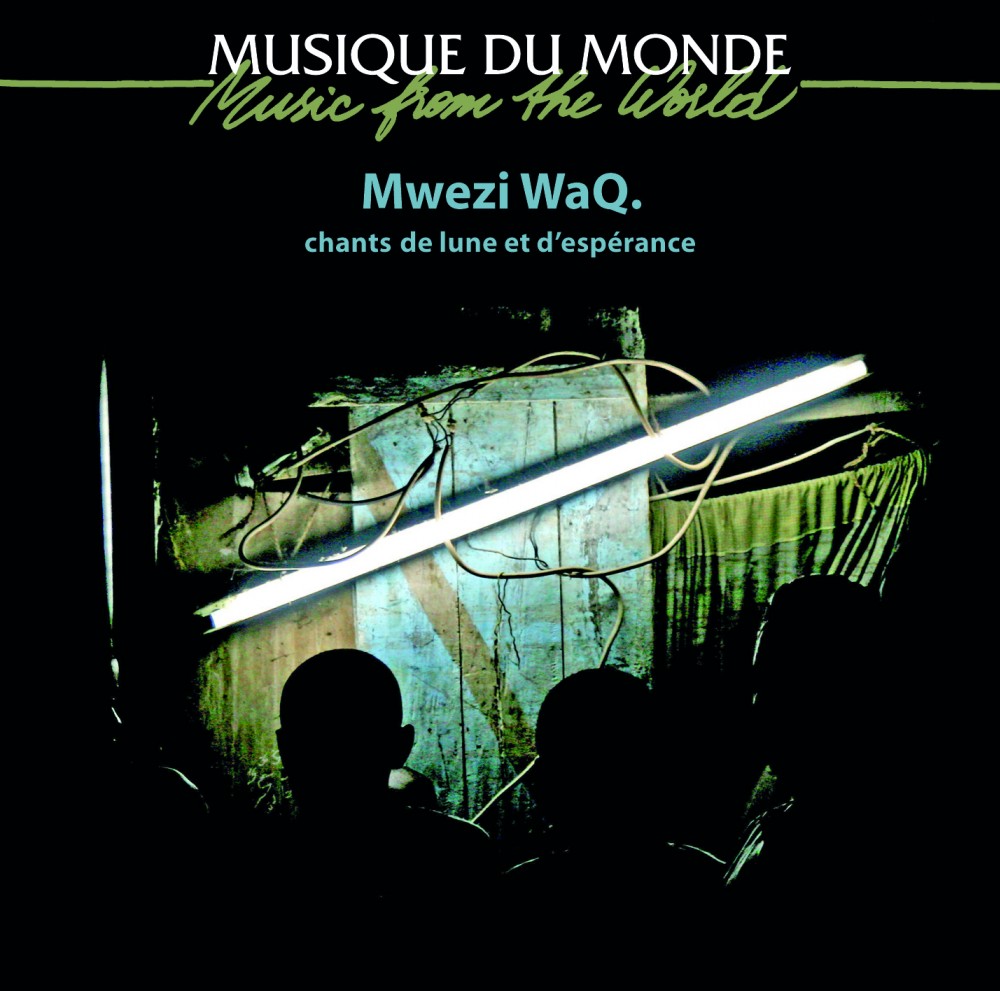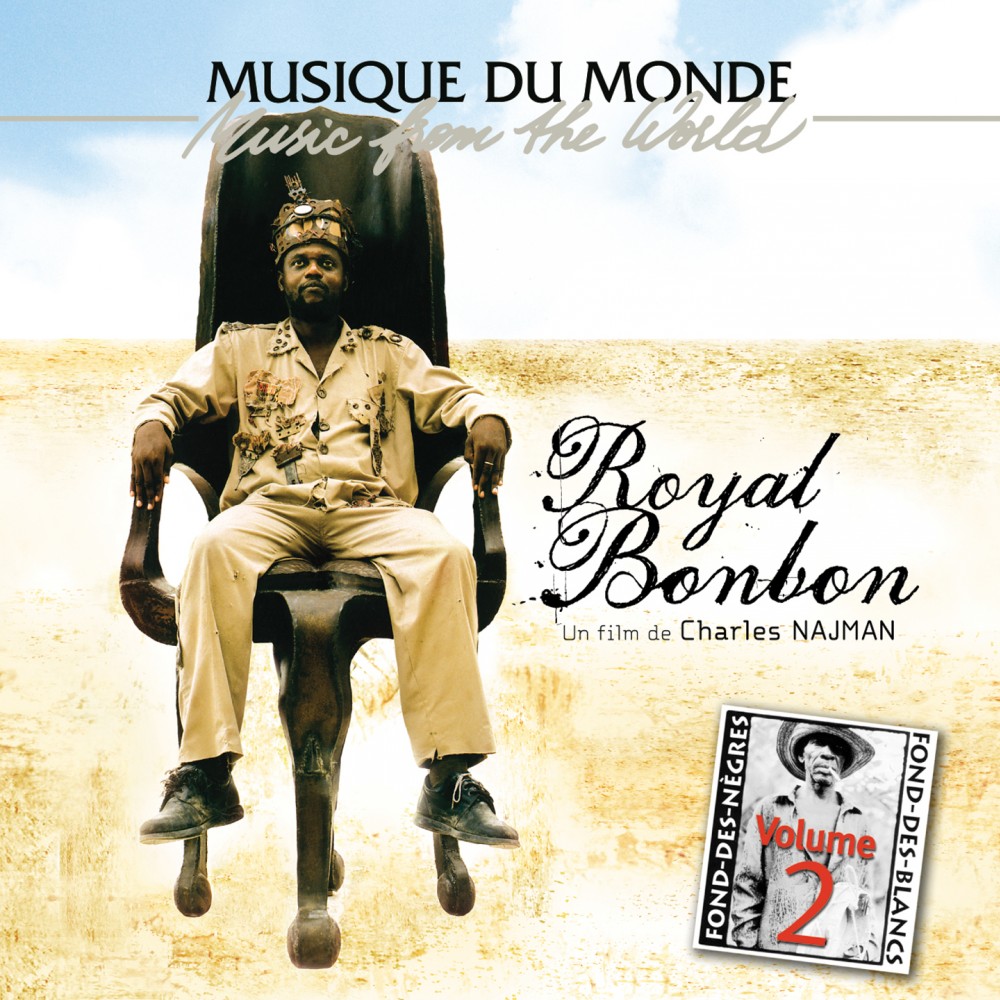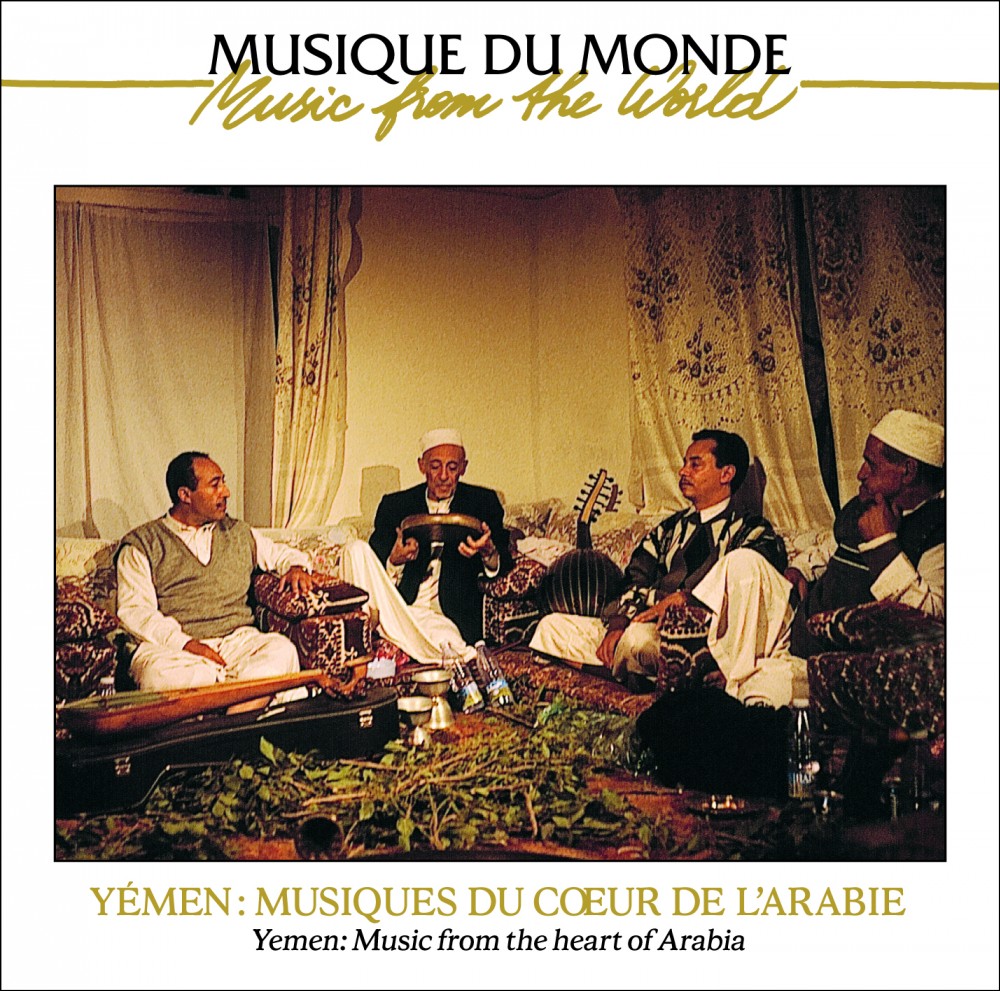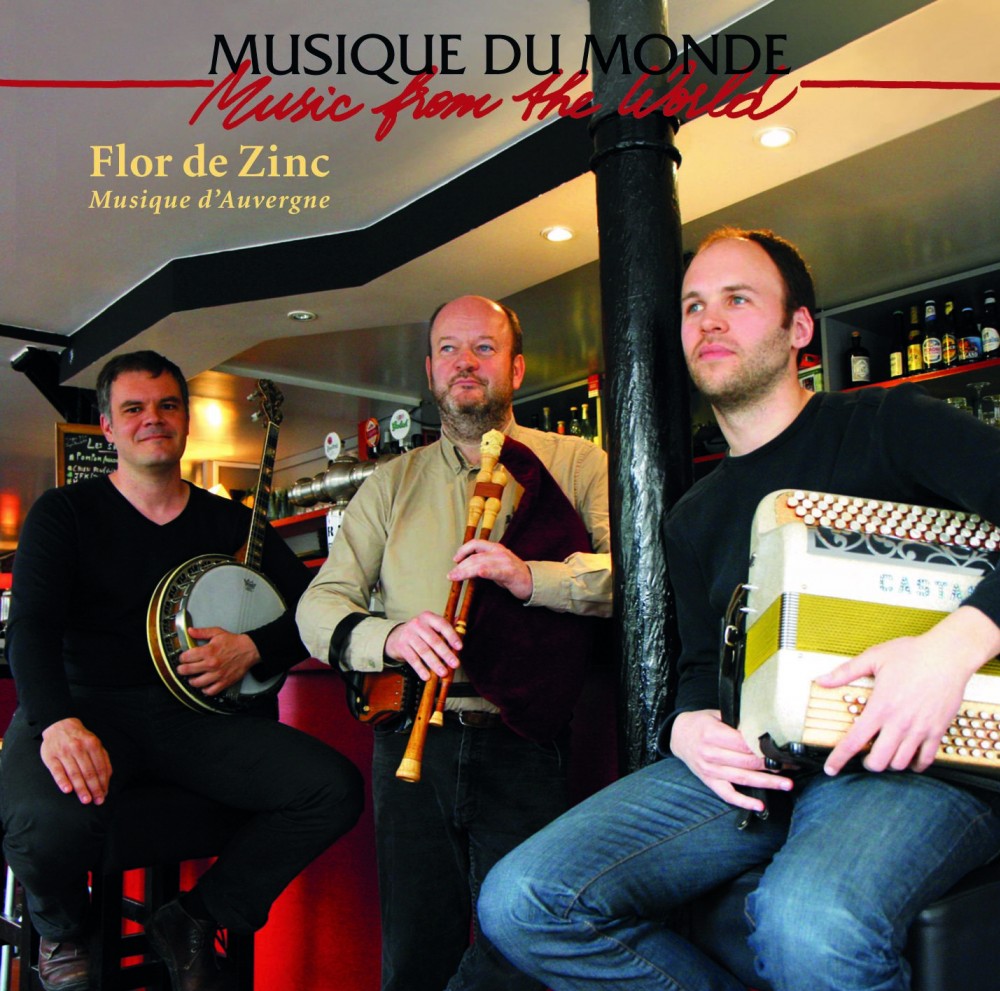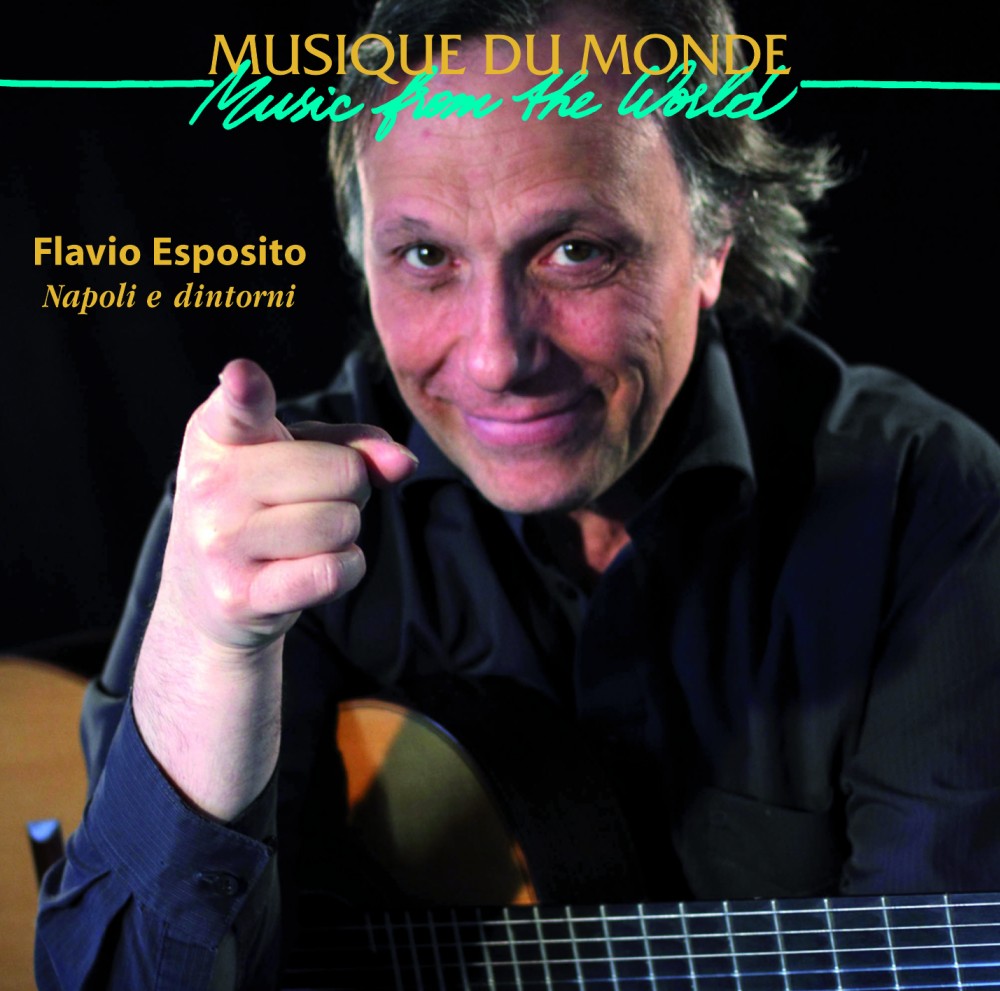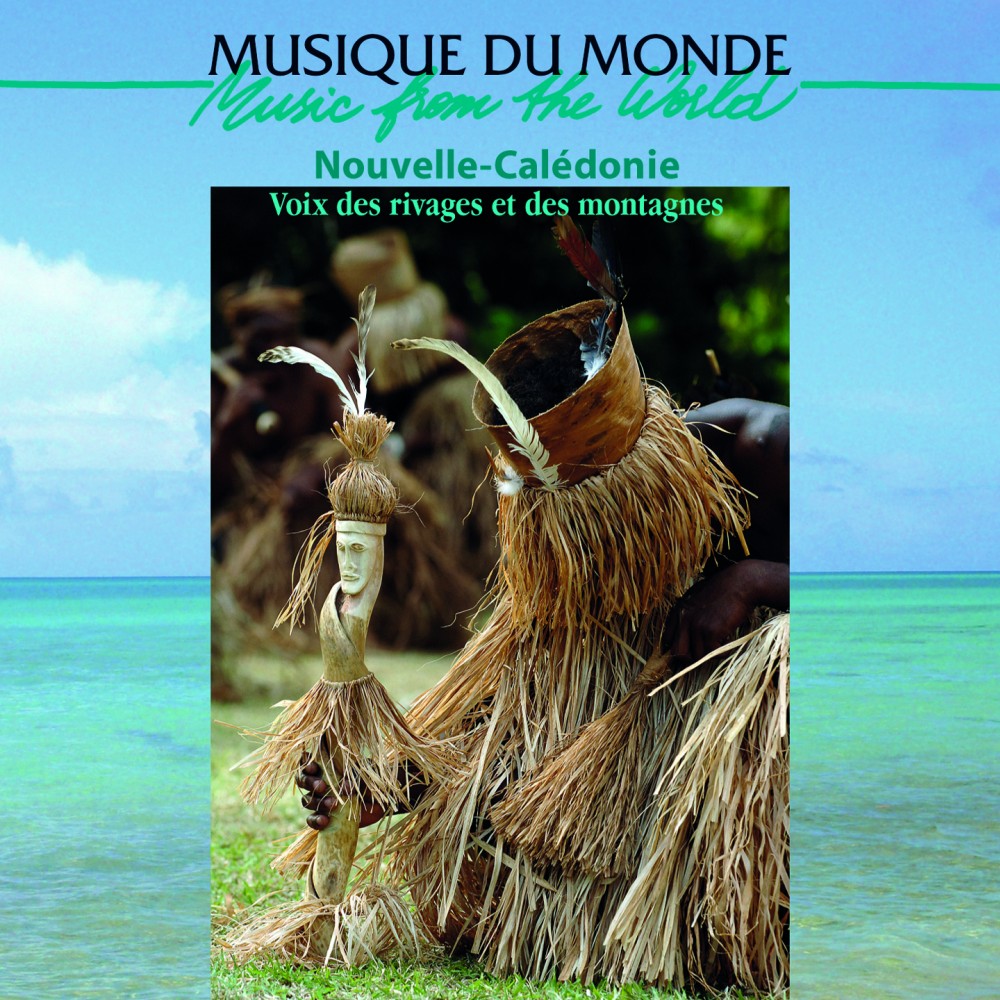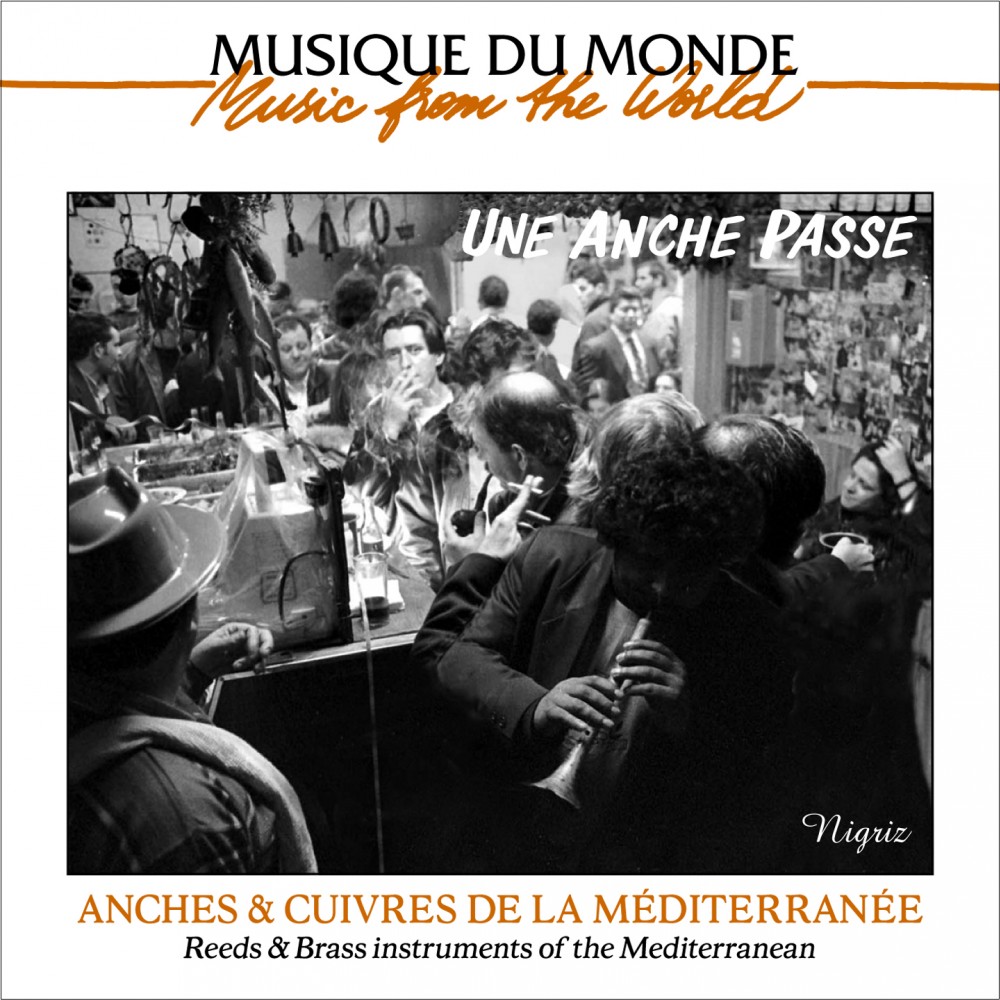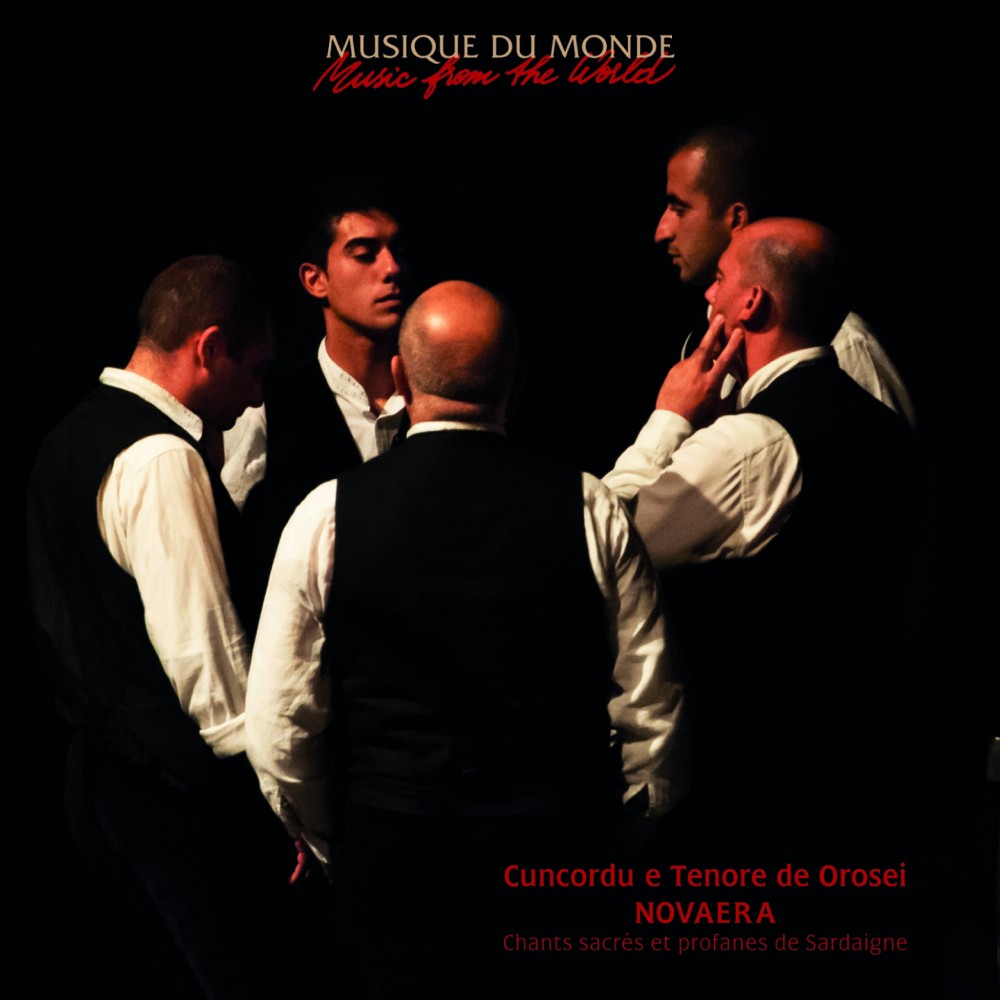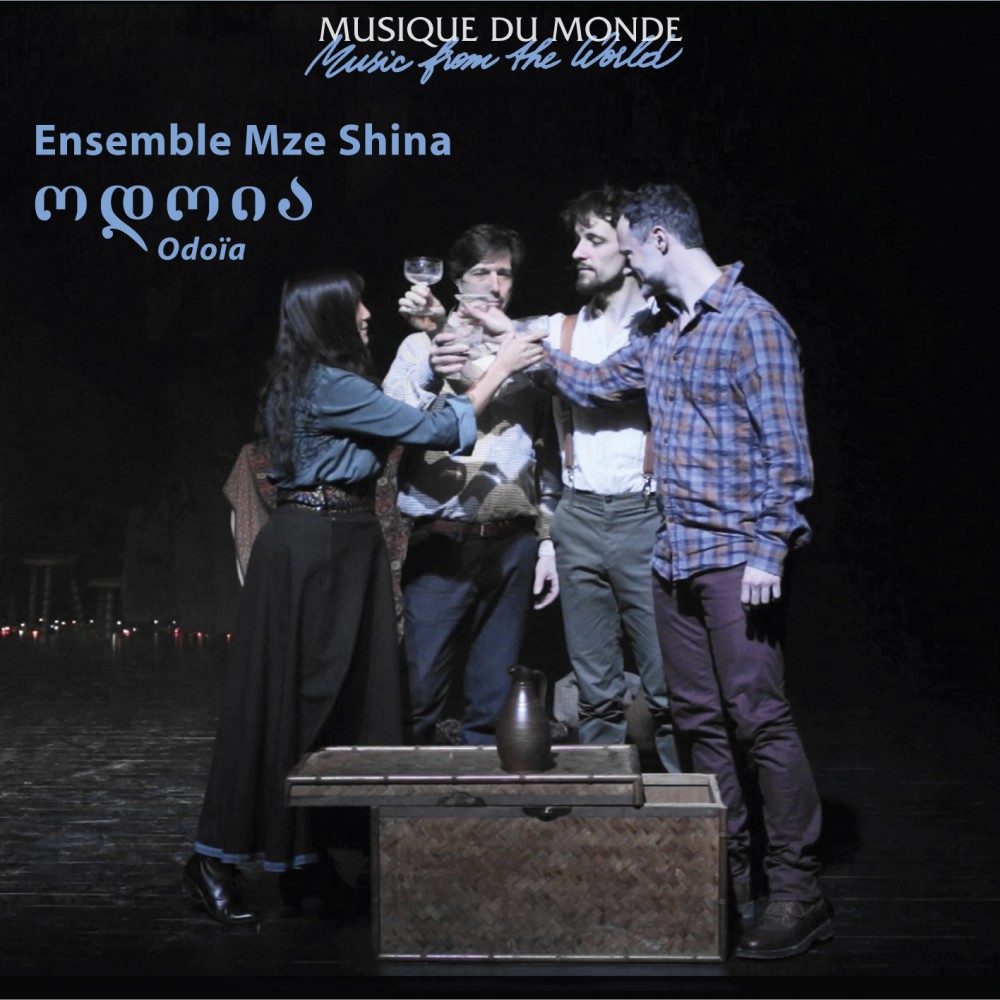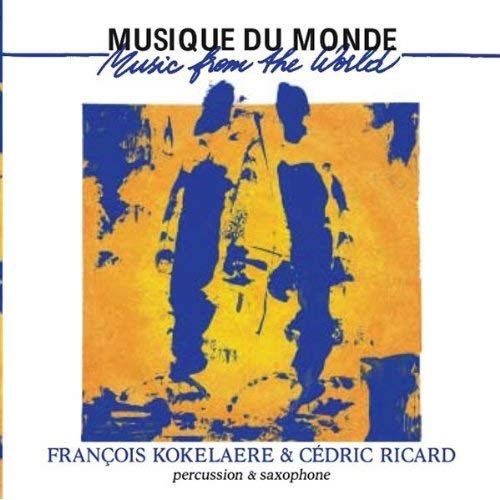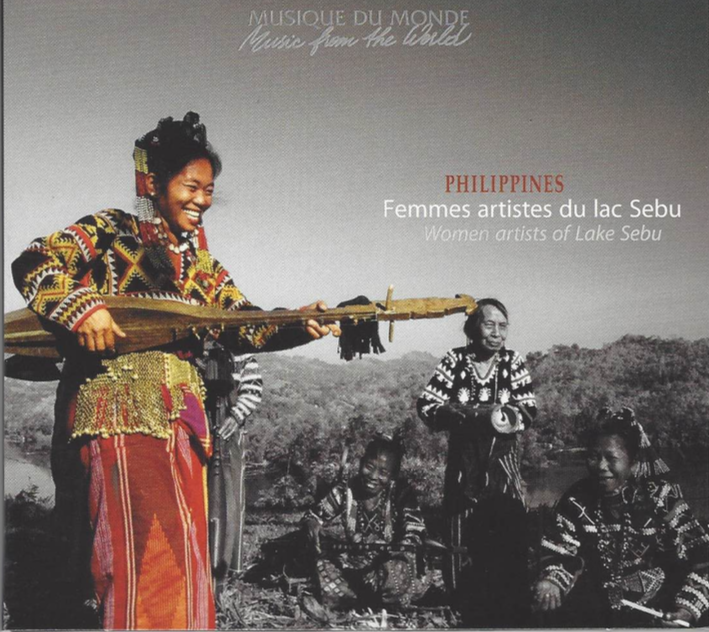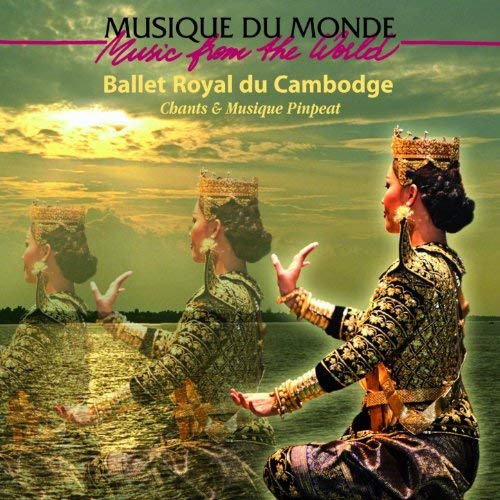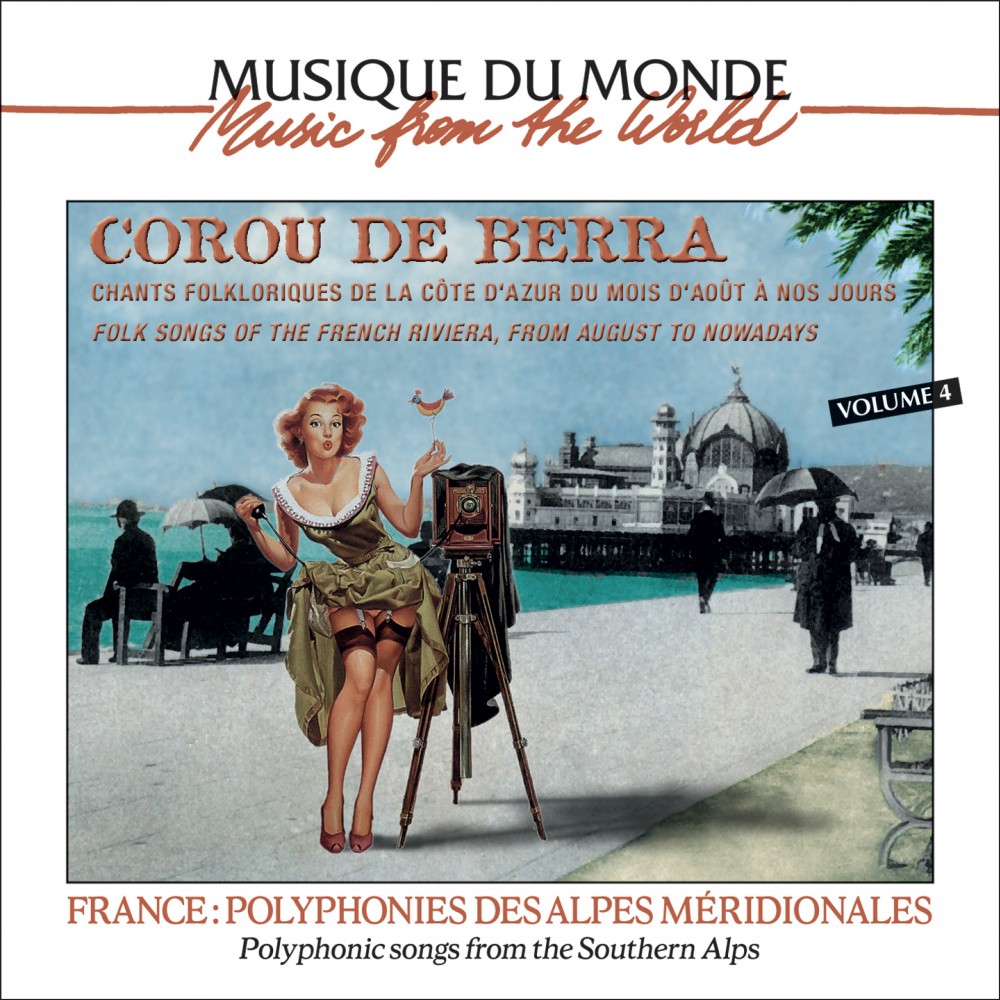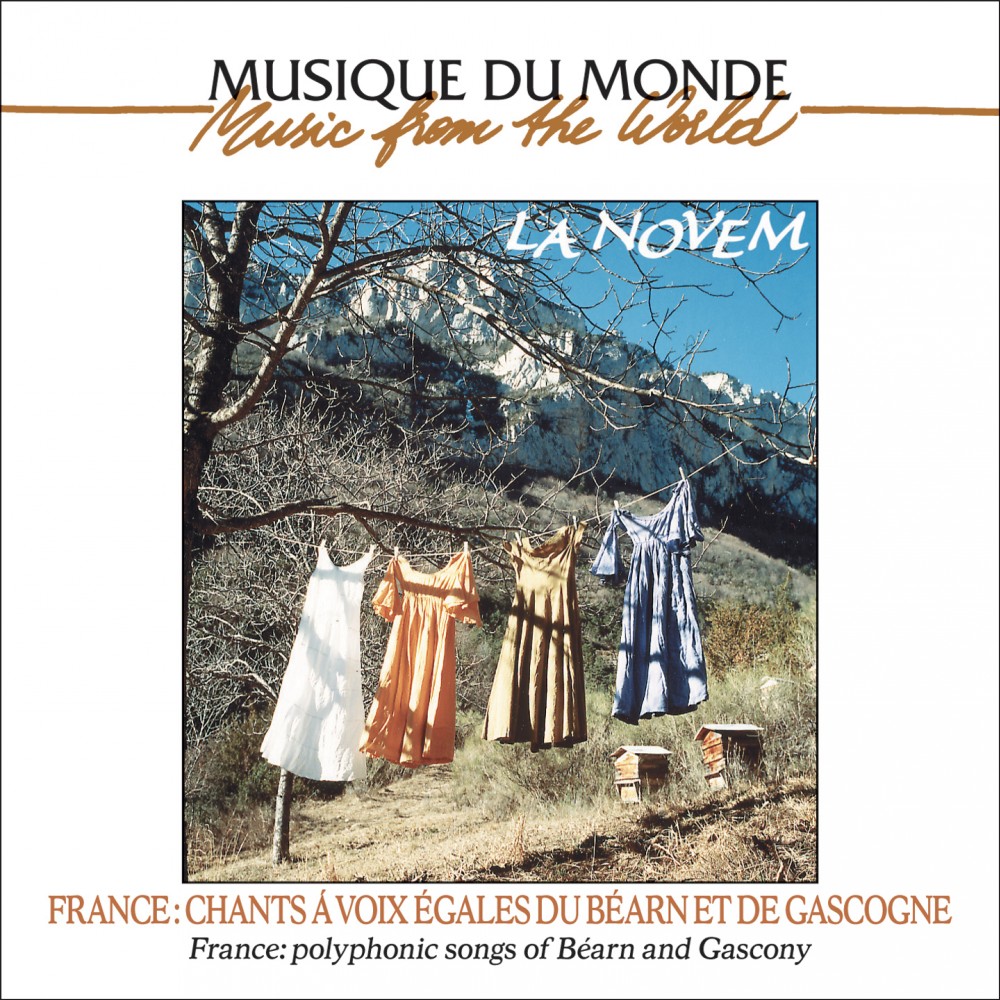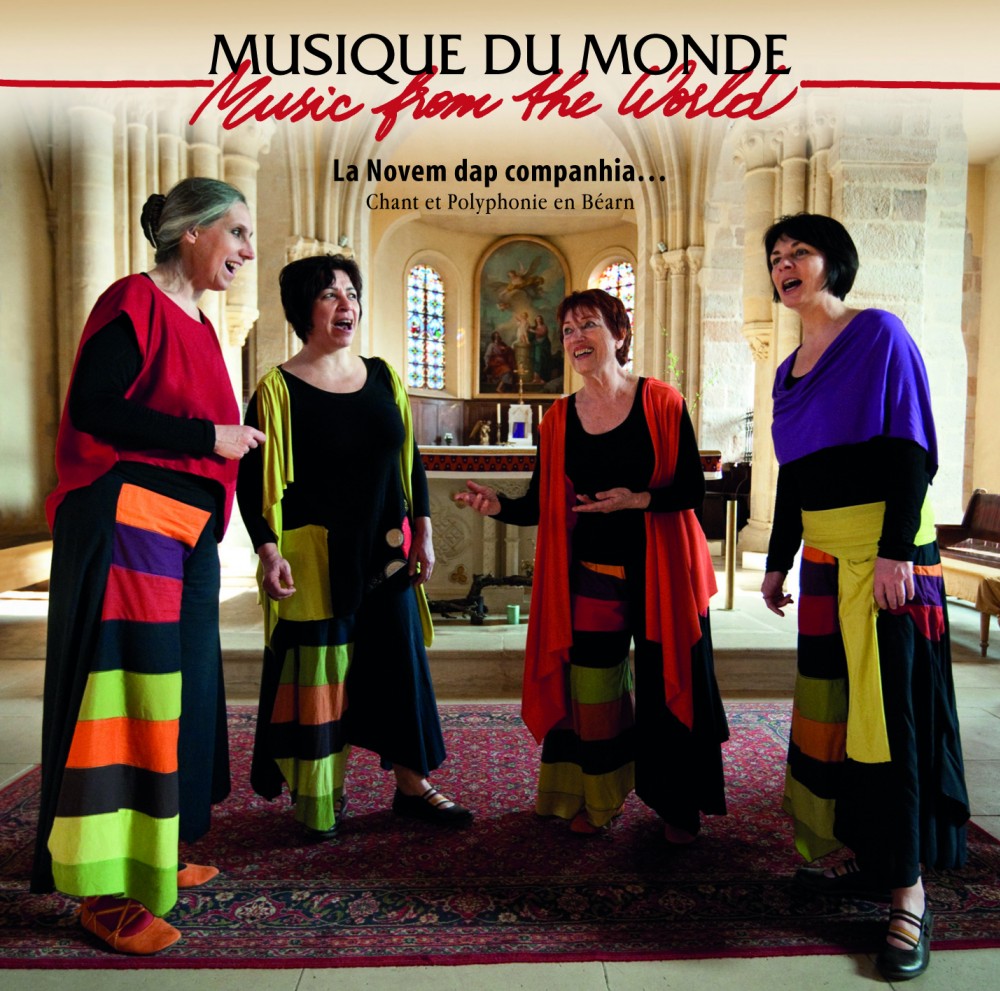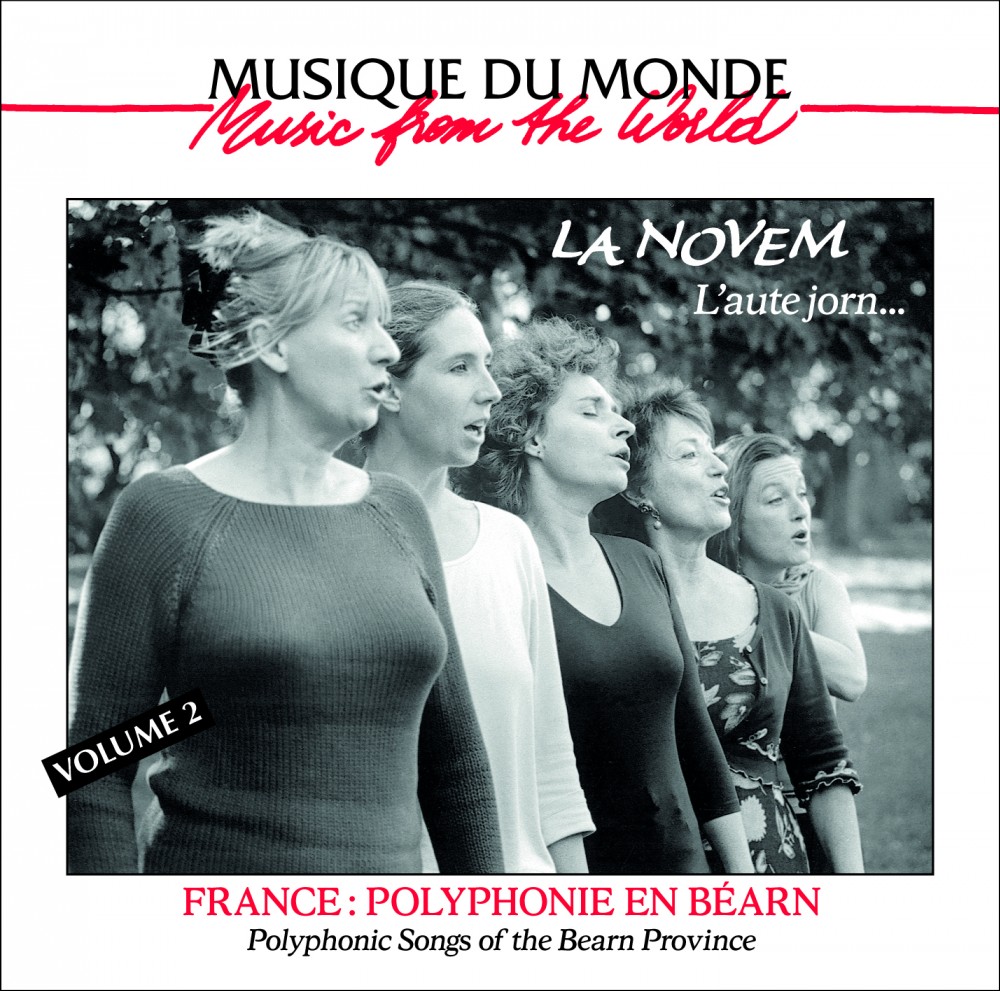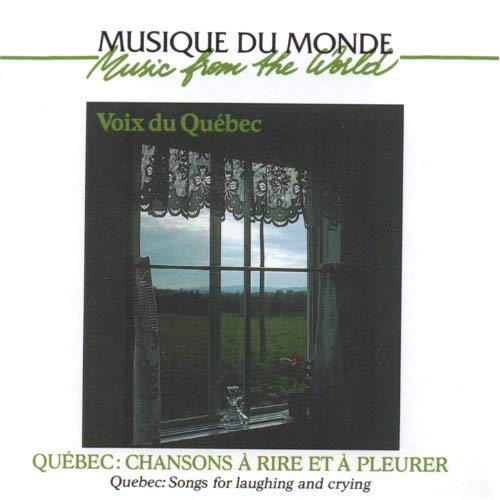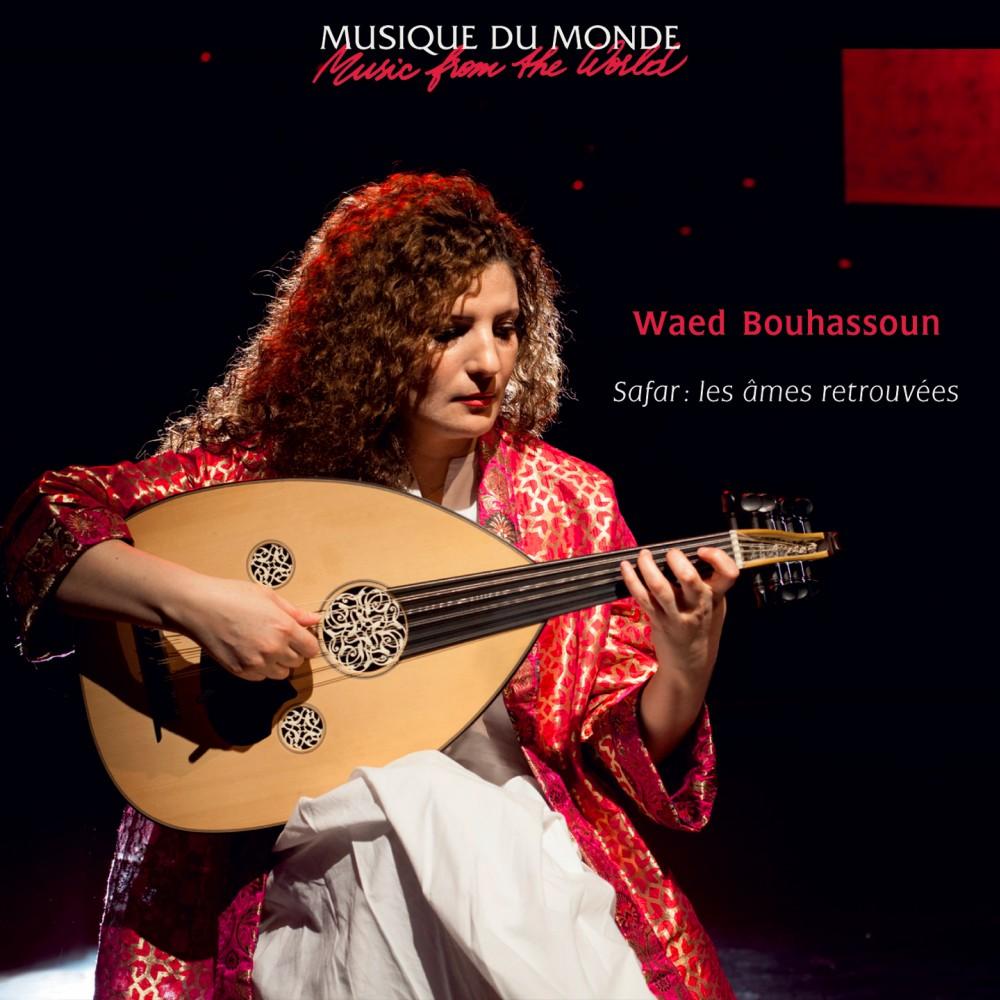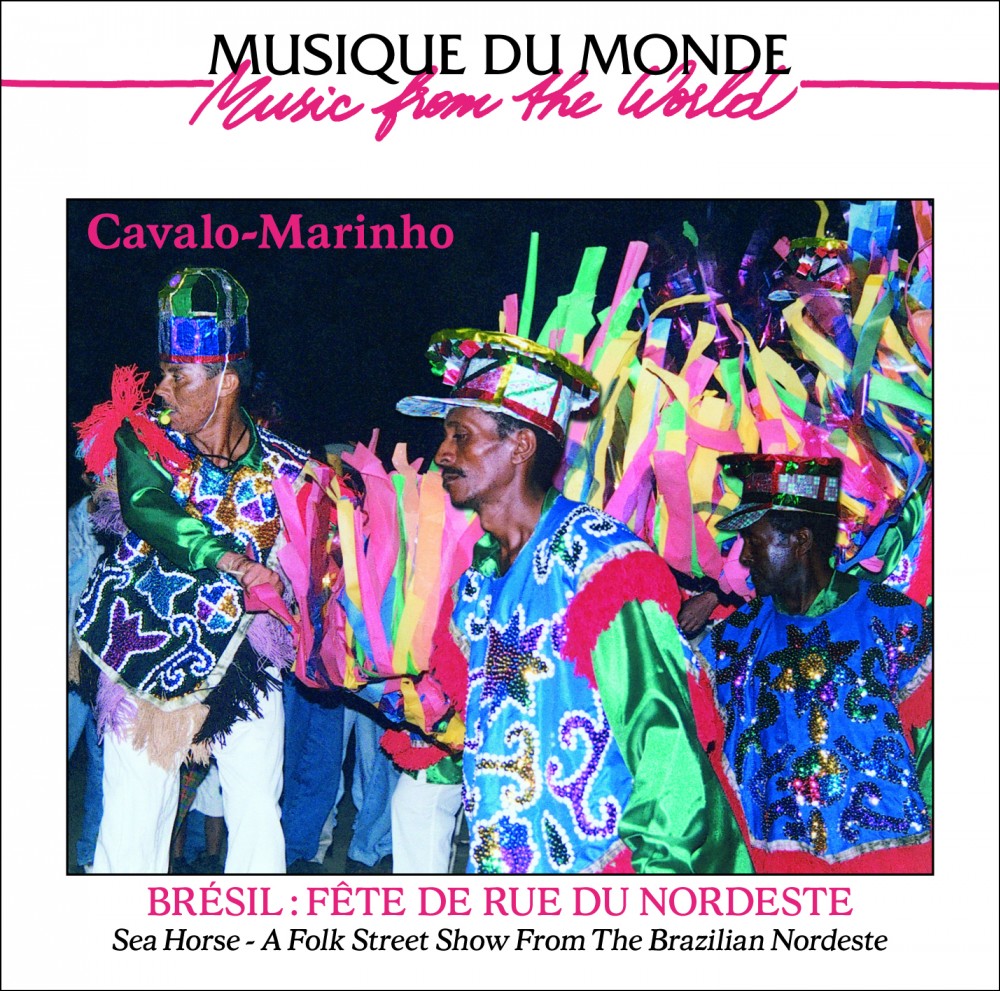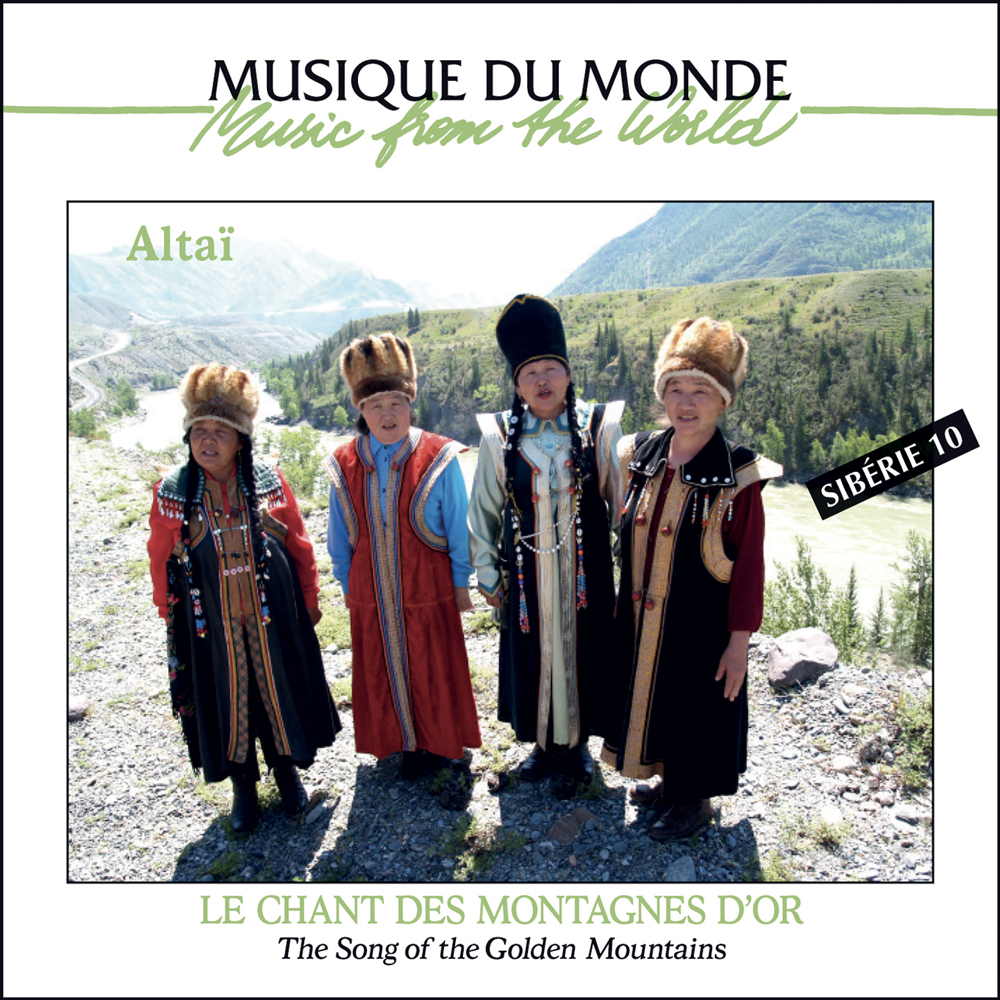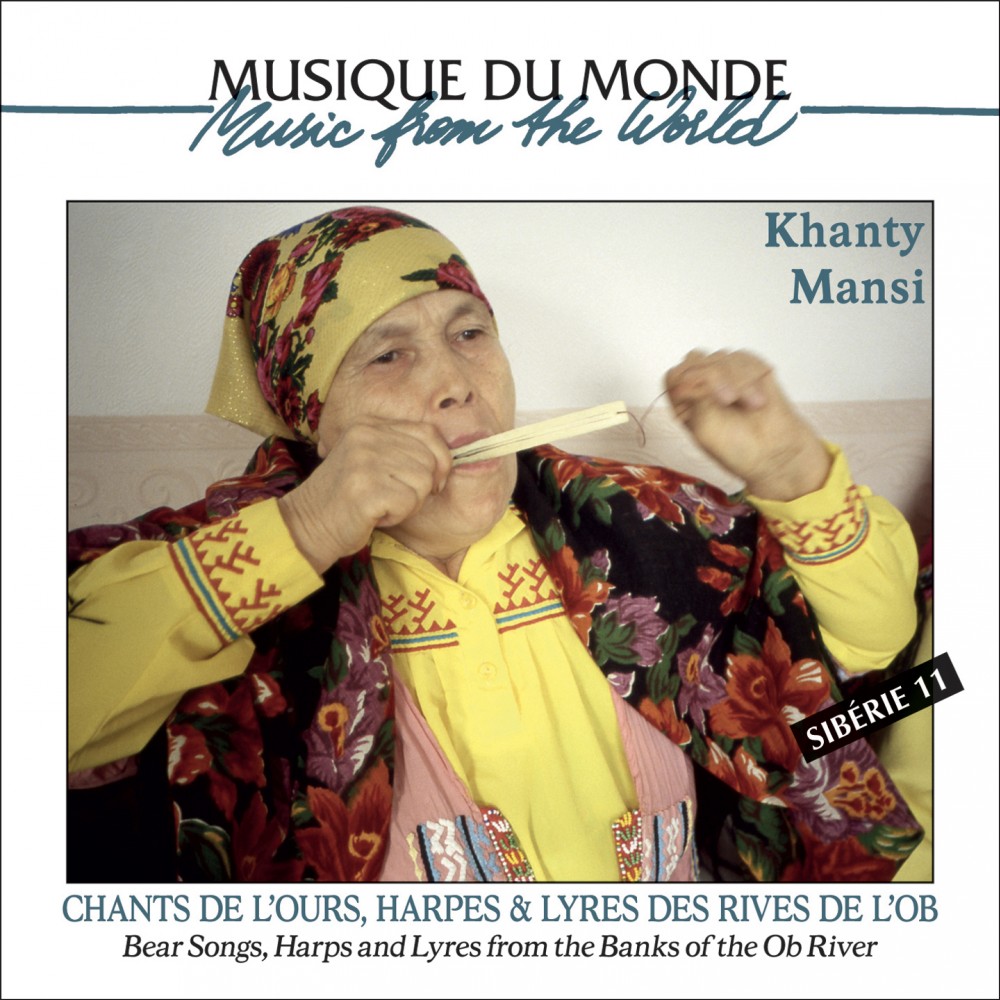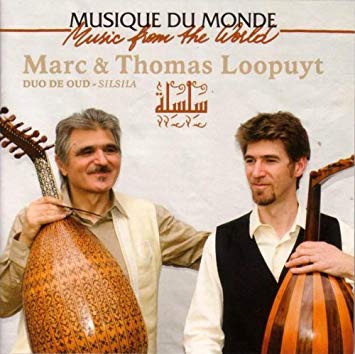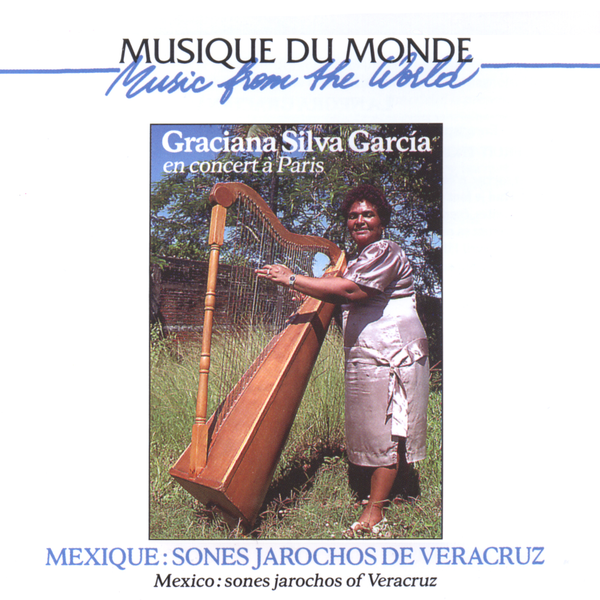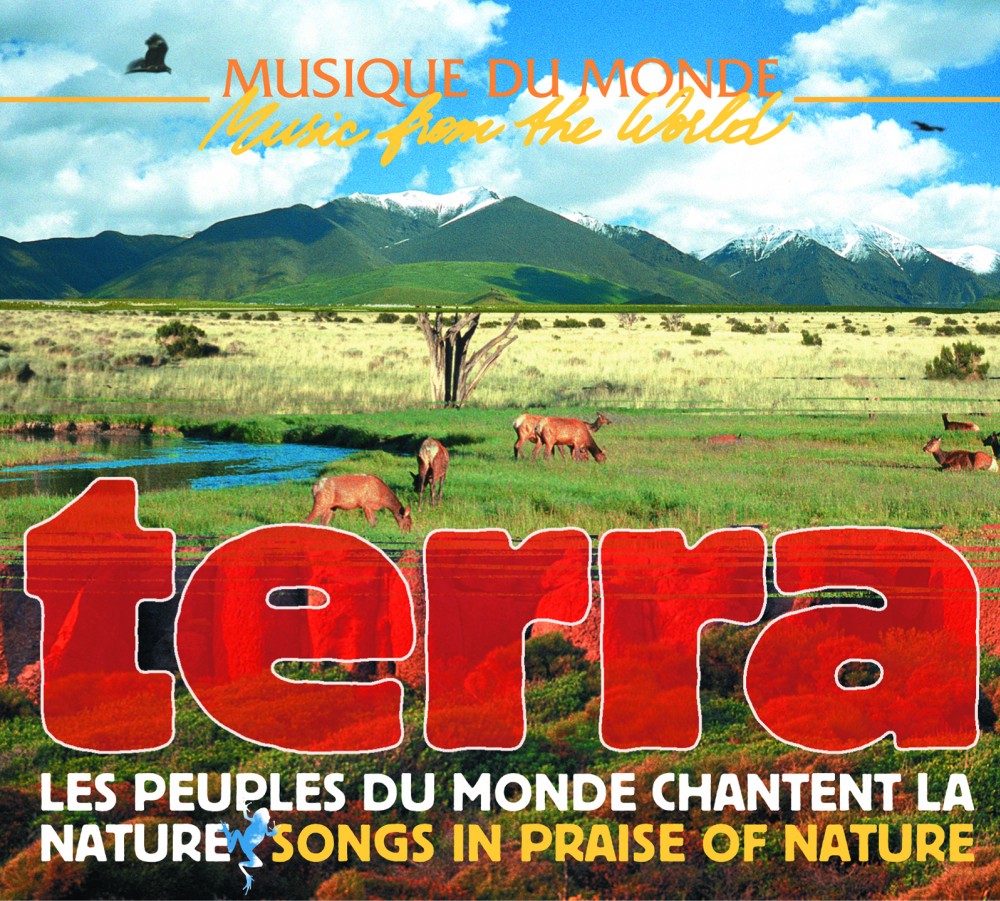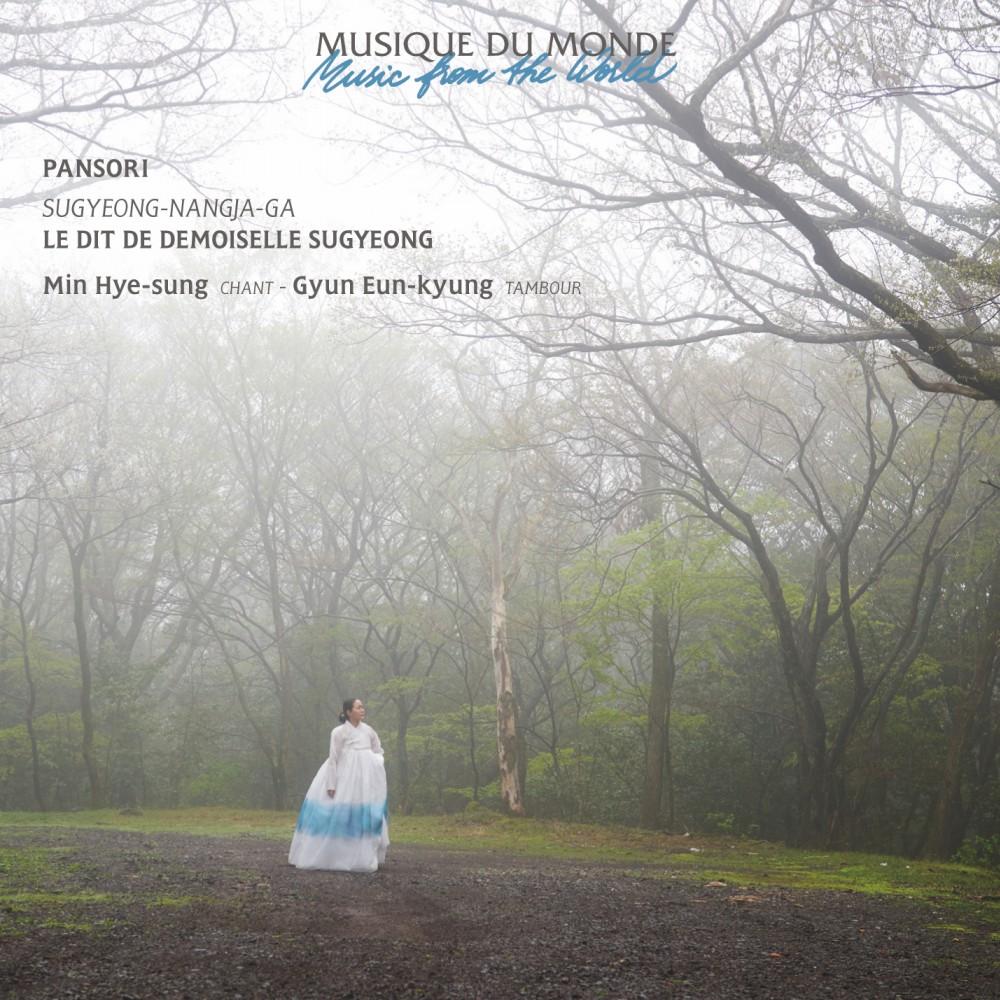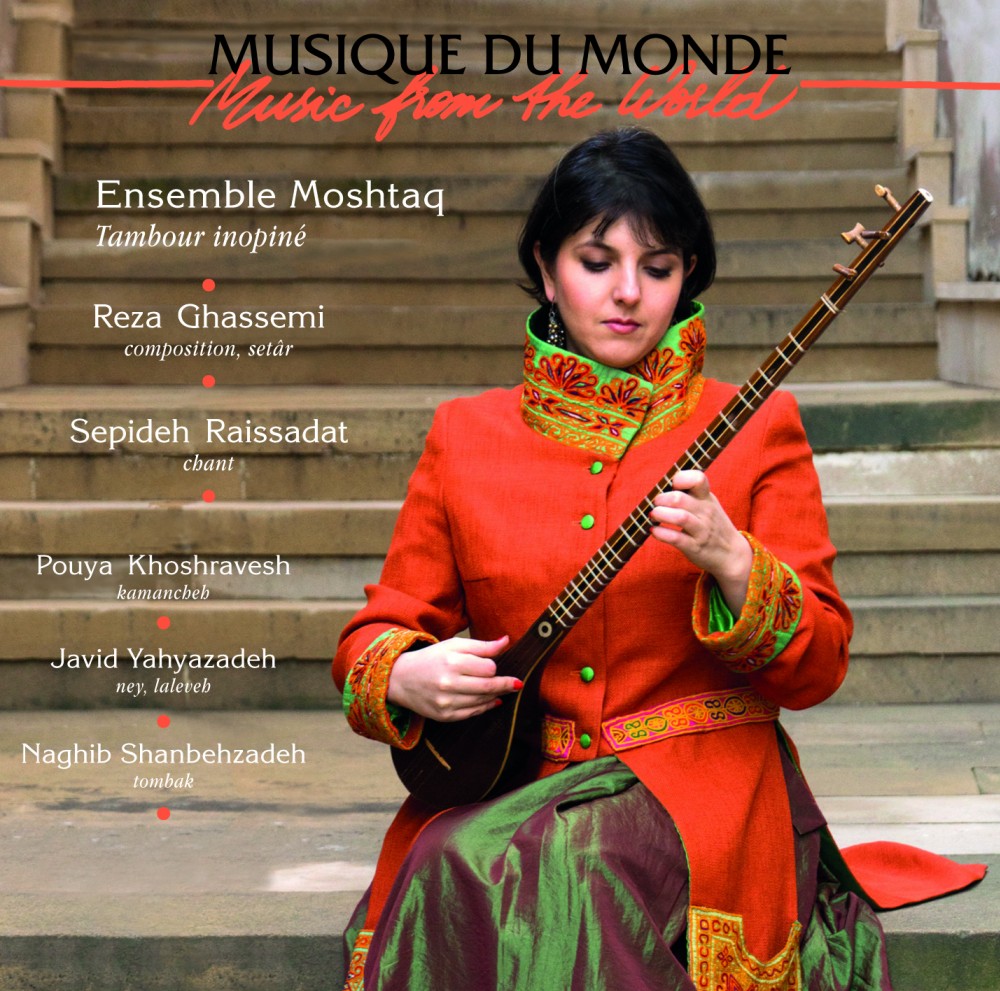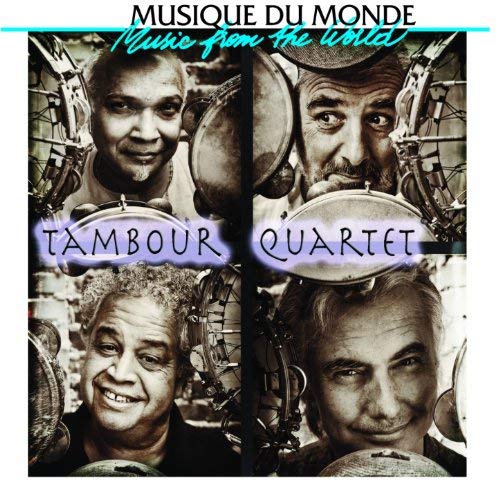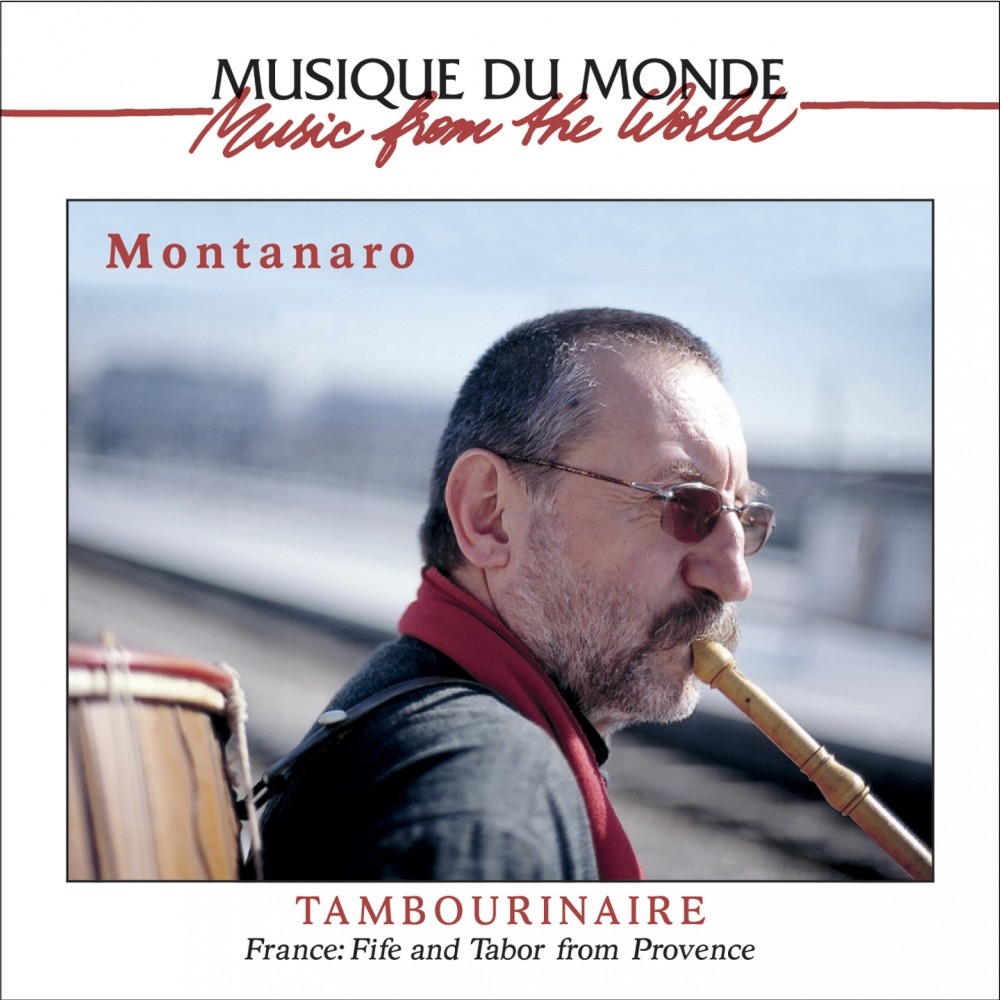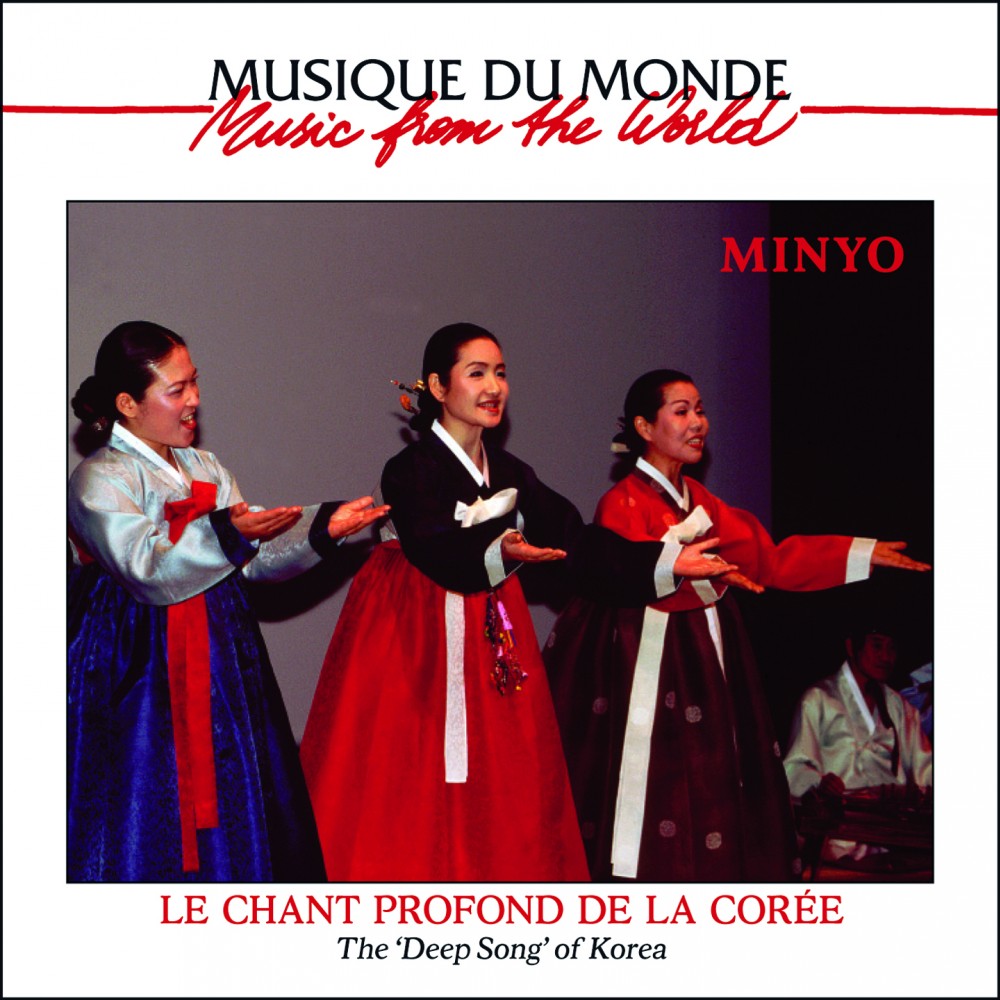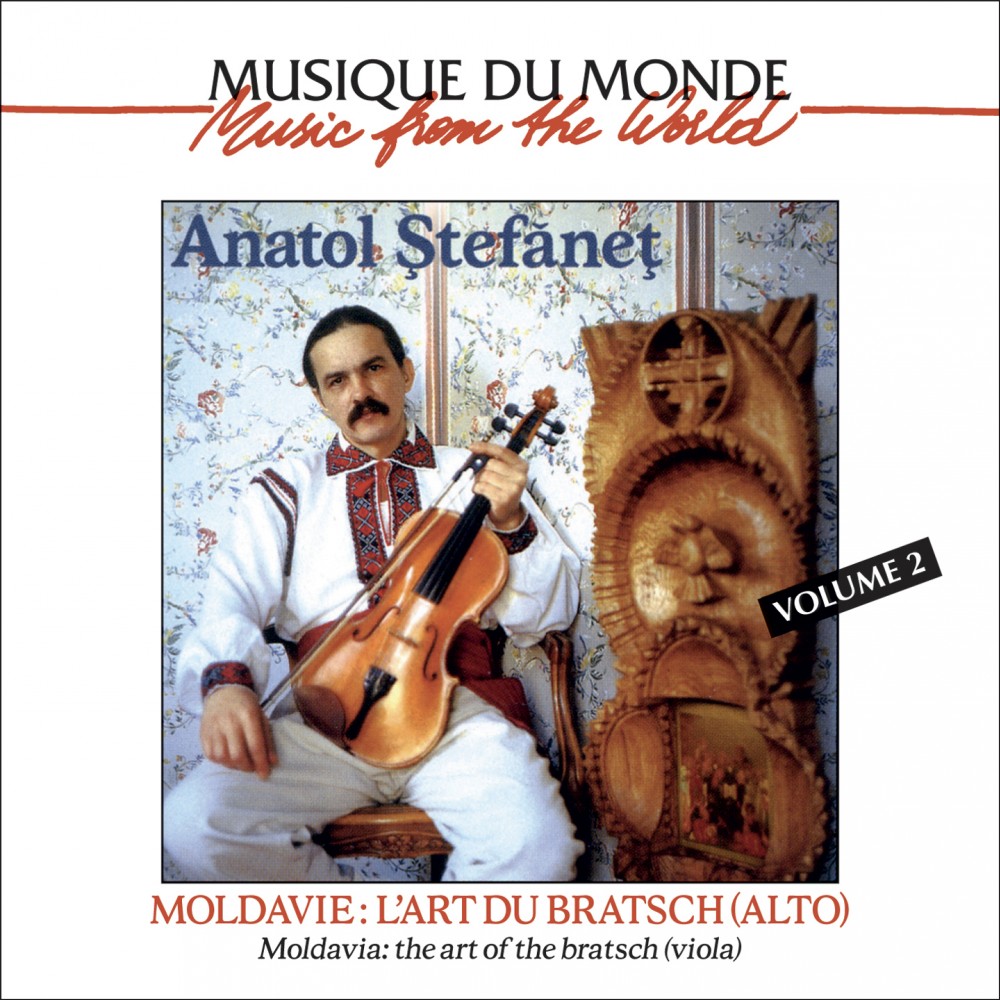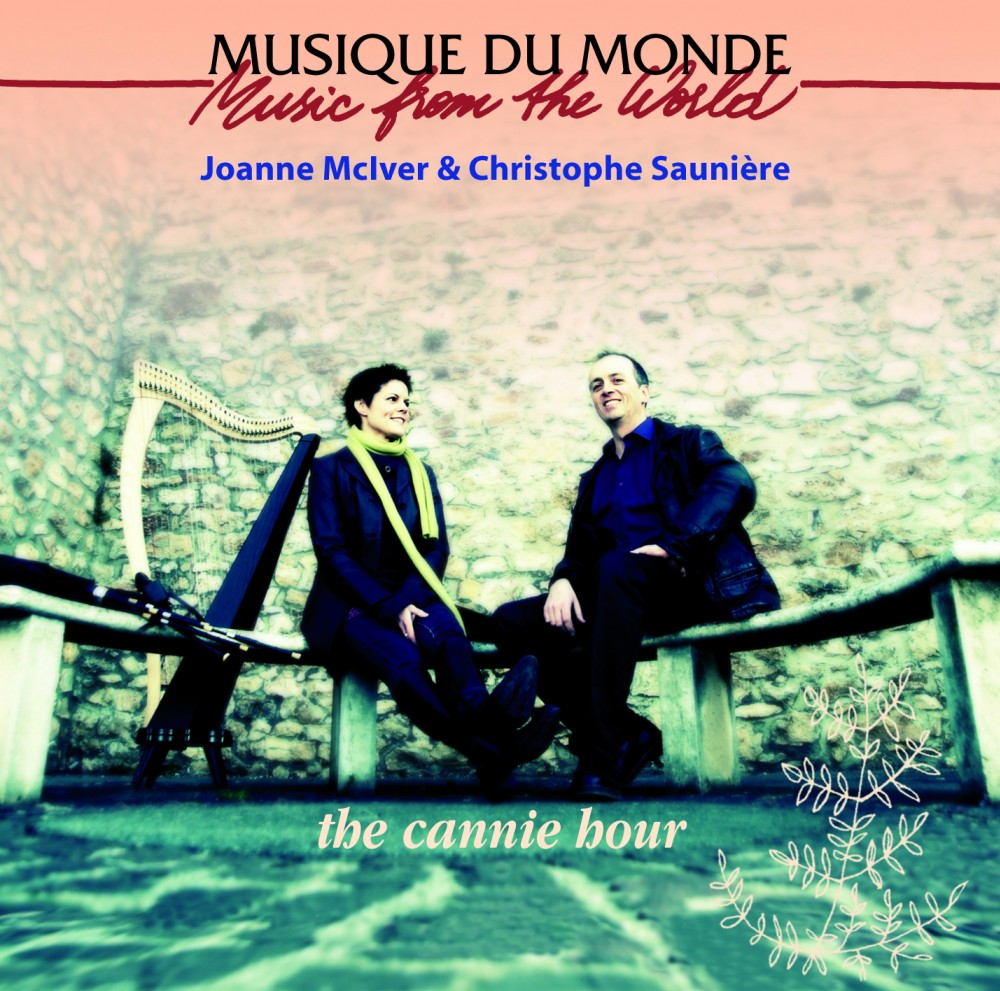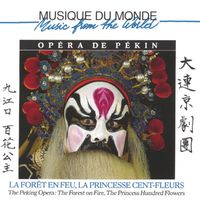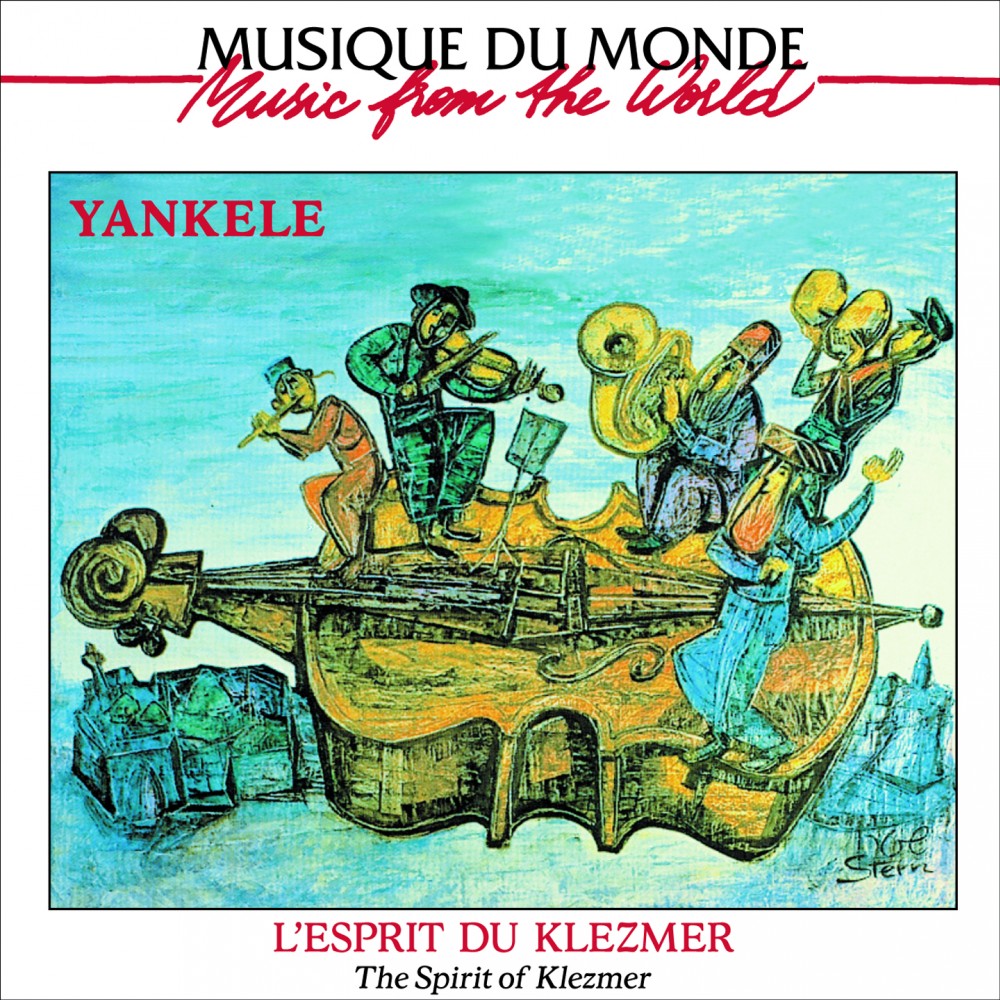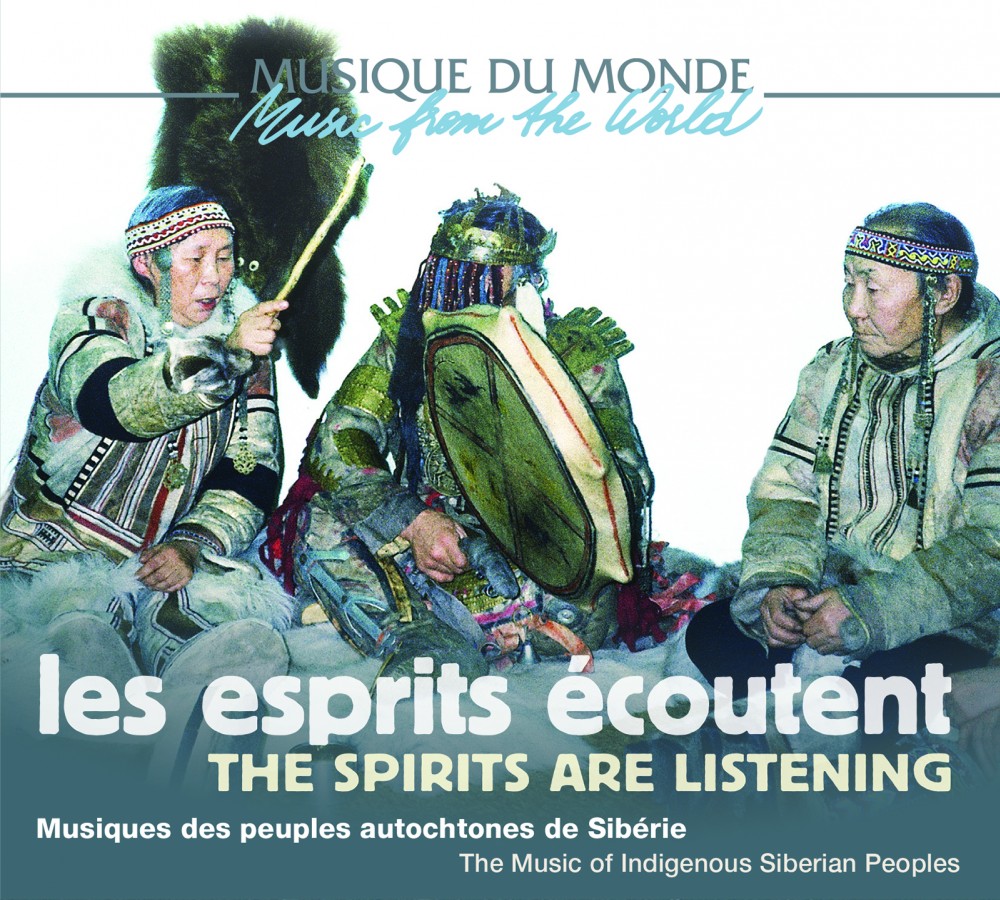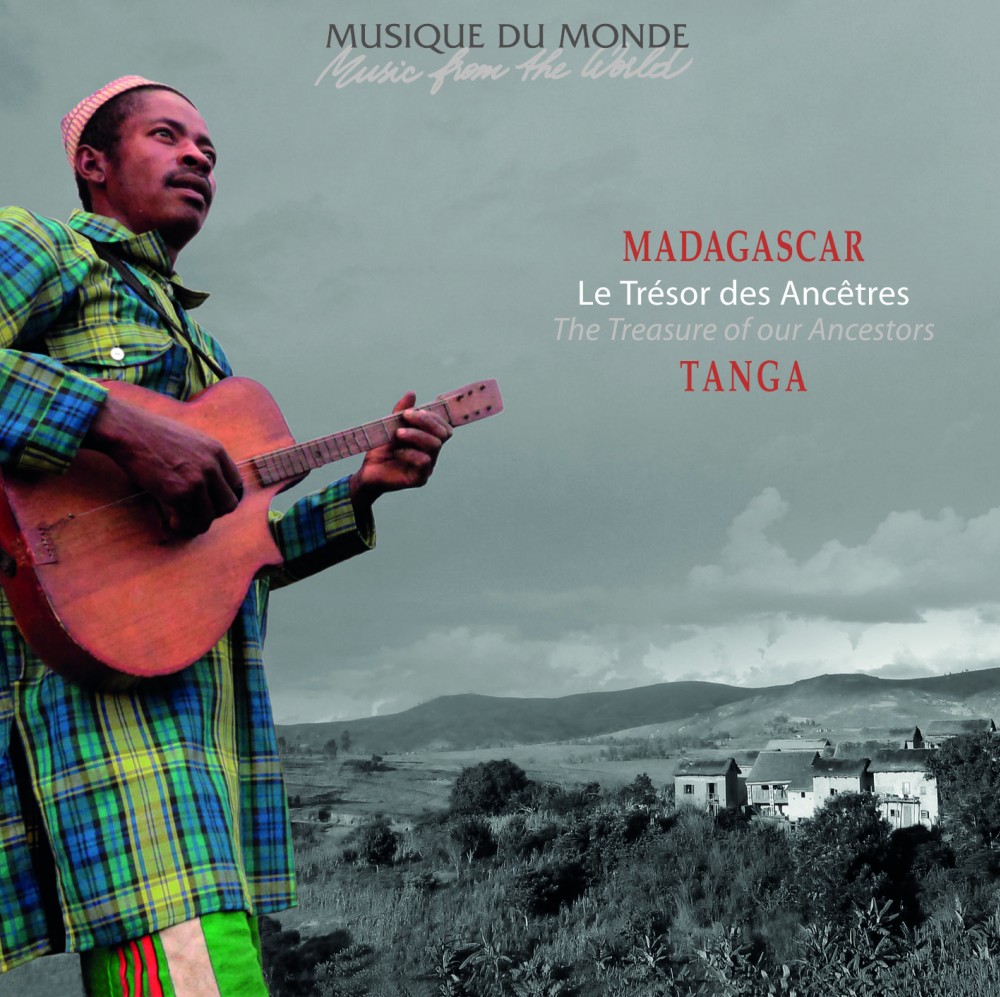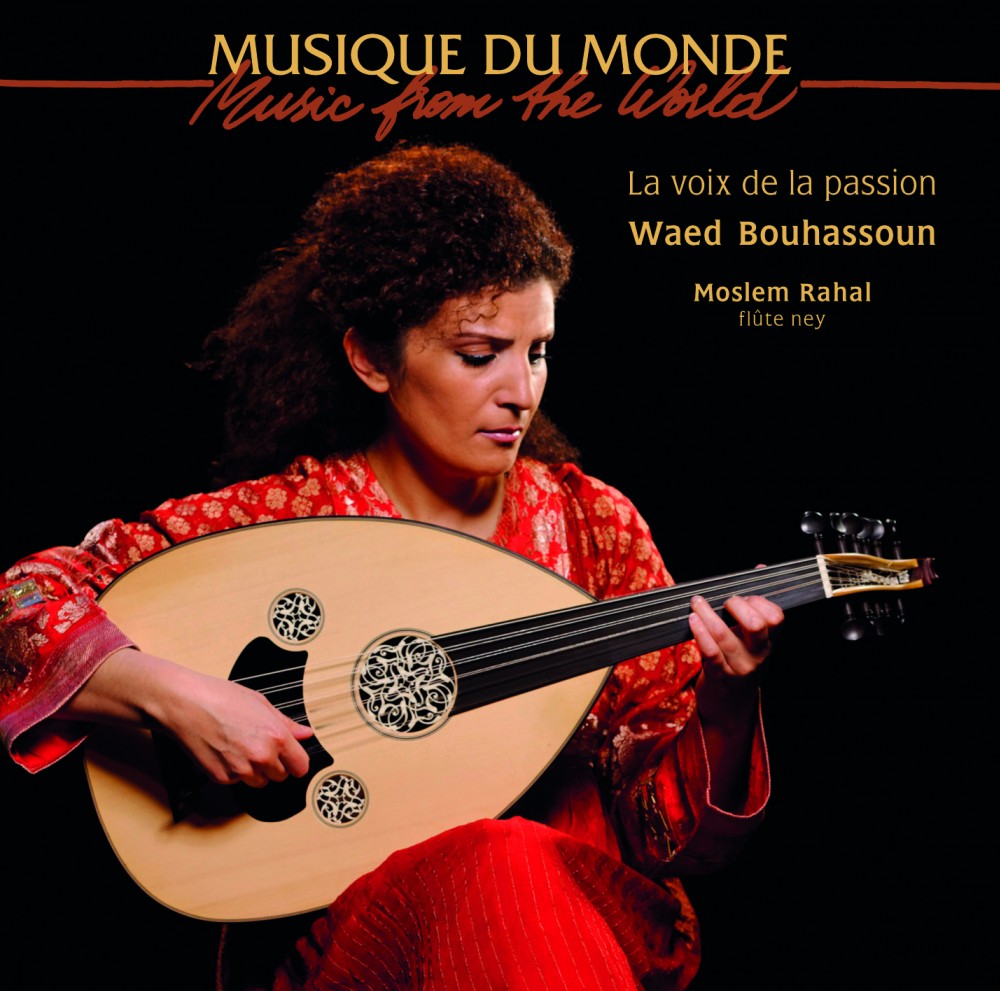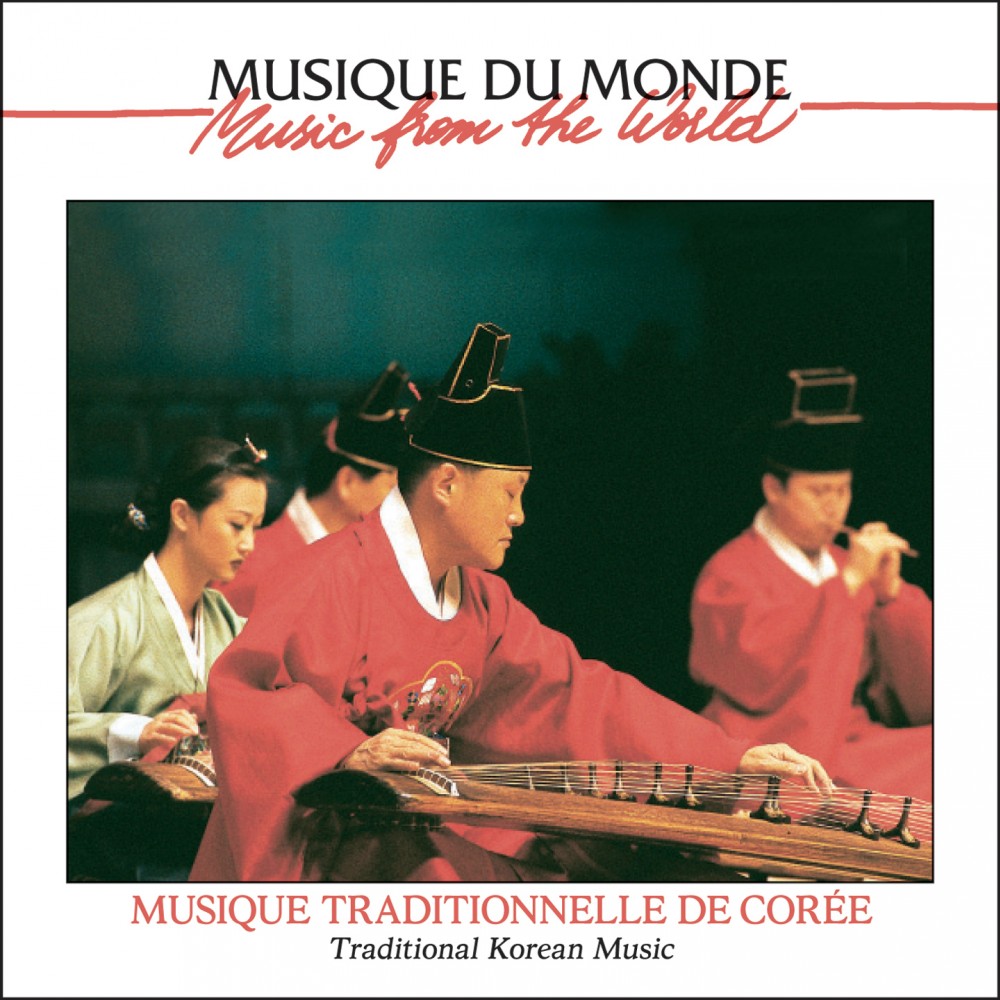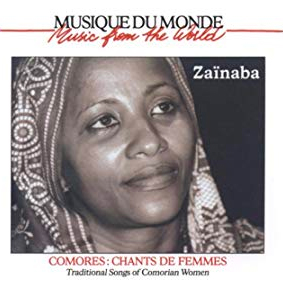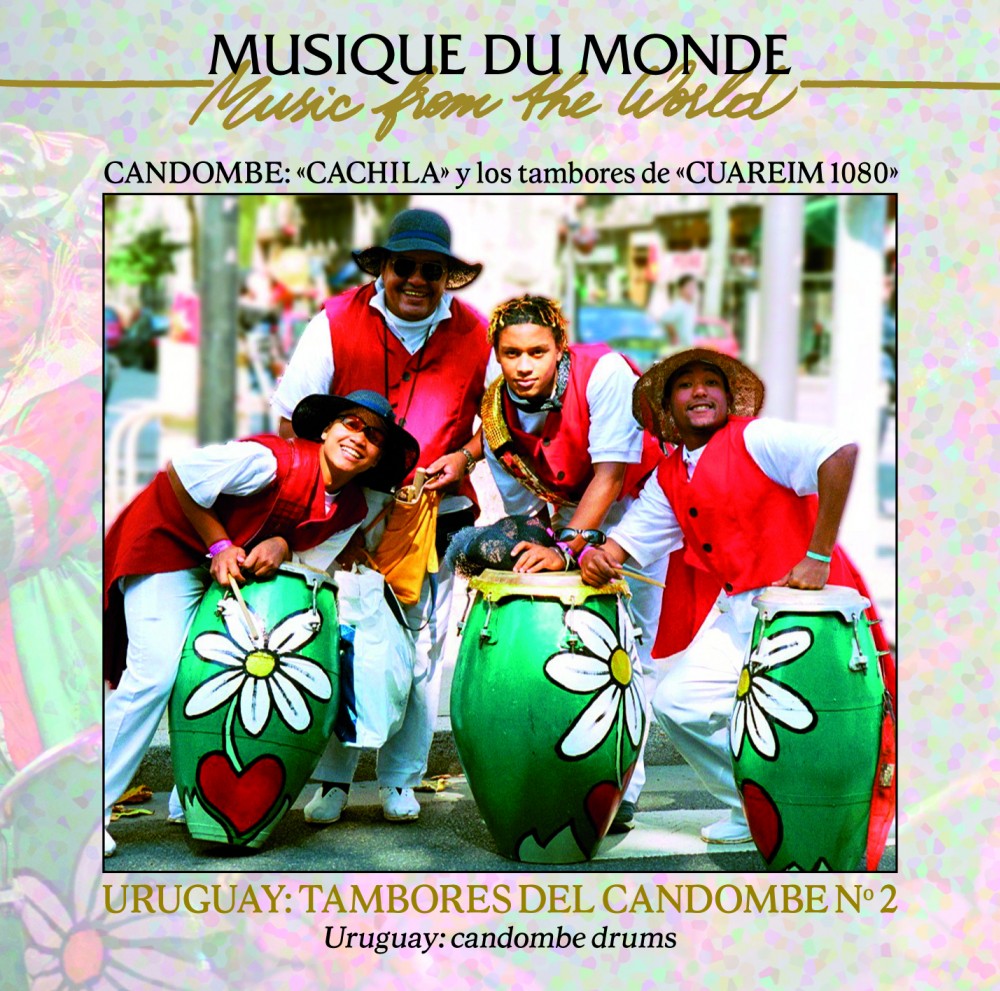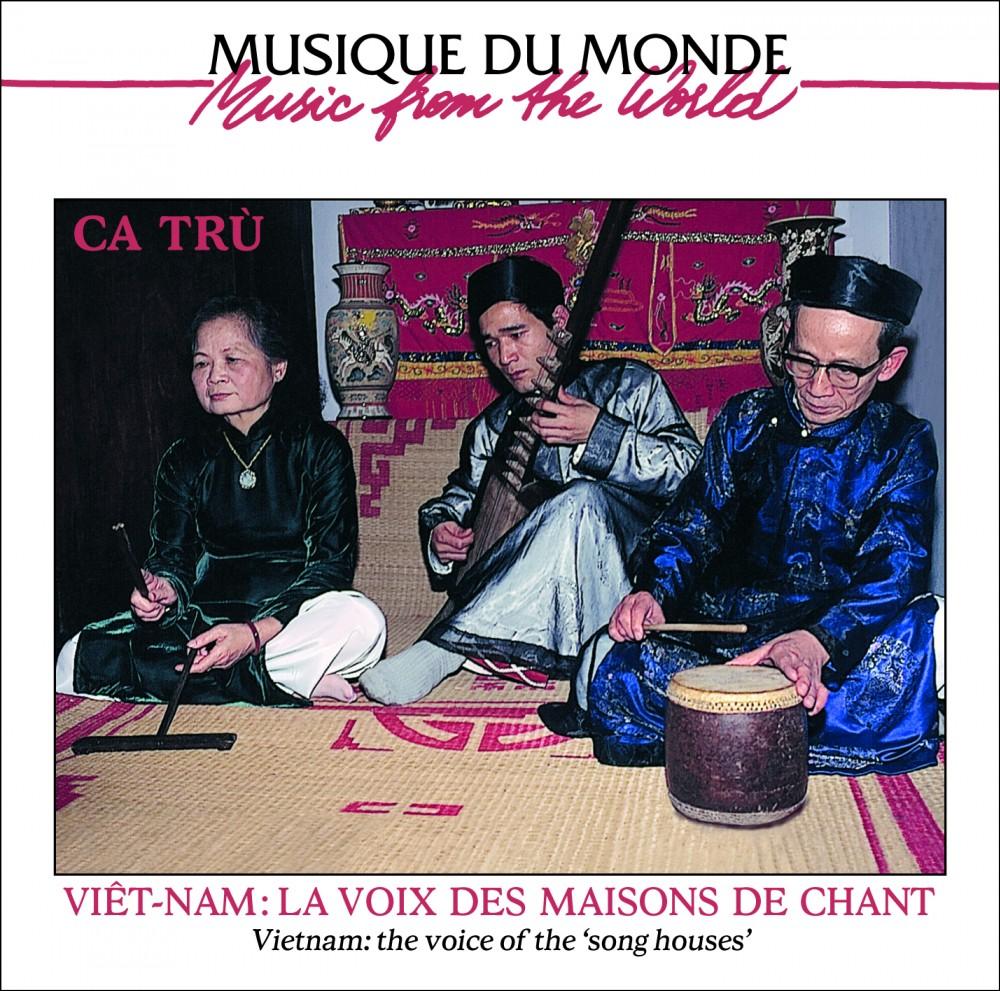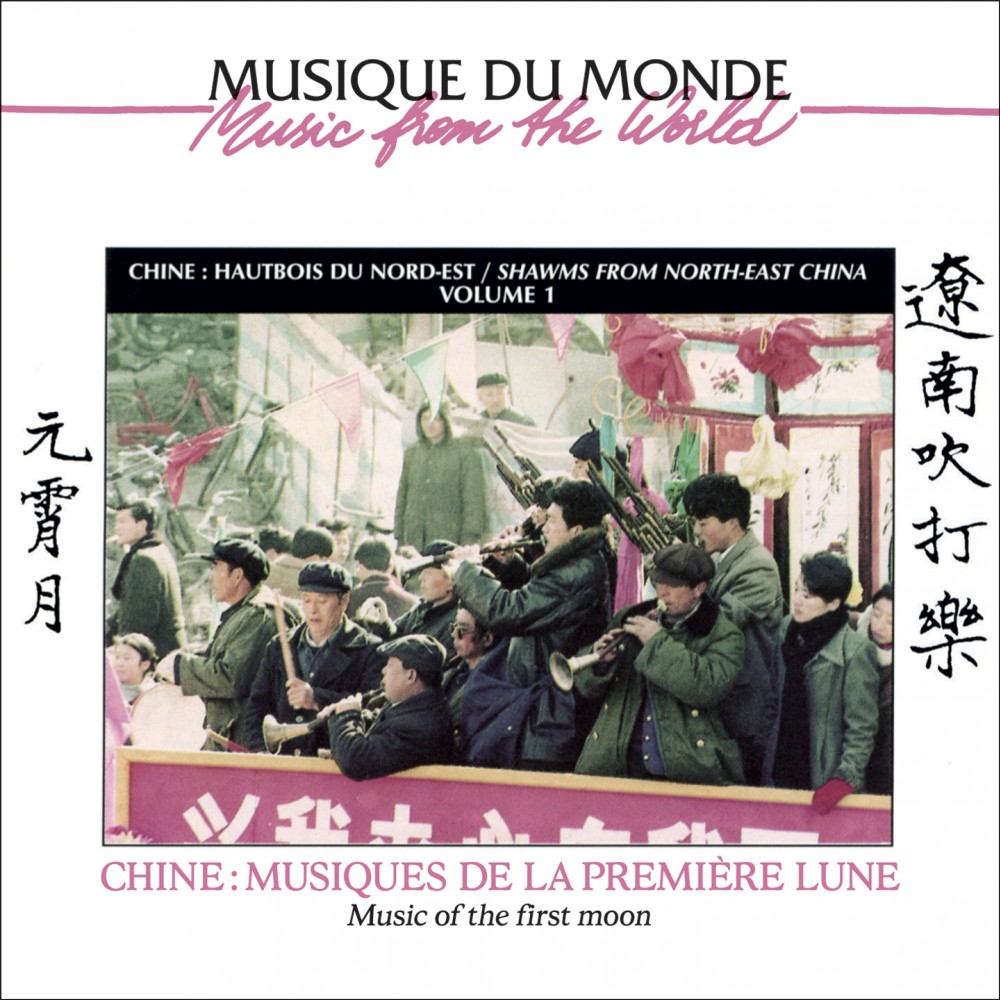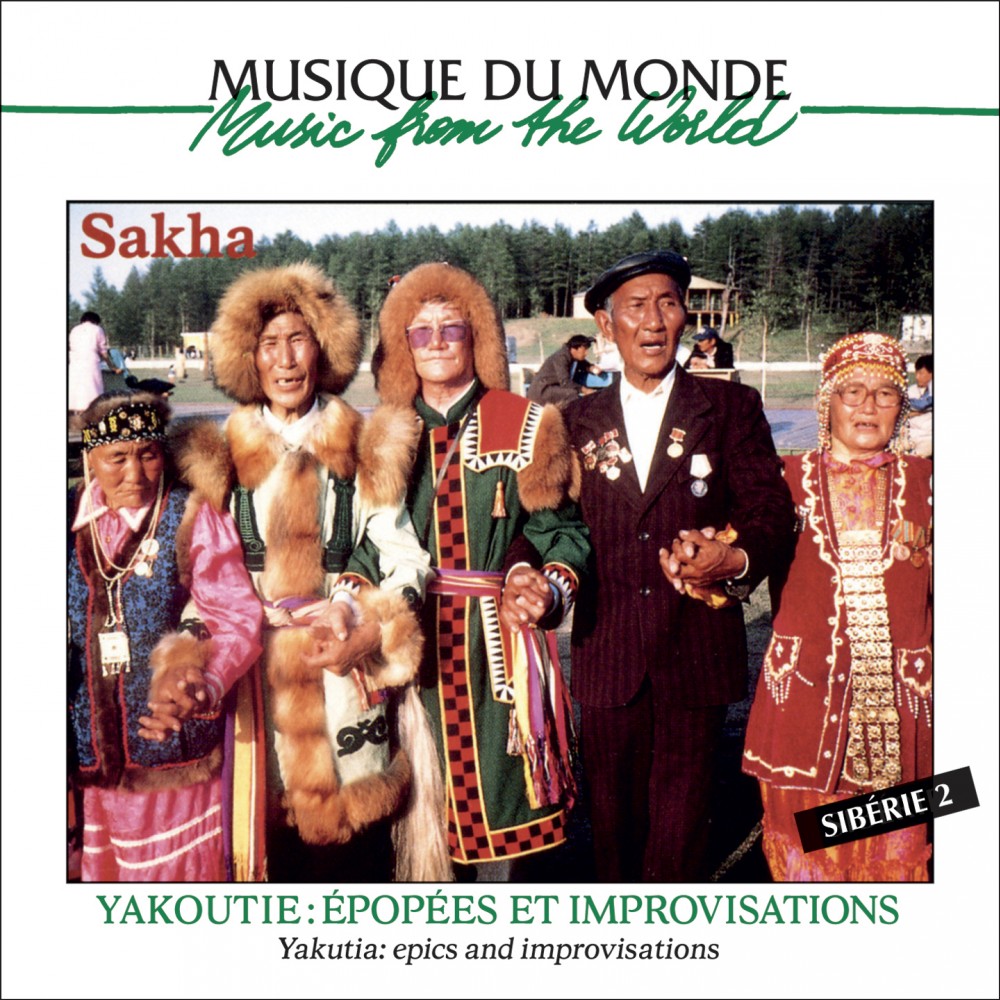Gasba Flutes from Northeast Algeria
Melodies for Gasba Flutes and Bendir Drums
The population diversity in Northeast Algeria (the regions of Annaba, Souk-Ahras and El Tarf, Guelma, Tebessa, Constantine and the Aures) makes it a true place of ethnic, linguistic and cultural blending. This region, which became Moslem once and for all at the end of the 11th century, had shown signs of Christianity as early as the 1st millennium. Furthermore, Northeast Algeria has been marked by a strong syncretism of beliefs, myths and rural folk cults connecting it with the Mediterranean world, as can be attested to by the music linked to the cult of marabouts and, by extension, to the cults of saints. Nowadays, there are two main ethnic groups in Algeria, the Arabs and the Berbers —the oldest community, whom Herodotes designated by the name of Libyans. Both communities have not only been cohabiting in the same space, they have interpenetrated one another. Despite the disappearance of some of their identity characteristics, the Berbers turned into ‘Arabs’ have remained strongly influenced by their ancestral traditions, which they have kept alive. For the main part of Northeast Algeria, traditional music forms are the fruit of encounters between secular Arab and Berber traditions.
Saints, marabouts and zerda.
In Algeria, the rural world is deeply attached to the music related to the cults of Saints, which aim at reinforcing the alliance between the living and the dead. These cults pertain to the old faith practices of the Mediterranean. The proliferation of graves was already a source of wonder to Saint-Augustine (a Berber born in Souk-Ahras) who exclaimed “Isn’t our Africa scattered with the bodies of martyred Saints?” For the Berbers and for Maghreb Islam, these graves have become shrines to celebrate the cults of Saints —such as marabouts who received the people’s piety and were attributed the status of Saints. Alongside the marabouts turned into Muslim Saints, another figure of folk thaumaturgy has come about: the mrabet, the marabouts who are said to be enlightened, even possessed. Both figures are condemned as deviant by religious orthodoxy. In his book “The Cults of Saints in Maghreb Islam, Emile Dermenghem notes that the word ‘marabout’ now applies to “the living saint, the buried saint, the monument at his grave and his successor, as well as all objects, trees an animals that are more or less sacred (…) in Algeria — in short, to almost all the categories of the sacred.”
These cults take the shape of pilgrimages during which zerda are celebrated. This term of Berber origin, used in the East and part of the South of Algeria, refers to the festivities following an important event (birth, healing, end of harvest etc). A zerda takes place either in the zaouia or in sacred open-air places. Originally, zaouia was the name of the place where mystics could retire to meditate, as well as the place where saints were buried.
Many of the most emblematic flute melodies have been created in a zaouia, which is also the gathering place where flautists (gassaba) and percussionists (bneder) perform. During zerdas, marabouts chant incantations until they reach exaltation and trance, vaticinating to a background of plaintive gasba melodies and haunting bendir rhythms. This ritualisation of music in a ceremony that verges on the sacred evokes the religious rites of Greek and Roman antiquity, when priests and priestesses invoked gods and goddesses. The flutes have a paramount role, probably because of the intimate connection between the gasba and the voice. According to the guarantors of this tradition, the gasba flute was created in honour of the marabouts, and many of its most beautiful melodies are dedicated to them.
The Brotherhoods.
Religious brotherhoods have been set up around these marabouts. They first developed in the Middle East around the 10thcentury, then in North Africa, especially in the countryside. Amongst the most important brotherhoods are the Ammaria and the Chabbia in East Algeria.
The Ammaria are descended from the lineage of Sidi Ammar Bou Senna, their patron Saint, himself a flautist, born around 1712, whose grave is at Bou-Hamman, near Guelma. The Chabbia say they are related to Sidi Badreddin Chabbi, hailing from a mystical Islam lineage that arrived from Tunisia around 1560. Chabbi was the descendant of Ahmed Ben Makhlouf, who had established his order in Chabba, Southern Tunisia around 1560, hence the name of Chabbia. Sidi Badreddin’s grave is located in Beni Salah (in the region of Souk-Ahras) on the Mejerda Mountains.
The major characteristic of both the Chabbia and ‘Ammaria is that they have given the gasba and bendir a central part in votive celebrations. Generally, musicians gladly acknowledge a symbolic belonging to the spiritual power of a saint or a marabout. Indeed, it is in the zaouia that they have learnt the most difficult pieces in their repertoire, as well as maraboutic melodies and descriptive music pieces, such as Hwa el Gaïd Chabbi and Hwa el ghoula û bentha.
The gasba repertoire is not limited to rituals. Indeed, the correspondence between the flute and the sacred extends beyond the sole religious domain, bringing a poetical dimension to more pragmatic reality. The melodies called Hwawet te’el ga’da, referring to pieces aimed at the whole attentive assembly, are played after the evening’s prayer. Musicians are acknowledged not only for their mastery of the instrument but also for the number of melodies (hwawet) they can interpret —melodies that a demanding audience is likely to request. Thus, the gasba tunes played during the zerdascannot be dissociated from the audience, which fully takes part in the elaboration of this collective programme. The sacred character of a place makes it a favoured environment to perform music. Places of worship are both a framework for sacred music performances and venues where an important page has been written in the history of secular traditional music in Algeria.
Secular songs
The gasba is not only played in zaouias or during zerdas. It is essential in the accompaniment of secular songs deeply immersed in folk poetry, called melhûn. Songs and poetry are not dissociated, attesting to the attachment to oral tradition, an essential mode of expression amongst the common people: this poetic song genre was often their only cultural baggage. When it is sung, the melhûn can relate the vicissitudes of life or celebrate exhilaration and love. Weddings and baptism ceremonies could not be dissociated from these secular songs. Late at night during such festivities, among an exclusively male assembly, the singers would sing love songs full of poetry. These artists also performed in cafés, accompanied by the rakassat dancers, reputed to be promiscuous, who enliven these nocturnal parties. These cafés were also the backdrop to musical jousts between flautists. However, the early 1990s saw the decline of traditional songs accompanied on the gasba at weddings and baptisms, notably with to the advent of so-called ‘modern’ songs (on the dominating model of rai music from the West of the country), and the explosion of such instruments as synthesizers in orchestras. This weakening was also due to the aspiration of younger audiences, who rejected to social model of their elders, to make room for a mode of expression carried by the wave of singers gathered under the generic term Cheb (lit. ‘young’). Nevertheless, many singers have kept on perpetuating the tradition of songs in which the gasba flute plays an essential part, and now it is even to be found sampled in modern songs.
The gasba has often been limited, wrongly, to the sole function of song accompaniment. This restriction has somewhat concealed a huge wealth of melodies for flutes and percussion. It should be acknowledged that singers were indirect relays for the gasba in Algeria because they had great esteem for this instrument. Yet, oddly, the media and some people in the public opinion have always expressed contempt vis-à-vis ‘gasba’ singers. The example that notably comes to mind is Beggar Hada, born in Beni Barbar, who became the wife of the great flautist Brahim Bendebeche. This disparaging image originally applied to the gasba itself. The instrument of a music of ‘violent’ beauty and telluric intensity, the gasbawas demonised by religious orthodoxy for its role in maraboutic cults. It was just as demonised by some of the public opinion because the secular register of the songs it accompanied —often comical, sometimes provoking— long associated it with an image of decadent music.
Yet, the gasba is the most widespread instrument in Algeria, and as such, it is intimately linked to the country’s folk culture. The beauty of its somewhat plaintive tone colour, and its melodies rooted in the traditional culture help understand why such artists as Béla Bartok (who went to Algeria in 1913), Brian Eno and David Byrne (“New Feet” in the album My Life in the Bush of Ghost, 1973) were so attuned to this music.
THE INSTRUMENTS
The gasba flute
The gasba —from the Arab qasaba meaning ‘reed’, and in the general sense ‘reed flute’— is a flute with a simple mouth hole, specific to Northern Africa and especially Algeria, where it is widely spread with variants in the making and playing techniques. Decorated by pyrography, it is one of the most emblematic instruments of traditional Algerian music. The gasba as can be found in Northeast Algeria has 11 to 14 holes —it is said that Zaoui Barguelil, from Souk-Akras, added a smaller hole, called the merssli, on the top part of the gasba. To tune their instruments, flautists block certain holes with a wax-based substance. This allows them to change mode without having to change flute. It is notably the case in the High Plateaux region.
The musician holds his flute obliquely and blows a large quantity of air with the continuous breathing technique. This is what gives the gasba such a singular tone colour. Despite the seemingly simple appearance of the instrument, its technique is quite complex and requires great dexterity. The flute of age-old musical traditions, it brings to mind wind instruments from Greek-Roman antiquity. The name of instrumental pieces always starts with hwa, which is a generic term used to define the mode. When accompanying a singer, flautists get as close as possible to his voice and melodic formulas.
The bendir.
In Eastern Algeria, the bendir is intimately linked to the gasba, as it is its sole accompanying instrument. Very common in North Africa, this frame-drum is approximately 50cm in diameter, and tensed with goatskin. Inside the frame, two gut strings are diametrically tensed, which give a sizzling sound to the beats. The instrument is held upwards with the left thumb (through a hole pierced on the side of the frame), the right thumb resting on the side of the instrument. Training is done by observing elders performing at zerda. The drummers-to-be must recognize the rhythmic formulas as well as the melodies of the flautists, along with the rich rhythmical developments that accompany them. Furthermore, they must perfectly master the connections between the sung lyrics and the melody. Playing the bendir requires true physical effort, as well as subtlety, creativity and a sense for interpretation.
THE RECORDINGS
In the music performed by the Beni Salah musicians, the bendirs do not start a piece with a rhythm, but rather they fill the sound space and install a climate with drum rolls and dynamic strokes as a kind of introduction. As for the flautists, except on Hwa mrabet Dib, they only play a drone on the mode’s fundamental note, while the leading flute freely develops the mode’s structure.
This way to begin is called I beyet le hwa, which literally means ‘installing the melody’ before introducing the theme of the piece. The lead flute announces the rhythmic structures. Then the flautists, in pairs, start a dialogue (moudawla) and the percussionists take this opportunity to enter. The lead flute then chooses the suitable moment to play a solo and introduce another theme (often including a note from the scale that has yet to be played) while the three other flutes just get back to the mode’s fundamental note. The bendirs must follow and support the flutes while enriching the internal structure of the rhythm. The musicians all end the pieces in unison, on the mode’s fundamental note. This makes up a coda with a very supple structure. Generally and according to the environment of the performance (e.g. the zelda) the musicians often engage in musical jousts for the audience’s greatest pleasure.
To accompany songs, the flautists follow and support the singer, staying as close as possible to his melodic formulas. In the interludes, they enrich the mode’s internal structure. One should note the precision of the flute interventions, in both the free and rhythmic songs.
In the melodies and songs recorded here there are various mode types pertaining to these musical traditions, such as the minor mode, which we shall call ‘harmonic’, the altered pentatonic mode, the minor and major pentatonic modes, the major ‘harmonic’ mode etc. One of the characteristics that make the richness of the gasba playing style is the use of micro-intervals (smaller than the half tone of the Western tempered tuning).
These gasba melodies are sometimes based on compound measures, and rhythmic changes take place during their development. One can note that a piece often starts on a rhythmic cell based on the strong beat, and shifts to the weak beat when the rhythm changes. The rhythms are 4/4, 6/8 or 10/8, the pulse shifts from binary to ternary with hurried or trailing strokes, bringing about a swaying feeling that is both lame and very expressive.
THE MELODIES AND SONGS
1- Hwa al-Gaïd Chabbi (The Melody of Kaid Chabbi)
Music by Amar Bendebeche and Rabah Talmoudi, 6/8, 4/4, 6/8, ‘harmonic’ minor mode
(Mr Raïs Chabbi introduces the place where the recording is made)
In northeast Algeria at the time of the French presence, a Kaid (pronounced /gaïd) was a notable who played the role of a mediator between the central authorities and the members of his community. This piece in the honour of Beni Salah’s Gaïd Chabbi was created by Amar Bendebeche, his sons Ali, Majid and Brahim, as well as Rabah Talmoudi ouled Zohra, all of them renowned Chabbia musicians belonging to the Debebcha tribe in the region of Souk Ahras. A few days before he died (around 1940), the Kaid had gathered the Debebcha, asking for “not only the wailing of women but also the lament of the flutes” at his funeral (it should be brought to mind that Islam condemns musical accompaniment at funeral processions). A melody was thus created, inspired by the sounds of the mourners, a then widespread tradition. (This antique practice mentioned in Homer’s Iliad, was deemed impure and condemned by orthodox Moslems.) The mourners played a central part at funeral ceremonies, as they directed the wailings of the women (mendba). In this region, mourners worked in pairs, alternating in order to build ‘a dialogue of cries’ and sweeping all the women along in their laments. They cried and wept, scratching their faces, until the men took the deceased to the graveyard.
The gasba flutes are weeping for the dead man in this melody starting at the Kaid’s house where the body has been washed and wrapped in a shroud. The lead flute expresses, with much restraint, the lament and tears of the audience. The body is then carried to the graveyard, accompanied by the whole family.
2 - Hwa Mrabet Dib Chabbi (The Melody of Marabout Dib Chabbi)
Traditional, 4/4 rhythm, ‘harmonic’ minor mode
This melody was made famous by the Debebcha, notably Ali and Brahim Bendebeche. It was played during zerda in Beni Salah. Marabout Dib was so moved by this piece that now it bears his name. Dib was much liked and respected, he loved the gasba flute and was known for his visions. In the beginning of the piece, two flautists play the drone and before the bendirs step in, a dialogue (moudawlai) sets itself up between the lead flute and the fourth flute.
3 - Hwa ‘ajmi Chabbi mab’ouj (altered pentatonic Chabbi melody)
Traditional, 4/4 (with some ternary accents), altered pentatonic, minor mode.
This melody is mostly played at night in Badreddine, during zerda. The lead flute starts in a pentatonic mode ('ajmi) until the bendir drums enter. This is when the mode shifts, with a modulation, to mab’ûj (altered pentatonic), plunging the audience into an antique-sounding world.
4 - Addît ’la ouêd Seybousse (I Was Going by the Seybousse River)
Written by Sheikh Bouragaâ, free metrics, ‘harmonic’ minor mode.
Annaba’s singer Sayfi Mohamed Tahar shows his great vocal power, suppleness and agility. He makes use of appoggiatura and arabesques, his notes of passage are restrained and well defined. The mode, called Rakrouki Souk-Ahrassi, the singer’s tone colour and this style of lamento, all are characteristic of the local traditional highland singers. In this song, Sheikh Bouragâa, one of the region’s traditional song champions, born in Souk-Ahras, describes the despair of a man in love while he walks along wadi Seybousse. He asks the gasba to play its most beautiful tune in order to win back her love. Singers always adapt this type of song to their audience.
5 - Galet Khroubi (She Said Khroubi)
Music by Marir Tayeb, 4/4, minor mode
In this song, the flautists use the khroubi (from Khroub, south of Constantine) mode, whose best-known representative is the singer Marir Tayeb. It relates the story of a young woman from the Ouled Bechih tribal group (in the region of Souk-Ahras). She is so much in love that she is ready to endure pain and humiliation as long as her beloved notices her. The flight of the flutes (tarha) at the end is characteristic of the region of Kef, where it was spread by the flautist l’A’yechi. The musicians add rhythmical accents of chaoui influence.
6 - Nawba Salihin (The Nuba of the Saints)
Traditional, 4/4 with motifs in 8/4, 10/8 and 6/8, ‘harmonic’ major mode
For the ‘Ammaria as well as the Chabbia the term nawba applies to instrumental music directly linked to the passing of time, and it takes its full meaning during zerda. Amongst the ‘Ammaria of Nechmaya, musicians start the zerda with the morning nawba Salihin, other nawbat following until dusk. All these are the heritage of a folk tradition.
7 - Tahwissa followed by Hwa Oued Zenati (a ballad, followed by The Melody of the Zenati River)
Traditional, 6/8, ‘harmonic’ minor mode.
This piece starts with a ballad for the sole flutes. In northeast Algeria, this type of piece without bendir is very common. The sound and tone colour of the gasba display their most primitive aspect. One can hear the flautists’ glottal stops as they blow out powerfully and continually. Then comes the hwa oued Zenati (about the Zenati River), a rhythmic and almost repetitive piece from the region of Guelma, leading to trance.
8 - Ouled Hmida (The Children of the Hmida Tribe)
Traditional, free metrics, minor pentatonic mode
Ouled Hmida is in the Rakrûkî Tebessi mode, referring to the Rkârka. Like the Ouled Hmida (Nememcha), the Rkârkabelonged to the great tribal ensemble of the Ouled Sidi ‘Abid, from the name of the marabout who started this great ethnic and religious group in the region of Tebessa in the 7th century. The Chaoui (meaning shepherd in Arabic) singer Abdelmajid Boudjil has a very dense, nasal tone colour and, like Sayfi Mohamed Tahar, remarkable sound power. He stresses and stretches each word as if to extract all its expressive force and meaning, hence he term rak (lit. ‘press’). This song about thwarted love reveals the depth of a restrained roar and lament. Even though he sings in Arabic, all the harsh glottal stops render the force, cries and frailness that characterise the Berber voices of the Chaoui country. To back up his song is a duo of gasba flutes playing in unison.
9 - Hwa Barbari khfîf (a melody known as Beni Barbar)
Traditional, instrumental dance, 4/4 with ternary accents, ‘harmonic’ minor mode shifting to major and back to minor.
Hwawet (airs) known as Barbari refer to the Beni Barbar tribe (in the region between Tebessa and Souk-Ahras), famous for their instrumental repertoire, notably women wedding dances, generally lively pieces with many rhythmical changes. The two Chaoui flautists are in unison in the beginning of the piece but when the lead flute plays the melody in high pitch, the second flutes play it in the low register, a specificity that is not to be found in Beni Salah or the Annaba region.
10 - Hwa tâ’ el-Ghoula û bentha (The Air of the Ogre and her Daughter)
Traditional, 10/8, 4/4 binary-ternary, ‘harmonic’ minor mode.
This descriptive piece was often played by older flautists such as the Bendebeche. To some elder musicians, it is just a dialogue between two women with savage instincts. To others, this air is so old it refers to the myth of the ogre woman called Ghoula —a myth perpetuated in Algeria’s folk culture, this melody expressing a face-to-face meeting of the ogre and her daughter in the grotto. Elder Chabbia flautists transposed into music this dialogue of great beauty, from which a primitive dance seems to be stemming.
11 - Hwa tâ’ Bnêt el-Khalêt (The Air of the Nieces)
Music by the Bendebeche family, 4/4 and 6/8, ‘harmonic’ minor mode.
According the story told by most Chabbia musicians, once upon a time the Debebcha were playing in the Beni Salah forest when they heard the voices of young women answering their gasba. The musicians went on playing and improvising, following these voices. The girls were the Kaid’s nieces. The flautists play in unison in the introduction, then comes the dialogue (moudawla) between two pairs of flautists.
12 - Hwa ‘ajmi feddaoui Chabbi (pentatonic melody of the Ouled el Fadda Chabbia)
Traditional, 6/8, major pentatonic mode
Feddaoui refers to the village name of the Ouled el Fedda, reputed for their great zerda and their flautists. Hwa ‘ajmi feddaoui is characterised by its mode, called ‘ajmi msserah, meaning non altered pentatonic. As is the case with many melodies, this piece is especially played for maraboutic dances amongst the Chabbia. The melodic and rhythmic force gradually enriches it, providing energy and fury.
Halim Dekkiche
